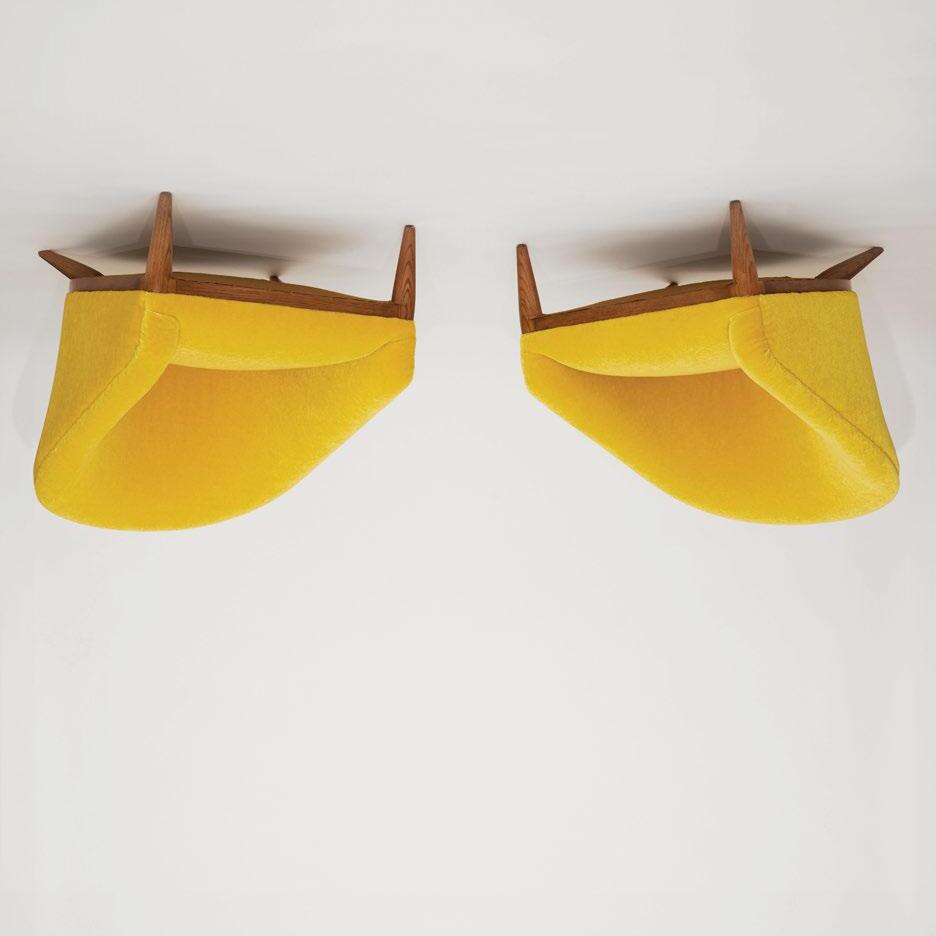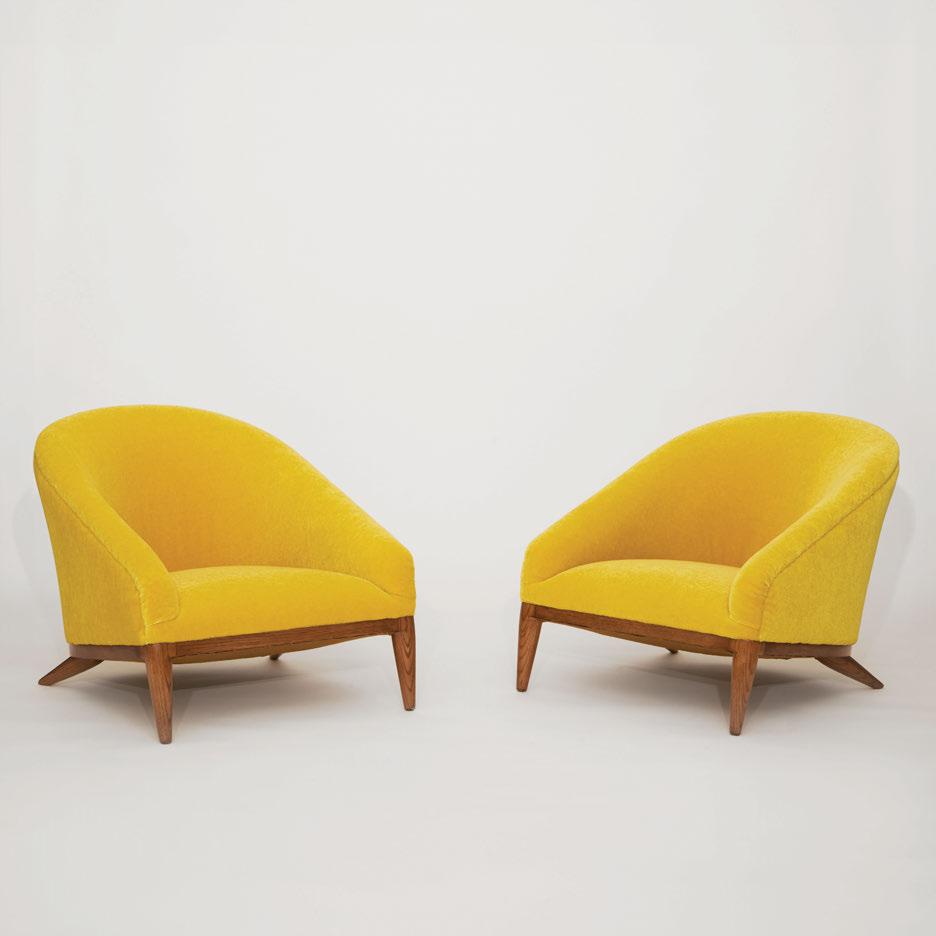October 25, 2024


October 25, 2024


• Q&A: Emily Brandenburg & Matt Greig
• Blast To The Past! Pook & Pook’s Largest Ever Sale Nets $3.9 Million
• Fall Aboard! The 48th Annual Antiques In Schoharie Show
• New-York Historical Society— Man’s Best Friends On Display In ‘Pets In The City’
• Club News
• The Locals Love Lebanon— 57th Annual Antiques Show Brings Everyone Home
• Folk Art Collection Draws Bidders To Hudson Valley Auctioneers
• Elephant’s Trunk Is An All-Weather, Three-Season Flea Market
• Heckler Glass Auction Celebrates Classic Forms, New Discoveries
• Swann Brings Back The New York Sale To Celebrate 400 Years Of The Big Apple

b iddinG by i nTerneT and P hone • n oV . 6 Th To n oV . 15 Th iddinGby nTerneTand ThTo



































(riGhT) exceedinG are and





mPorTanT six-Gallon sToneWare crockWiTh elaboraTe cobalT lion decoraTion, sTamPed “f.sTeTzenmeyer. / rochesTer,n.y.,” circa 1855. ofTadmiredandreGardedamonG ThemosTfamous americanlion-decoraTed sToneWarePiecesknoWn. measurinGan imPosinG 11 1/2” aroundThecurVeofTheVessel’sfronTby 9 1/2” Tall, ThedecoraTionexhibiTsThebold, enamel-likesliP-TrailinGPrized inTheProducTsof rochesTer’smid 19Th cenTurysToneWareindusTry. GiVenTherariTy anddesirabiliTyofThesubJecTmaTTerasWell asThesizeandTranscendenTqualiTyofThe desiGn, ThiscrockisreGardedasThePoTTery’s finesT-decoraTedPieceknoWn. h 14”.
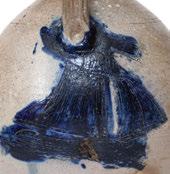

fall2024





( efT) xcePT
















xcePTional six-Gallon sToneWare crock laboraTe cobalT sTaGand doe scene, “J. & e. norTon / benninGTon, circa 1855. ThesubJecTmaTTer, size, and exTraVaGanceofThedesiGnranksThisWork amonGThefinesTexamPlesof norTonfamily sToneWareThaTWehaVeeVeroffered. relaTiVely feWexamPlesfromThisPoTTeryareknoWn feaTurinGacoVeTed “doubledeer” moTifand ThelarGesizeofTheVesselcomPoundsTheVisual imPacTofiTsdecoraTion. ThisexamPlefeaTures suPerbfirinGandincludesTheliGhT-colored clayandbold, enamel-likecobalTforWhichThis PoTTeryhasbecomeknoWn. anouTsTandinGWork inallresPecTs. h 14”.
WiTh labora sTamPed VT,” exTraVaGance amonG The sToneWare T fe examPles feaTurinG The larGe size imPacT of iTs suPerb firinG clay and bold oTTery has in all resPec


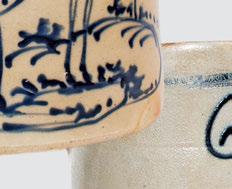
sToneWare & redWare aucTion b iddinGby i nTerneTand P hone n oVember 6 ThTo n oVember 15 Th (P
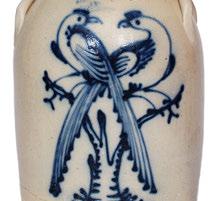


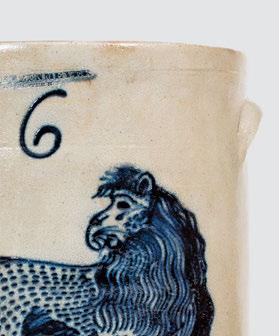
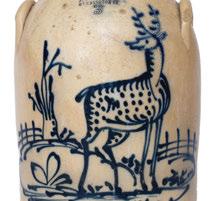

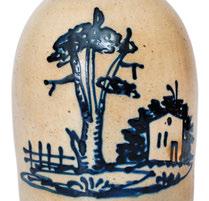


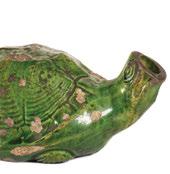

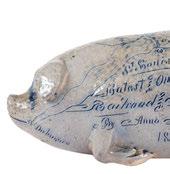


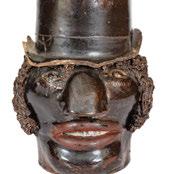
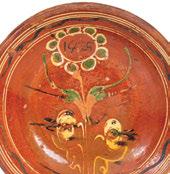
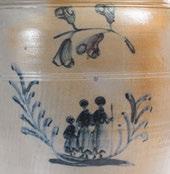

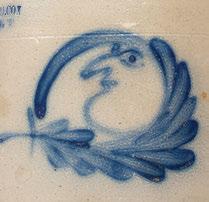
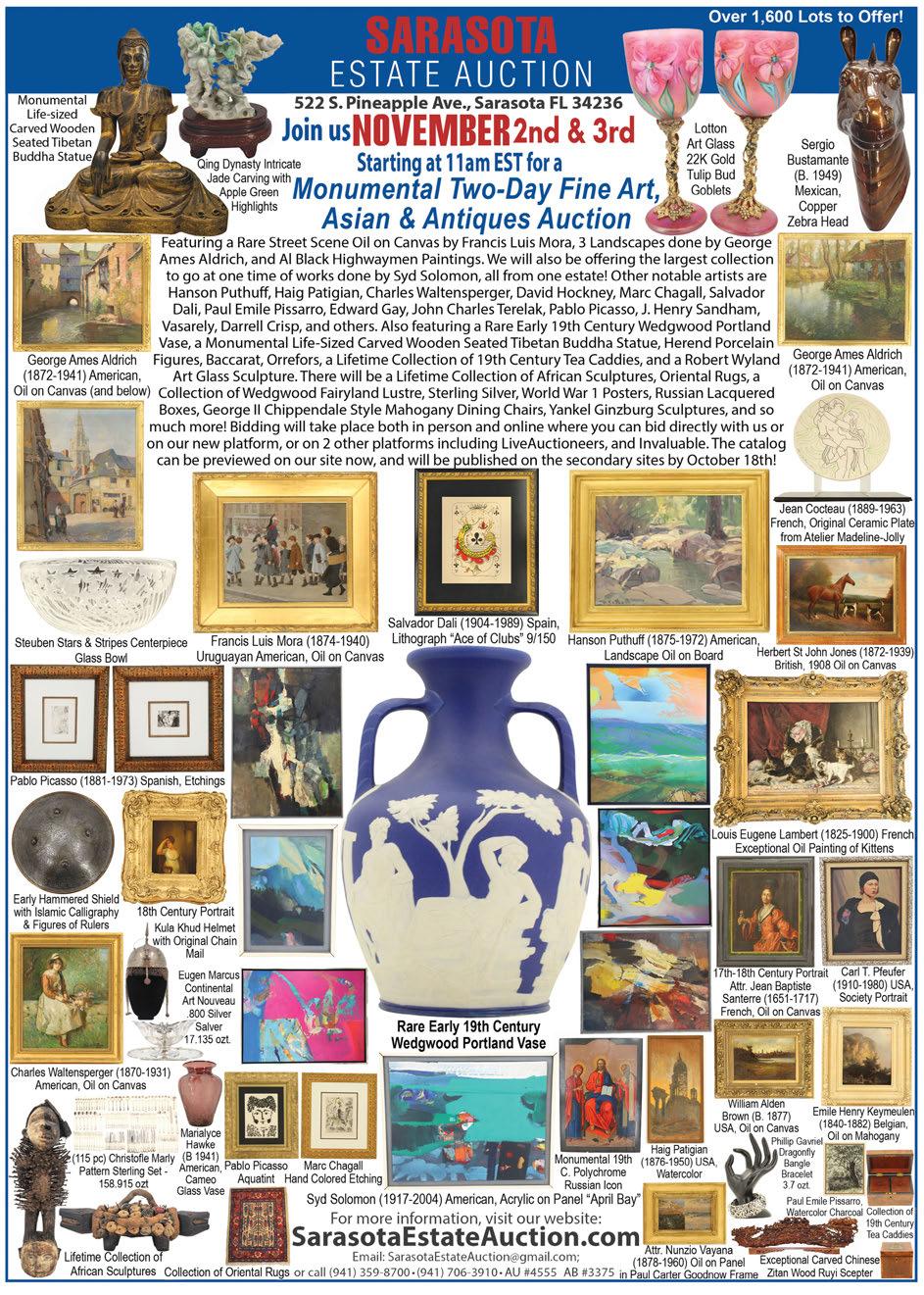
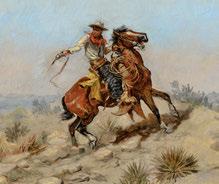
Charles M. Russell (1864 – 1926)
The Rattlesnake (1897)
oil on board, 12.25 × 18.5 inches
Est.: $250,000 – 350,000

Maynard Dixon (1875 – 1946) Where’s Them Hosses? (1944) oil on board, 12 × 16 inches
Est.: $80,000 – 120,000

Jamie Wyeth (b. 1946)
Alvaro’s Mower
watercolor on paper, 27 × 18.5 inches
Est.: $20,000 – 30,000
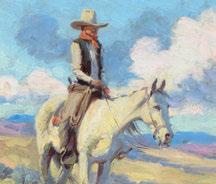
E. William Gollings (1878 – 1932) Cowboy on Horseback (1922) oil on canvas, 10 × 7 inches
Est.: $30,000 – 50,000
Fine Western & American Art

William R. Leigh (1866 – 1955)
Riding Cowboy (1915)
oil on board, 12.5 × 16.25 inches
Est.: $80,000 – 120,000

John Clymer (1907 – 1989)
Working Late oil on canvas, 28 × 44 inches
Est.: $15,000 – 25,000
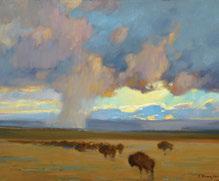
Carl Rungius (1869 – 1959)
Approaching Storm oil on canvas, 12 × 16 inches
Est.: $20,000 – 3,000

Kenneth Riley (1919 – 2015)
Winter Solstice (1997) oil on canvas, 52 × 46 inches
Est.: $60,000 – 90,000

Thomas Hart Benton (1889 – 1975)
White Bluffs, Buffalo River (1973)
tempera on board, 9.5 × 14 inches
Est.: $150,000 – 250,000
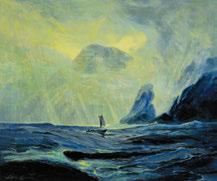
Sydney Laurence (1865 – 1940)
Knoll’s Landing oil on canvas, 20 × 24 inches
Est.: $20,000 – 30,000

Henry Farny (1847 – 1916) Crow Warrior (1897) gouache on paper, 10.5 × 17 inches
Est.: $60,000 – 90,000
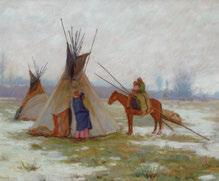
Joseph Henry Sharp (1859 – 1953)
Winter on the Crow Reservation (1904) oil on canvas, 18 × 27 inches
Est.: $60,000 – 90,000
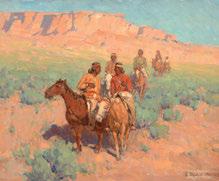
Edgar Payne (1883 – 1947)
Navajos on Horseback (ca. 1930) oil on canvas, 27.5 × 33.5 inches
Est.: $100,000 – 150,000

Frederic Remington (1861 – 1909) “Two-Bits” (ca. 1889) oil en grisaille on board, 24 × 18 inches
Est.: $80,000 – 120,000

Frank Tenney Johnson (1874 – 1939)
Trail of the Paleface oil on canvas, 16 × 22 inches
Est.: $80,000 – 120,000
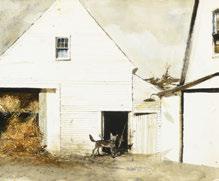
Andrew Wyeth (1917 – 2009) Blueberry Hay (1982)
watercolor on paper, 12 × 15 inches
Est.: $30,000 – 50,000
The 2024 Live Online Auction to be held Saturday, November 9 is now available for preview. Works from the Robert D. Reed Collection will be featured at the 2024 Live Online Auction. Visit our website at cdaartauction.com 208-772-9009 • info@cdaartauction.com

Readers who follow the Americana Hub and related Facebook websites will be familiar with — and possibly friends with — Matt Greig, who has been selling on Facebook and other social media sites for more than two decades. Emily Brandenburg is a business and social media strategist and web designer who has worked with antiques dealers, organizations and shows since 2018. Together, the couple have created a website and online selling tutorial aimed at helping folks use social media to sell online. Antiques and The Arts Weekly checked in with the couple for some insights into what tips and tricks their course offers and how they got started.
Matt, when you started selling online in 2018, what platforms were you using?
MG: So, I’ve actually been selling online since 2001.
I first started with eBay and that was the only way I sold online until about 2010. Around 2010, I started selling some on Facebook and then on an online antique bottle community, but sales were sporadic through both. In 2014, I joined Instagram to post about my upcoming trip to Brimfield. There were very few antiques dealers on Instagram at the time, definitely nobody that I did walled shows with. I like to tell people I posted inconsistently on Instagram for a year before I sold anything and probably two years before I sold five items total. By 2018, I was more consistent in posting and would sell one or two items a week. By 2019, I was up to three to five items a week because I was posting five to seven times a week. Now, selling five items is a pretty good, but not great, week for me on Instagram.
I still use eBay and my website (www.matt-greigantiques.squarespace.com) but the majority of my sales every week are on Instagram followed by Facebook (mostly Facebook groups). I prefer social media because it’s cheaper and I can speak directly to an audience that likes my style of merchandise. The course goes into how to build a following of your ideal clients.
Tell us more about this course on selling on social media and what prompted it?
EB: I have had a social media and web design agency since 2018 and my very first clients were antiques dealers. I saw a real need for a step-bystep course that will help dealers understand how to use social media for the antiques business, by people who get it! While my business now works more with female entrepreneurs, it made perfect sense to combine forces with Matt and create a course together, as he’s been selling online regularly since 2018. We have constantly seen just how frustrating it can be for dealers to master a new kind of technology and we genuinely want to see them succeed because we know they can! An online course felt like the perfect way to teach these important concepts, as marketing and business has changed so much in the past four years.
Where will this course be available and who is your target audience?
EB: The course will be solely online and readers can purchase access through our website (www.sellingantiquesandvintage.com) so users will be able to access it from any device and they will have lifetime access to go over the material as often as they need. Our ideal clients are antiques and vintage dealers who really want to use social media for their business but don’t know how. We break the course down into four different modules with a series of short, seven to 15 minute long videos, based around the Algorithm, Content, Strategy and more! It’s also the beginning of a series of courses we are going to create all about helping dealers sell online. While this one will be specific to selling on social media, we have plans for courses on how to create your own antiques website, how to use email marketing for antiques dealers and more!
What are some common mistakes people make when selling online?
MG: There are lots of common mistakes sellers make selling on social media. For example: posting a handful of times and thinking it doesn’t work. Just like anything else, you need to put a little time into it to see some results. But that doesn’t mean it’s not useful or doesn’t

work. Selling on social media does work, and it works really well. You just need to know how to do it. Other problems are simply not using the right platforms, not having a strategy or just misunderstanding the platforms. Our course works to correct those mistakes.
Are there costs associated with selling online that many people aren’t aware of?
MG: The biggest cost associated with selling on social media would be running ads to boost your following. Of course, if done incorrectly, this will not help sales and cost a lot of money. Some people still mistakenly buy followers, which hurts you with the algorithm as well as a waste of money. Besides those options its mostly free to sell on social media (some Facebook groups charge sellers or ask for a cut, but I don’t use those groups). Online payment processing costs a fee for running a credit card, but that fee is the same as taking credit cards at a show. The best part about selling on social media is that these platforms are free. Unlike eBay, Etsy, Chairish, etc, that take a huge cut. Social media platforms don’t do that and it’s a great way for dealers to connect with a unique audience.
Are there one or two primary misconceptions or pre-conceptions people have about selling on social media? What are they?
EB: Many dealers think it’s too hard, or they’re too old to learn, and those are just simply not true, and that’s why we’re here! To help take the frustration out of harnessing the power of social media and make it easier to understand. Matt has been selling anywhere from three to eight items a week on Instagram for the past few years, and we want to share that knowledge to other dealers. It doesn’t have to be hard, in fact, it CAN BE FUN, and we can’t wait to share that with dealers to show them what’s possible.
What sets your course apart from others that might be available?
EB: There are obviously plenty of courses out there on how to sell on social media but ours is the ONLY course created by people who know the antiques business and I think that’s what really sets us apart. We both grew up in the business, know antiques in and out and have been actively selling online ourselves for years.
—Madelia Hickman Ring
Periodicals Postage Paid at Newtown, Connecticut 06470
R. Scudder Smith, Founder (1963) Helen W. Smith
Sherri Smith Baggett Co-Publishers
Madelia Hickman Ring, Editor W. A. Demers, Senior Editor Laura Beach, Editor At Large Kiersten Busch, Assistant Editor Carly Timpson Assistant Editor Rick Russack, Contributing Editor Cindie Gannon, Advertising Manager 203-426-8036 (antiques advertising only) or 203-426-3141 (subscription and other information) or Fax. 203-426-1394 email (advertising) - ads@thebee.com email (subscriptions) - subscriptions@thebee.com email (editorial) - antiques@thebee.com
ADVERTISING RATES
Display: $19 per column inch Auction: $25.20 per column inch
(Early) Auction: $22.50 per column inch for ads received prior to 10 am Thursday, for the next issue. Payment must accompany ad unless credit has been established
DEADLINES:
All display advertising and editorial material must be received by Friday at 10 am; Auctions by Monday at 10 am (except Early Auctions - see above) for the issue dated the following Friday. PAGE LOCATION MAY BE REQUESTED AND WILL BE FOLLOWED IF POSSIBLE
ADVERTISING POLICY
Antiques and The Arts Weekly reserves the right to refuse any advertisement submitted for publication. Further, it cannot guarantee the quality of services advertised in its pages, nor the unquestionable authenticity of objects advertised and it cannot accept any responsibility for misunderstandings that may arise from the sale or purchase of services or objects advertised in its pages. Advertising position is not guaranteed - will be honored, if possible.
POSTMASTER: Send address changes to THE BEE PUBLISHING CO, 5 Church Hill Road, Newtown, CT 06470-5503
Other Rates Available, Please Call 203-426-8036 or subscribe online at www.antiquesandthearts.com EFFECTIVE March 1, 2023












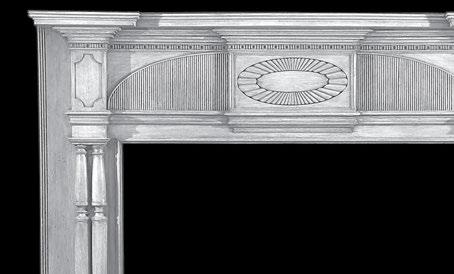



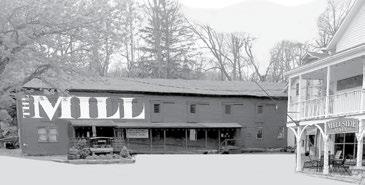




Bronze maquette by Henry Moore (British, 1898-1986), titled “Interior Form,” cast in 1966 and signed and numbered 4 out of 6 ($30/50,000).
BLOOMFIELD, N.J. — Nye & Company Auctioneers will conduct a two-day Chic and Antique Estate Treasures auction on Wednesday and Thursday, October 23 and 24, followed by a sale of property to benefit Habitat for Humanity of Greater Newark on Friday, October 25, with start times all three days of 10 am Eastern time. In all, more than 800 lots will come up for bid. Both auctions will be online-only, with bidding across multiple platforms. Phone bidding will be available on a limited basis. Featured will be a wide variety of fine and decorative arts ranging from the Eighteenth Century up to the modern day, mostly pulled from collections and estates out of the tri-state area.
Starting with traditional furniture, there is a selection of Eighteenth and Nineteenth Century from the Stanley Weiss collection. Collecting for more than 30 years, Weiss developed a keen eye for the early American aesthetic, with an emphasis on the Queen Anne through the Neoclassical periods. His passion for quality craftsmanship and wood are evident in each piece he collected.
Highlights include a Chippendale extension dining table with generous proportions, which is perfect for entertaining a large group of friends ($2/4,000). There is also a labeled Classical card table by Samuel and Joseph Rawson Jr of Providence, R.I. This historically important piece of American furniture is estimated to sell between $1/2,000. The sale also includes additional card, dining and Pembroke tables being sold from the collector
There is a small but choice selection of contemporary Arts and Crafts or Mission furniture made by L&JG Stickley, which mirror

Three Dedham Pottery plates (Massachusetts, 1896-1943), comprising a 9 ¾-inch Tapestry Lion, a 10-inch Elephant (shown) and a 9 3/4” Birds in Potted Orange Tree.
designs by Harvey Ellis and Charles Limbert. Bidding for many of these pieces starts at under $1,000.
Complementing the Arts and Crafts furniture is Dedham pottery from the collection of Dr Richard M. and Mrs Susan Pope Hays. Susan had a deep-rooted passion for history, craftsmanship, gardening and reading, so it’s no wonder she was drawn to the wonderfully whimsical border patterns of Dedham pottery that highlight animals and plants. Highlights include elephant, tapestry lion, raised cut edge quail, cut edge dolphin, the rare tufted duck, horse chestnut, azalea and many more. Small groups of the pieces are estimated to sell for between $400-$1,000. Most of the pieces were collected over a 40-year period.
Continuing along the theme of furniture design, the sale includes pieces from the highly collected New Hope, Penn., furniture maker, George Nakashima. Highlights include a turned walnut desk with pedestal ($8/12,000). This piece is signed, dated and bears the client’s name on the underside. There is also a walnut center table ($7/10,000).
Additional pieces include walnut armchairs and cabinet pulls.
The sale also features a selection of American folk art from New England and New York City collections. Highlights include silhouette portraits by the celebrated French artist Auguste Edouart, who worked in the United States, primarily in New York and Boston, between 1839 and 1849 ($300/600).
There is also a folksy American School portrait of a young gentleman seated in a yellow Windsor chair, unsigned and estimated at $1,5/3,000. Another piece is a carved,

Large-scale oil on canvas “Cityscape at Sunset,” initialed lower right “CN” ($1,5/3,000).
black-painted eagle surmounting a pair of shackled hands. One can imagine this was done as a commentary of the desired and needed freedom of the enslaved ($3/5,000).
Shifting gears to Modern and contemporary fine art, Nye & Company is selling more property from the NAMITS collection, featuring a selection of contemporary sculpture from European masters. Highlights include a bronze maquette by the celebrated British artist Henry Moore. Titled “Interior Form,” the work was cast in 1966 and is number four out of six ($30/50,000).
Nye & Company is also especially pleased to be working with the Habitat for Humanity of Greater Newark. This organization’s mission is to build affordable homes for low-to-moderate income families in Essex, Hudson and Union Counties. The robust Critical Repair provides the necessary repairs to keep veterans and seniors at risk of homelessness in the place they call home. Through the generous donation of a corporation’s

art collection, Nye looks to raise as much money as possible through the sale of pieces of art and photography. Highlights include a watercolor of Portland Head Light, Cape Elizabeth, Maine, which is reminiscent of Edward Hopper’s well-known watercolor. This piece is priced at $700-$1,000 and signed by the artist T. Lameyer. Another highlight is a large-scale “Cityscape at Sunset” on canvas ($1,5/3,000). This piece is only initialed by a yet identified artist C.N. Charles Clinton Pitcher also created a brilliant and impressively scaled watercolor of the branches of a snow-covered sycamore tree ($800-$1,200).
Real-time Internet bidding and absentee bidding will be provided by LiveAuctioneers, Invaluable, BidSpirit and the Nye & Company Auctioneers
website: www.nyeandcompany.com. People can bid in absentia and online. An online preview is currently being conducted through October 25 at the bidding sites listed above. For further information, email to info@ nyeandcompany.com or call 973-984-6900.
BI-WEEKLY SUNDAYS 8:30 am to Noon
Oct. 20, Nov. 3, Nov. 17
Regular Admission: $5 - 8:30am to 9:30am Free Admission - 9:30am to Noon Complimentary Coffee and a Variety of Goodies. Over 40 dealers. No sale tax. Early admission $30 pp 7:00am to 8:30am 603-506-9848 GRANITE TOWN PLAZA 185 ELM STREET, MILFORD, NH www.granitestateantiqueshows.com PLEASE CONTACT US FOR BOOTH AVAILABILITIES

•ALL DESIGNER JEWELRY, especially SIGNED PIECES
•ALL GOLD & SILVER BULLION and FRANKLIN MINT ITEMS
•ANYTHING BY TIFFANY
•ALL STERLING SILVER & JUDAICA

•ALL ANTIQUES, incl. SCULPTURES, FRENCH FURNITURE, BRONZES, ETC.
•ANY STAMP COLLECTIONS, COIN COLLECTIONS & DEALER STOCKS
•ANY BETTER LATIN AMERICAN ARTISTS, especially EMILIO SANCHEZ, etc.

•ALL ENTERTAINMENT MEMORABILIA
•ANY BETTER AUTOGRAPHS, LETTERS DOCUMENTS
•THE RARER AND MORE UNIQUE, THE BETTER!



CONN. — Norman Heckler, Jr, presented a select group of 31 choice examples of glass bottles in his firm’s online sale that ran from September 19-25. The sale totaled $207,300 with just one lot passed and with 179 registered bidders participating on Heckler’s own platform. Among the celebrated classics and new discoveries were early American glass, fine tableware, historical flasks and bottles.
The top lot in the sale was a “Lacour’s Bitters” figural bottle, “Sarsapariphere,” circa 1860-70, which realized $28,080. It presented a modified lighthouse form, cylindrical with sunken side panels. Its color was bright grass-green with a hint of lime, and it featured an applied triple collared mouth and smooth base. At 9 inches tall, it was, per catalog note, “clean and bright, handsome color, excellent condition.
A rare figural bottle thought to have been manufactured in San Francisco, Calif.”
“It went to a collector,” said Heckler. “This type of bottle is favored more by the West Coast collectors. It’s a so-called ‘Western’ bottle. All the ones that we’ve sold tend to go out to the West Coast.”
A miniature Pitkin flask deaccessioned from the Suffield, Conn., Historical Society to benefit its collections fund,

A monumental free-blown vase by the Boston & Sandwich Glass Works, Sandwich, Mass., 1840-70, was bid to $1,755. Very few examples are known of this trumpet vase form in an extremely large size, noted the catalog of the 16¼-inch-high vase. In deep amethyst, it featured an elongated neck with fluted trumpet mouth and inward rolled rim, quadruple knop stem and circular foot.
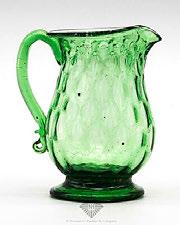
Once in the personal collection of Maud B. Feld, Manhattan antiques dealer and expert on early American glassware, this Stiegel-type pattern molded creamer sold for $7,020. Kovels says that William Stiegel, an immigrant to the colonies, was one of the most famous makers of early-period American glass. This creamer was in the 14-diamond pattern, with a bulbous form flaring to the rim and an applied solid handle. In a brilliant lime green, it stood 3¼ inches high.

This “Lacour’s Bitters” 9-inch-tall figural bottle, “Sarsapariphere,” 1860-70, which realized $28,080, was the top lot in the sale. It had a modified lighthouse form, cylindrical with sunken side panels. The color was bright grass green with a hint of lime, and it featured an applied triple collared mouth and smooth base.

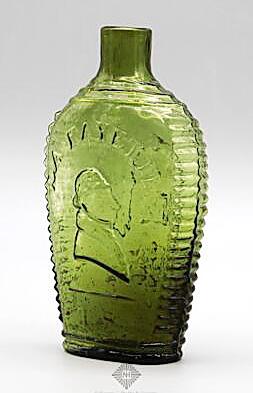
Gilbert du Motier, Marquis de Lafayette (1757-1834) was a freemason, a fact that was catnip to Lafayette type bottle collectors in this 200th anniversary year of the farewell tour of the American Revolution’s famous French ally. With “Lafayette” bust, Masonic arch and emblems, this pint portrait flask by Coventry Glass Works, Coventry, Conn., 1824-25, sold for $12,870. It was a brilliant yellow olive, with sheared mouth and pontil scar.
Review by W.A. Demers, Senior Editor Photos Courtesy Norman C. Heckler & Co.
stirred up a final price of $24,570, surpassing its $3/5,000 estimate. Ribbed and swirled — 36 ribs to be precise — the 3-5/8-inch-high New England example, 1783-1830, presented shades of yellow and olive in coloration, with a tooled mouth and tubular pontil scar. A bonus for historical glass bottle collectors were historic paper label fragments on front and back: “William R. Preston Apothecary, 2 Congress Block, Congress St., Portsmouth, New Hampshire.”
“That helped a lot,” said Heckler of the partial labels. “There’s just a handful of Pitkin glass miniatures. It did very, very well.”
Fetching $12,870 was a “Lafayette” and bust, Masonic arch and emblems portrait flask by Coventry Glass Works, Coventry, Conn., 1824-25. Featuring a portrait of the American Revolution’s famous French ally, the pint bottle was a brilliant yellow olive color with sheared mouth and pontil scar. It was referenced in American Bottles & Flasks and Their Ancestry by Helen McKearin and Kenneth M. Wilson (Crown Publishing, New York City, 1978). Cataloging describes it as an “exceptional example in mold definition and color.”
There were four Lafayette flasks in this sale. “This particular one had the Masonic emblem on the back,” commented Heckler, “and that combination with Lafayette is rarer. It’s interesting to note that this year is the 200th anniversary of Lafayette’s farewell tour in America. Also, he was a Mason and he received more Masonic honors than any freemason since.”
Square with beveled corners and fancy cathedral arches and in an unusual sage green, a Cathedral pickle jar jumped its $4,000 high estimate to finish at $10,530. It was made by the Willington Glass Works, West Willington, Conn., 1845-60. At 11¼ inches high, its rare color and fine condition factored into its good performance.
A new discovery was characterized as a great piece of early
American glass with a large presence. It was a free-blown pitcher in golden amber from Zanesville, Ohio, 1820-40, that made $7,605. Its broad-shouldered, tapered form sported an applied solid strap handle; its height was 6¼ inches and body diameter of 5 inches. “For years it was in the bathroom of a residence in New Hampshire,” Heckler explained. “Holding potpourri or flowers.”
A great rarity in early glass tableware that was once in the personal collection of Maud B. Feld, Manhattan antiques dealer and expert on early American glassware, was a Stiegel-type pattern molded creamer that sold for $7,020. According to Kovels.com, William Stiegel, an immigrant to the colonies, was one of the most famous makers of earlyperiod American glass. He started his first factory in Pennsylvania in 1763 and remained in business until 1774. In the 14-diamond pattern, the creamer had a bulbous form flaring to its rim with an applied solid handle. In a brilliant lime green, it stood 3¼ inches high. “These creamers often come in blue,” said Heckler. “This one is unusual, it may even be unique in unusual color.”
What could be considered a “tall drink of glass,” was a monumental free-blown vase by the Boston & Sandwich Glass Works, Sandwich, Mass., 184070.Its elongated neck with fluted trumpet mouth and inward rolled rim, quadruple knop stem and circular foot were complemented by a deep amethyst color. Very few examples are known of this trumpet vase form in an extremely large size, noted the catalog of the 16¼-inch-high vase. “We were exceptionally pleased,” said Heckler.
Prices given include the buyer’s premium as stated by the auction house. No date has been posted for Heckler’s next sale. Heckler said it would be sometime in the late fall. For information, www.hecklerauction.com or 860 974-1634.
Its unusual sage green color sealed the deal for this 11¼-inch-high Cathedral pickle jar, which jumped its $4,000 high estimate to finish at $10,530. Square with beveled corners and fancy cathedral arches, it was made by the Willington Glass Works, West Willington, Conn., 1845-60.
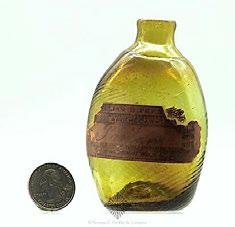
The salient feature of this rare miniature Pitkin flask deaccessioned from the Suffield, Conn., Historical Society to benefit its collections fund were the partial paper label fragments on front and back. Its final price of $24,570 surpassed its $3/5,000 estimate. Ribbed and swirled the 3-5/8-inch-high New England example, 1783-1830, presented shades of yellow and olive in coloration, with a tooled mouth and tubular pontil scar.

“For years it was in the bathroom of a residence in New Hampshire,” said Heckler, “holding potpourri or flowers.” This new discovery was a free-blown pitcher in golden amber from Zanesville, Ohio, 1820-40, and it went out at $7,605. Broad shouldered with an applied solid strap handle, its height was 6¼ inches and body diameter of 5 inches.
SUDBURY, MASS., — Tremont Auctions presents its annual fall fine art and antiques auction on Sunday, October 27 at 10 am. This sale will be live in-person as well as online, with gallery previews beginning Wednesday, October 23.
The sale of just over 620 lots will feature a variety of fine art and antiques collected from local estates. The diverse selection includes items from Europe, Asia and the Americas, ranging from the Fifteenth Century to modern day. The first portion of the sale offers vintage and designer jewelry with estate silver. Featured is an untreated natural Burmese sapphire in an Edwardian mount and a rare Tiffany and Company jewel mounted silver box produced for the Chicago Columbian Exhibition of 1893.
A significant portion of the auction is art, from Old Masters to contemporary artists, including Ralph Cahoon, Laxman Pai, Clarissa Peters, Herman Herzog, James Ward, Salvadore Dali, Joan Miro,

Edward Curtis, Laura Coombs Hills, Aldro Hibbard, TengHiok Chiu, Bernard Pothast and William Kaula, totaling more than 200 lots. Features include an Andy Warhol of Mick Jagger, an original mezzotint of Chief Tejonihokarawa and a Nineteenth Century view of Boston’s Faneuil Hall by Enrico Meneghelli. Decorative arts include a Tif-
fany Studios table lamp, an early Galle vase and a Taxile Doat Sevres vase. Furnishings feature a strong selection of Mid-Century-Modern pieces by George Nelson for Herman Miller and four Eames lounge chairs. A selection of weathervanes from the collection of published author Myrna Kaye will also be offered.
Public exhibition at Tremont’s gallery will run from Wednesday, October 23 – Saturday, October 26, from 10 am to 3 pm daily, and Sunday, October 27, from 8 to 10 am, prior to the start of the sale. Preview call also be arranged ahead by appointment. Bidders registered at the Tremont Auctions website will enjoy a three percent discount on the buyer’s premium. Online bidding is also available at LiveAuctioneers, Invaluable, AuctionZip and Estate Sales.net.
Tremont Auctions is at 615 Boston Post Road (Route 20). For information, 617-795-1678, www. tremontauctions.com or email info@tremontauctions.com.
PHILADELPHIA — While much is known about the Spanish-American War and Olympia’s role in the conflict, rarely is there discussion about the conflict between the Philippines and the United States, the role the ship played in it or how it became a symbolic lightening rod for the war and lasting impacts of American colonialism. Independence Seaport Museum (ISM) explores this time in the two countries’ histories in a new exhibit opening aboard Olympia entitled “Philippine-American War (1899-1902): Complex Symbols & Conflicting Relationships.” Located in the senior officers’ quarters through December 31, 2025, visitors can learn about the war itself as well as the symbols that arose through the complicated relationship between the United States, the Philippines and the Filipino people. To ensure the most accurate depiction of the war and its outcomes, ISM is partnering on the exhibit with the Filipino Executive Council of Greater Philadelphia, Inc. (FECGP) to include a Filipino perspective.
“We are very excited to be partnering with the Filipino community in the Greater Philadelphia region to bring this exhibition to life. The Olympia is the largest artifact in our collection and so it is fitting that it houses this exhibition that tells the story of the events that occurred after the

Battle of Manila Bay in 1898,” says Peter S. Seibert, Independence Seaport Museum’s president and CEO.
Told in four sections, the exhibit first places in context the shifting of power between Spain, the Philippines and the United States of America in the outcome of the Spanish-American War as well as introduces visitors to the islands of the Philippines and key figures of the time. The second section highlights the fleeting semblance of freedom for the Philippines only to have it taken away, the United States’ refusal to recognize the First Philippine Republic and the 1899 Battle of Manila, which was the first and largest battle in the war. Section three delves deeper into the war itself and the advantages each side had within it as well as a look at the United States’ and the Philippines’ positions as well as how they viewed the war and commemorate it to this day. The last section examines the lasting effects of the conflict, subsequent imperialism and the continued relationship between the countries.
“We are grateful ISM is sharing an often-unspoken part of our nations’ intertwined histories, this time including a Filipino voice in the discussions around this conflict,” says Roman Ventura, president of the FECGP. “This exhibit will inform generations of


Filipinos and Americans alike not only about the Philippine-American War but also its significant influence on the global relationship between the United States and the Philippines up to the present day.”
The Independence Seaport Museum is at 211 South Columbus Boulevard. For information, 215-413-8655 or www.phillyseaport.org.
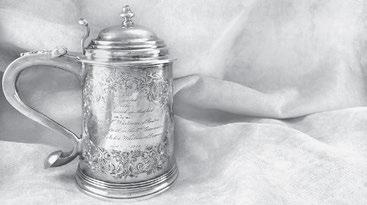


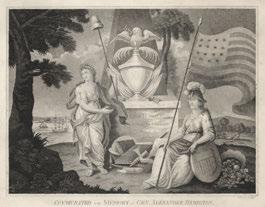



Decoy and Sporting Art Auction
November 9 & 10, 2024 | Easton, Maryland The Country School
In conjunction with the Easton Waterfowl Festival
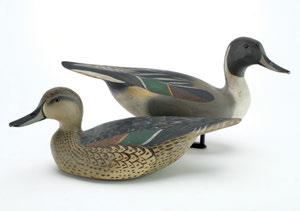









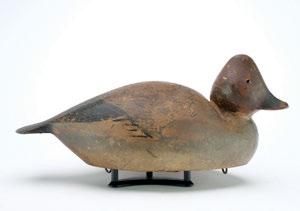


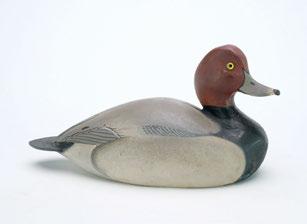




































































Featuring the collections of Gene & Linda Kangas, James & Lyda Madden, Al Marzorini, and Mike & Ginger Raffia
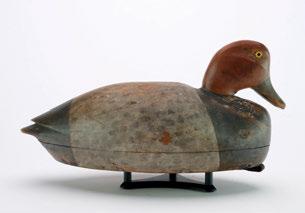
$30,000
$30,000



$25,000


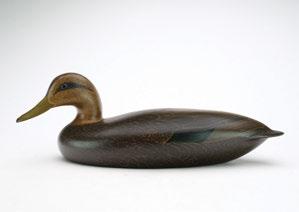


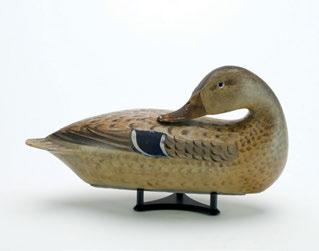
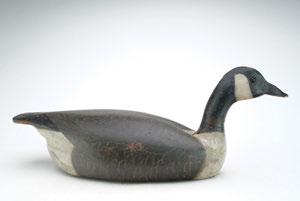


$40,000
$20,000
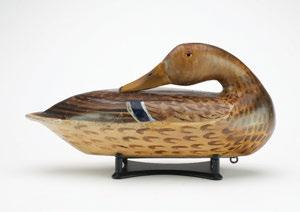

The November auction also features a large selection of sporting art and folk art


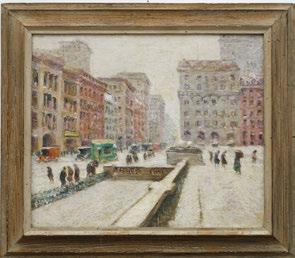





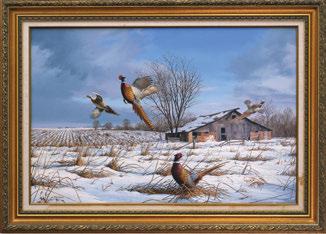





















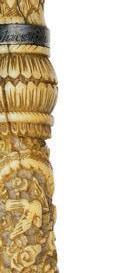
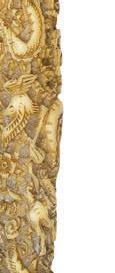































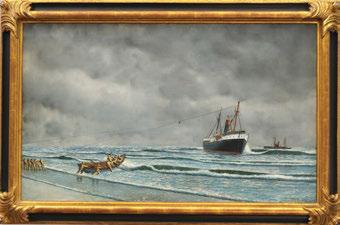













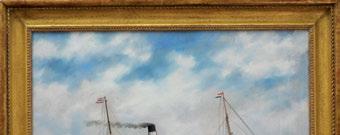















































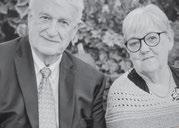
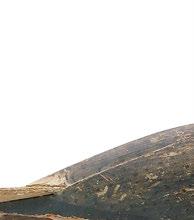


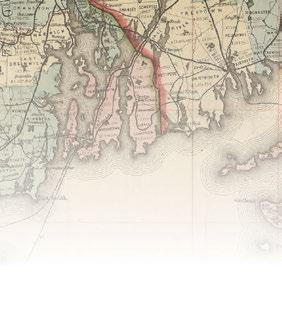
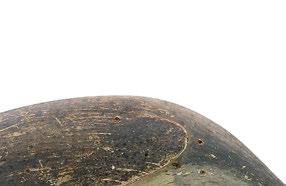
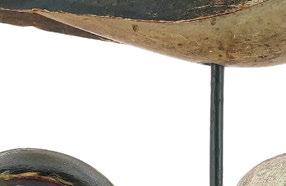
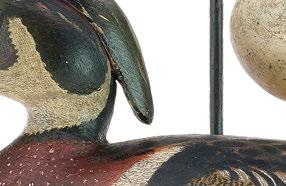
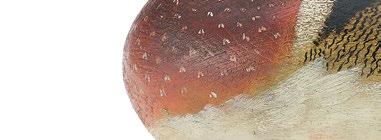
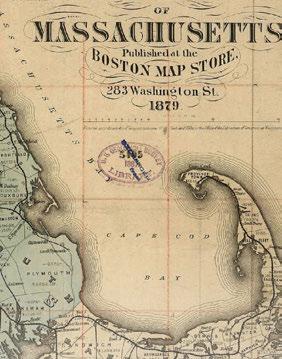
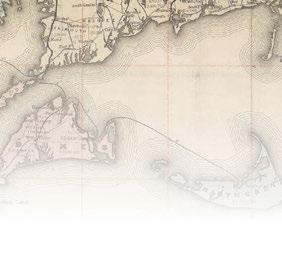

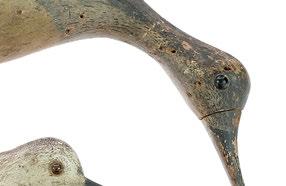

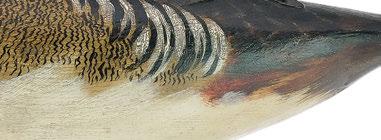

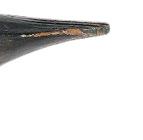

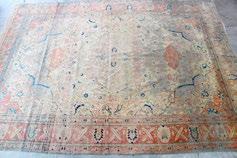
Bidders Can’t Forget Public Sale’s Large Persian Rug
HUDSON, N.Y. — Nearly 510 lots crossed the block in Public Sale’s September 28 Forget Me Not auction. Leading the sale, which had a 97 percent sell-through rate, was a room-size Persian Kashan rug. Won for $7,188 by a dealer who was bidding in the room, the 11-by-17-foot antique rug was likely made of silk and wool and was woven with two panels of Persian writing. For information, 518-9667253 or www.publicsale.com.

Folky Founding Father Finds Favor At Casco Bay FREEPORT, MAINE — Casco Bay Auctions’ Fall 2024 Americana Auction was conducted on October 12 and offered 379 lots of fine, decorative and folk art, Asian works of art and carpets, among other categories. Achieving the high price of $3,600, was a portrait that was described in the catalog as being a prized possession of pioneering American folk art collector, Hamilton Easter Fields (1873-1922), who had bequeathed it to artist and friend, Robert Laurent. Andrew Davis confirmed the painting sold to a collector in Rhode Island. For information, 207370-4592 or www.cascobayauctions.com.
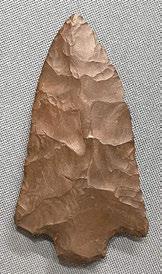
Late Archaic Projectile Point Hits The Mark In Hesse Auction
OTEGO, N.Y. — Jackie Hesse of Buzz Hesse Antiques & Appraisals said there were many notable sales in the company’s October 12 auction. “The one most remarkable one was a large, 5½-inch Late Archaic red jasper projectile point from Niantic, Conn., that sold for $18,400,” she reported. For information, 607-287-5322.
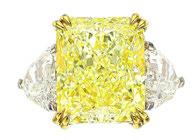

Yellow Diamond Ring Is The Fancy Of Heritage's Jewelry Auction
DALLAS — A stunning fancy yellow diamond ring sold for $337,500 in Heritage Auctions’ Fall Fine Jewelry Signature Auction on September 30, helping to lead the event to a total of $5,001,358. Based on the ring’s dazzling center stone — a radiant-cut 16.07-carat yellow diamond flanked by shieldshaped diamonds weighing approximately 2.65 carats — it’s easy to see why the ring surpassed its high pre-auction estimate by more than $110,000. For information, 214-528-3500 or www.ha.com.
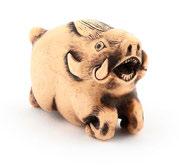
Boar Netsuke Leads Eldreds’ Bidders
On A Merry Chase HANOVER, MASS. — A 268-lot sale conducted by Eldred’s and dedicated exclusively to antique and contemporary netsuke took place on October 10. Animals were favored forms in the sale, which highlighted the collections of a gentleman and that of Edward and Marilyn Flower. Securing the premier spot at $7,040 and selling past its $5,5/6,500 estimate was a late Eighteenth Century running boar, carved in the style of Okatomo and measuring just 1¾ inches in length. For information, 508-3853116 or www.eldreds.com.

Midcentury Modern Brutalist Sconces Illuminate Top Spot At SJD Auctions
AMENIA, N.Y. — SJD Auctions started off October right with its Antiques & Collectibles Auction, which took place on the first of the month, offering 350 lots of various artwork and sculpture, Chinese pottery, rugs, lighting and furniture, among others. Leading the sale was a pair of Midcentury Modern brutalist electrified wall sconces, cast in bronze. Each sconce was 24 inches long and appeared to be in good condition, though they were not tested before the sale. Interest was strong for the pair and, after 34 bids, a $424 finish was achieved. For information, 845-4897408 or www.auctionninja.com/sjd-auctions.
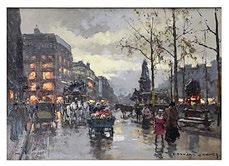
‘Street Scene’ By Edouard Leon Cortes Paves The Way To Lead Kodner Sale
DANIA BEACH, FLA. — An Edouard Leon Cortes (French, 1882-1969) oil on canvas "Street Scene" sold for $16,000 at Kodner Galleries on October 2. Signed lower right with a tag affixed to the frame, it measured 20¼ by 25½ inches with frame. For information, 954-925-2550 or www.kodner.com.

Little Known Providence School Artist Scores In Bert Gallery Studio Sale
PROVIDENCE, R.I. — The October 8 Bert Gallery Studio Sales auction was highlighted by the strong results of works by Providence School artists. “Providence Harbor,” 1907, a small (14 by 12 inches) oil on canvas work by Henry Rodman Kenyon (1861-1929), garnered robust bidding and a sale price of $2,880. Kenyon was an artist of rare modesty. While diligently pursuing his art throughout the entirety of his mature life, he did little to promote his work after his early career and the majority of his works are small. Works by Kenyon do not come on the market very often, and this auction result is among the top five sale prices ever reported for a work by Kenyon, reflecting that collectors of the Providence School recognize the quality and limited availability of his works. For information, www.bertgallery.com or 401-751-2628.

Seago’s Piccadilly Circus Soars For Ahlers & Ogletree
ATLANTA, GA. — Ahlers & Ogletree’s October 9-10 Autumn Fine Estates & Collections auction was led at $72,600 by Edward Seago’s (British, 1910-1974) “Piccadilly Circus,” an oil on canvas streetscape that had provenance to collections in both North Carolina and Canada and had been handled by London paintings dealers, MacConnalMason Fine Paintings. Measuring 28½ by 34½ inches in a giltwood frame, the painting had been estimated at $25/35,000. Following the sale, a representative for the house confirmed it had been purchased by an online bidder. For information, 404-869-2478 or www.aandoauctions.com.
NEW YORK CITY — Consistent with the manner in which Guernsey’s has leapfrogged from one interesting auction to another over the last many decades, the auction house’s next event on November 22 will focus on US history and include several of the most important historic artifacts ever to come to auction.
These include the American flag that draped Abraham Lincoln’s coffin as it traveled by train following his tragic assassination. Departing from Washington, the train — with Lincoln’s coffin and this flag displayed in a special car — made stops in Philadelphia, New York City and smaller terminals on its way to the 16th US president’s final Illinois resting place. A total of 7 million mourners were reported to have met the train along the way.
Although the Lincoln train flag in and of itself would constitute a major offering, the November 22 auction will also contain such treasures as the only 49-star American flag ever issued by the government. Along with the 49-star presidential flag (also in the auction), it stood in the Oval Office of President Dwight Eisenhower.
Shifting from flags, this auction will include the actual plaster maquettes crafted by famed sculptor Daniel Chester French for Washington, DC’s
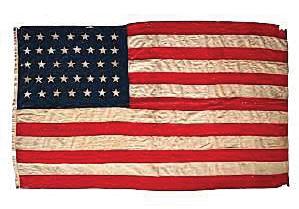
Lincoln Memorial and the Concord Minute Man, two of the most important artistic creations in American history.
Sculptural busts by the late Robert Berks (his likeness of President Kennedy is the centerpiece of the Kennedy Center), a lock of George Washington’s hair and never-before-seen vintage photographs directly from the archives of the famed Bachrach Studio are all part of the auction. (The very Bachrach Studio chair sat in by presidents, world leaders and accomplished figures, from Thomas Edison to Leonard Bernstein, will also be in the sale.)
Guernsey’s American history auction will then be followed by
the sale of a fabled musical instrument collection that had long thought to have been destroyed and a unique event dedicated to raising funds — and awareness — to protect endangered animal species. These events are being conducted as Guernsey’s ushers in its 50th year in business. Formed in 1975 by Arlan Ettinger and Barbara Mintz, few gave the couple much of a chance to survive in the competitive auction world. But survive they did, and the couple to this day continue on, striving to produce the most interesting auction events.
Guernsey’s is at 65 E 93rd Street. For information, 212-7942280 or www.guernseys.com.


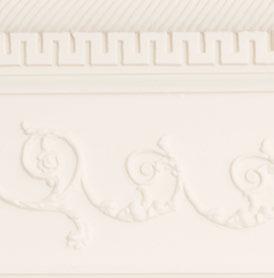
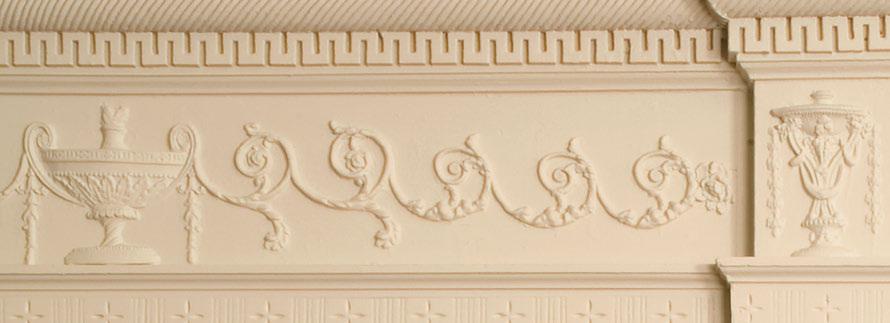

BEACON, N.Y. — “As expected, this was a very good sale, and attendance and participation were excellent,” said Theo De Haas, Hudson Valley Auctioneers’ sales manager, regarding the September 23 sale of the art and folk art from the Alfred Selnick estate. The trade held sway, although there was private collector action as well, according to De Haas. Although the firm declined to provide a sale total, the sell-through rate was 100
percent for the 292 lots on offer.
A total of 700 bidders registered through LiveAuctioneers and there were between 20-30 bidders in house and about the same number bidding by phone or absentee.
The top lot was a Nineteenth Century millinery trade sign, double sided and star shaped, made of painted wood with gilt letters proclaiming, “Millinery And Fancy Goods,” which sold for $40,000 to Allan Katz bidding on
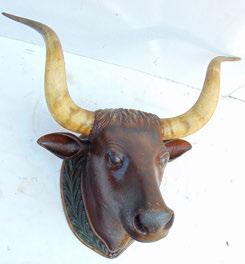
Possibly from St Louis, Mo., circa 1880, this 35-inch-high trade wood carving of a steer, fitted with steer horns and original paint and varnish, bolted to $15,625.
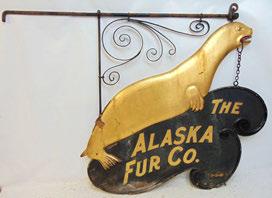
“The Alaska Fur Company” sign hanging from a metal bracket had a gilded seal and gold lettering on a black background. Double sided and measuring 75½ by 75 inches, it was won by Allan Katz for $23,750,
the floor. “Bidding went pretty high,” said De Haas. “There was another guy, a person from Wisconsin, and he really wanted it because his client had apparently owned it in the past. He called me a day after the sale and told me he was heart-broken. He really wanted it but couldn’t go any higher.”
The sale was devoted to American portraits and paintings, folk art and signs from the Selnick estate. Selnick began his work-

Like a star atop the Christmas tree, this Nineteenth Century millinery trade sign, double-sided and star-shaped, was at the apex of the sale. Made of painted-wood with gilt letters proclaiming, “Millinery And Fancy Goods,” it sold to folk art dealer Allan Katz for $40,000.

A trade sign advertising “John A. Moran Fine Clothing Hats And Furnishings,” a tour de force of typography and color, measured 58 by 71 inches and earned $11,875.
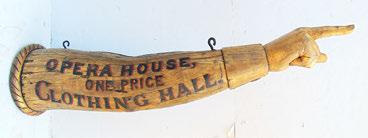
A carved gilt wood arm and hand pointing sign for “Opera House One Price Clothing Hall” wrested $11,250 from a bidder.

Estimated at just $600/800, this “F.H. Juergensen Palace Saloon” double-sided painted-wood sign, 23 by 95 inches, surprised at $19,375.
ing career in a contractor’s office, followed by an eight-year stint with an architectural-engineering firm. His interest in collecting folk art began in the late 1960s after meeting Phyliss Solomon, who had become a volunteer at the American Folk Art Museum in New York City and had begun collecting American portraiture. Their home and adjoining gallery on a mountainside in Hillsdale, designed by Selnick, displayed both of their collections. The auction combined these collections, offering a cataloged sale of artwork, folk art and signage, followed by an uncataloged session of various other items.
A Native American princess cigar store trade figure was deemed to be in excellent original condition. Standing 69 inches tall, the figure, right arm holding a bundle of cigars aloft, came with its display base and also sold to Katz for a within-estimate $27,500. “Bidding activity was pretty heavy on this lot as well,” said De Haas. While these figures, both male and female versions, come to auction from time to time, their value is determined by condition, artistry and quality of the carving, as well as who it was carved by. “I had about eight
Review by
W.A. Demers, Senior Editor Photos Courtesy Hudson Valley Auctioneers
bids on this, and they were good bids,” said De Haas.
Another trade sign, this one advertising “The Alaska Fur Company” with a gilded seal and gold lettering on a black background, was bid to $23,750. The carved- and painted-wood, double-sided full body sign hung from an iron bracket and measured 75½ by 75 inches. “That was a nice piece,” observed De Haas. “It was big. He [Selnick] had a large barn built, set up almost like a museum, and this piece was hanging right above the staircase.” The auction catalog noted it was “ex Sotheby’s.” It was also purchased by Katz, who told Antiques and The Arts Weekly after the sale he had bought about 15 lots, for inventory.
An unassuming trade sign, estimated at just $600/800, indicated the “F.H. Juergensen Palace Saloon.” The double-sided painted wood sign, measuring 23 by 95 inches, surprised at $19,375. “It sold to the phone to a gentleman from Texas, who apparently was familiar with this sign,” said De Haas. “I guess it originally was from Texas. He actually drove up from Texas to pick it up over the weekend.” Catalog notes said a 35-inchhigh trade wood carving of a steer, fitted with steer horns and original paint and varnish, was possibly from St Louis, Mo., circa 1880. It rounded up a winning bid of $15,625, selling to the Connecticut trade bidding on the floor.
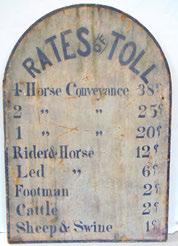
This tombstone-shaped toll sign from the early Nineteenth Century, possibly mounted at the entrance to a bridge or ferry, was expected to go out at $1,8/2,200 but did much better, crossing the block at $13,750.

This Native American princess cigar store trade figure was deemed to be in excellent original condition. The 69-inch-tall figure held a bundle of cigars aloft in her right hand and came with its display base. It sold to Allan Katz for $27,500.
Bidders liked a tombstoneshaped toll sign from the early Nineteenth Century, which was estimated $1,8/2,200 but did much better, finishing at $13,750 and selling to a dealer. Possibly mounted at the entrance to a bridge or ferry, the painted wooden sign listed “Rates of Toll” ranging from a horse and conveyance (38 cents) to sheep and swine (1 cent). It measured 29 by 42 inches.
A trade sign advertising “John A. Moran Fine Clothing Hats And Furnishings,” a tour de force of typography and color, featured a wire body with carved and painted frame and applied tin banners with gold lettering. Measuring 58 by 71 inches, it went out at $11,875. “It was a beautiful sign, large, double sided,” said De Haas. “A very striking sign. It was a dealer who bought it, as well as three or four other signs.”
Fetching $11,250 was a carved gilt wood arm and hand pointing sign, stretching out to 72 inches and proclaiming sign for “Opera House One Price Clothing Hall.” It sold to a couple from California bidding on LiveAuctioneers.
Prices given include the buyer’s premium as stated by the auction house. The next sale is October 21 with more from the Selnick collection, including Midcentury Modern and an early Twentieth Century Steinway piano. For information, www.hudsonvalleyauctioneers. com or 845-831-6800.
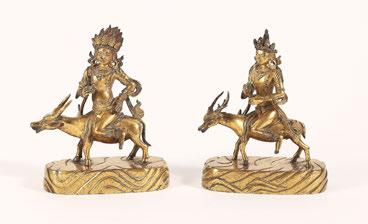
NEW YORK CITY — Lark Mason Associates announced the upcoming auction of the collection of James Greenfield, a distinguished editor, journalist, statesman and avid world traveler. The collection will open for bidding on iGavelAuctions from October 17 through October 31.
Greenfield, known for his urbane and well-traveled lifestyle, began his illustrious multifaceted career as a foreign correspondent for Time Magazine, covering the Korean War in the 1950s. His assignments led him to live in Hong Kong, India, Japan and Myanmar, sparking a lifelong fascination with Asia and its diverse cultures.
In 1967, Greenfield joined The New York Times overseeing international coverage, including the Vietnam War. His contributions were crucial to the paper’s Pulitzer Prize-winning publication of the Pentagon Papers, a secret Defense Department report on American involvement in Vietnam.
During his extensive travels across Asia, Greenfield forged
close relationships with antiques dealers in Hanoi’s back alleys, Hong Kong’s Hollywood Road, the sprawling markets of Bangkok and Cambodia’s flea markets. With a keen and discerning eye, he unearthed small, unassuming objects that often turned out to be rare and extraordinary treasures. Collecting became a lifelong passion, a pursuit that paralleled his career in journalism and public service, which included a pivotal role in the Kennedy administration as deputy assistant secretary of state for public affairs.
By the late 1960s, while working in London as a correspondent for The New York Times , Greenfield’s passion for collecting expanded to English furniture, paintings and decorative objects discovered in the Cotswolds and Bath.
Upon returning to the United States, Greenfield continued his pursuit of art and antiques, frequenting regional auctions, tag sales and small shops. His collection became a diverse showcase of Chinese ceramics, Southeast
RICHMOND, VA. — The Virginia Museum of History & Culture (VMHC) has opened its galleries to a 23½-foot-long Titanic replica, a 10-foot-tall skyrocket, a 6½-foot-long Boeing 747 and more than 100 other model vehicles constructed from nearly one million Lego® bricks. “Traveling Bricks,” on view through January 5, invites guests to explore the wonders of transportation history through replicas of iconic land, air, sea and space vehicles. The presentation at VMHC marks the exhibition’s continental US debut and precedes the Lego Group’s opening of its first and only US manufacturing plant.
“‘Traveling Bricks’ is the perfect opportunity to celebrate the opening of the first US Lego facility in Virginia,” said Jamie Bosket, president and CEO at the Virginia Museum of History & Culture. “This exhibition brings together two beloved aspects of life — Lego bricks and Virginia’s rich history — to create a captivating experience for guests of all ages.”

Asian bronzes, European bronze sculptures and scientific instruments, many of which will be available in the upcoming iGavelAuctions sale.
Notable highlights from the Greenfield collection include a pair of Tibetan gilt bronze figures on deer and buffalo, Eighteenth Century ($4/6,000); a Chinese huanghuali table, Qing dynasty ($5/8,000); four Chinese Export paintings, interior scenes, gouache on paper, Qing dynasty ($5/8,000); two Thai bronze Buddha heads ($1/2,000); two Chinese bronze mirrors ($1,5/2,000); a pair of Chinese porcelain lotus form libation cups, Guangxu
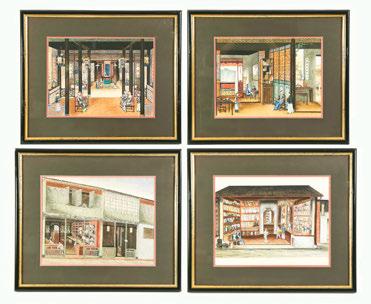
mark and period ($4/6,000).
Among the collection’s paintings are John Ferneley II (18151862), English School, “Horse,” oil on canvas ($4/6,000); and Claude Lorraine Ferneley (18221892), English School, “Melchrea Movbrey,” oil on canvas, 1867 ($1,5/2,000).
Decorative objects feature a celestial globe, John and William Cary, London, 1816 ($3/5,000); English Regency Joseph Smith brass telescope and stand, Royal Exchange, London, circa 1820 ($800-$1,200); a Chinese Export armorial porcelain with American flag, including five tureens and three serving dishes, Nineteenth and Twentieth Century


“Traveling Bricks” is one of the largest exhibitions of its kind and includes stories that connect models with Virginia’s history in air, space, land and water transportation. In addition to the model vehicles, the exhibition features a quilt made entirely of Lego bricks. The work created by Lego clubs from Richmond Public Libraries and Chesterfield County Libraries illustrates what Virginia youth love about the state.
In addition to the “Traveling Bricks” exhibition, the VMHC also shares the story of the Lego Group and its arrival in Virginia with a stand-alone display that showcases the new state-of-theart Lego factory’s contribution to Virginia’s already rich manufacturing history. The factory is slated to open in 2027 in Chesterfield County, which borders the state capital, Richmond.
The Virginia Museum of History & Culture is at 428 North Arthur Ashe Boulevard. For information, 804-340-1800 or www.virginiahistory.org.
•
•
•
($2/4,000); and a pair of Swedish gilt and painted wood armchairs, circa 1790 ($1/2,000).
“We are honored to present the collection of James Greenfield,” said Lark Mason, founder and chief executive officer of iGavelAuctions. “This auction offers a unique opportunity for collectors to acquire pieces — with accessible estimates — from the personal collection of a man who not only influenced history through journalism and public service but also cultivated a deep and lifelong passion for art and collecting.”
For information, additional www.larkmasonassociates.com or 212-289-5524.
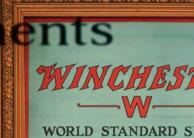
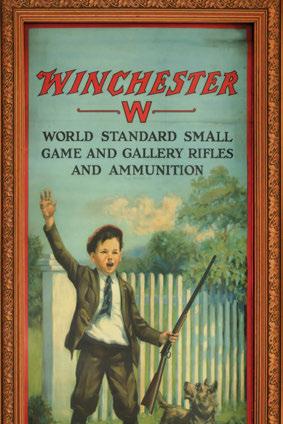




DOWNINGTOWN, PENN.
— “What a fantastic sale! It almost reminded me of the 1980s! Almost…” raved Jamie Shearer, Pook & Pook’s vice president, appraiser and auctioneer. “Pook & Pook was thrilled with the results. It was the largest sale ever by lot count that we have ever had in our 40 year history. The market continued to show exceptional strength at the top end but was also bolstered by a very sound middle ground. Many lots exceeded even the highest of expectations. Condition and color continued to inspire collectors to buy form and function over regional collecting categories. Many new collectors have registered to bid across several bidding platforms as well as a return of some of our older collectors who have not actively added to their collections in quite some time.”
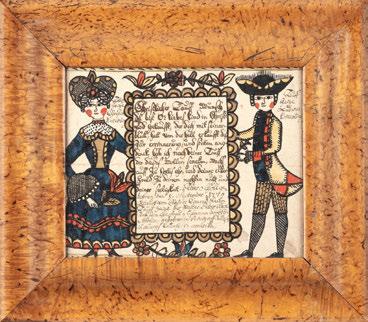
This ink and watercolor taufwunsch for Petter Schollge by the Sussel-Washington artist, 10½ by 12 inches (framed), was the first lot and also the top lot, won by dealer Jim Kilvington for $262,500 ($60/90,000).
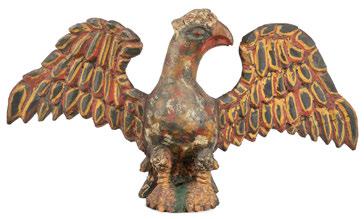
A large size and its original polychrome decoration were among the desirable features of this carved eagle made by Wilhelm Schimmel that was the third-highest result of the sale and sold for $150,000 to a Florida collector bidding on the phone ($30/50,000).
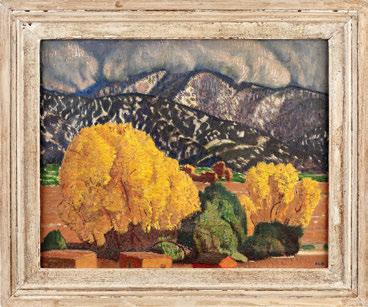
“Autumn with Storm” by Ernest Blumenschein (American, 1874-1960), oil on canvas, 20-5/8 by 24-5/8-inches (framed) stormed to $62,500, from a Central Pennsylvania collector ($40/60,000).
Such was the enthusiasm felt by the Downingtown firm after its September 25-27 Americana & International auction, which saw more than 99 percent of the 1,432 lots sell successfully and achieved $3.9 million against a $2.4 million aggregate high estimate.
The first lot of the sale, an important taufwunsch, or baptismal fraktur, for Petter Schollge (b 1779 Berks County) by the Sussel-Washington artist that was described in the cata-
log as “arguably the finest in private hands and rivals that in any institution” and “one of very few by the artist known,” was the top lot of the three-day event. Identified as having provenance to the Modesto, Calif., collection of Albion P. Fenderson, it was acquired for $262,500 by Delaware dealer, Jim Kilvington, who was bidding from the salesroom.
Prices may not have reached such heights throughout the rest of the sale but it would be a mistake to say the sale was “downhill from there” as there were many choice lots that followed it and also exceeded expectations.
Fenderson’s collection was a significant portion of the first day’s offerings and had more than a few lots in the sale’s upper ranks, with all lots trading hands. A vibrant oil on canvas folk art portrait of a boy in a red dress standing next to a rocking horse and holding a riding crop, rose to $40,000 and sold to a New England trade buyer.
A carved and painted spreadwing eagle by Wilhelm Schim-

A “rare” salmon colored ground and “unusual” size (8 inches high, 11 inches wide) were among the selling points of this painted dome lid box made in Lancaster, Penn., by the Compass Artist. It was acquired by a dealer bidding for a client, for $125,000 ($30/40,000).

This Southeastern Pennsylvania sgraffito redware charger from 1811 with eagle decoration crossed Pook & Pook’s block in 2008, when Walter Pyle Smith and Jeannette Chaffee Smith acquired it. In this sale, it realized $25,000 and will be going to a collection in Florida ($5/8,000).
mel (Cumberland Valley, Penn., 1817-1890) that, at 8½ inches tall, was of impressive size, tripled its high estimate and sold for $150,000 to a very active Florida collector bidding on the phone. For bidders who were outbid on Fenderson’s example, the sale offered two other Schimmel eagles to compete for. Both were offered on the third day and both came from the collection of Walter Pyle Smith and Jeannette Chaffee Smith. The first to cross the block flew to a collector in central Pennsylvania, for $57,500, while the third and final Schimmel eagle, which was mounted to a twig stand, more than doubled expectations and went out at $27,500. Another significant portion of the first day’s lots were those from the Flint, Mich., collection of renowned pewter dealers, Melvyn and Bette Wolf. Predictably, there was a considerable amount of pewter, including the second-highest selling lot of the event, an important Philadelphia coffeepot made by William Will (Philadelphia, 1764-1798) that was elaborate-
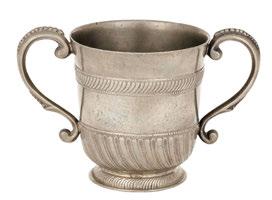
The Bayou Bend collection at the Museum of Fine Arts, Houston, now owns this pewter church cup, made by Robert Bonnynge, that had provenance to Dr Melvyn and Bette Wolf, which sold for $75,000 ($6/9,000).

A Southern collector paid $24,320 for this painted maple semi tall chest, made in Vermont in the early Nineteenth Century, that came from the collection of Dr
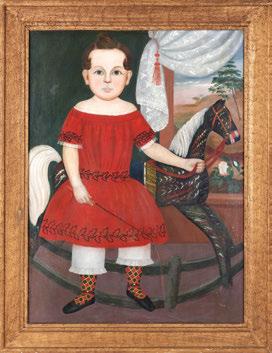
Samuel Miller’s (American, 1807-1853) portrait of a young boy, oil on canvas, 42 by 33 inches (framed), brought $40,000 from a trade buyer in New England ($12/18,000).
A tulip-decorated lid and sides augmented the landscape decoration of this painted pine dresser box by Jonas Weber. It found a new home in New Jersey, for $93,750 ($15/20,000).
ly engraved with the “MS” monogram for Margarita Schuyler. It was given to Schuyler by Thomas Jefferson for her wedding to Stephen Van Rensselaer. Explained in Pook’s catalog as “one of the finest pieces of American pewter in existence,” the pot was included in no less than six publications and had been owned by Thomas Williams of Litchfield, Conn., and Dr Robert Mallory of Rye, N.Y. Shearer noted that after contentious phone bidding, the Philadelphia Museum of Art prevailed to win it for $237,500. It was the secondhighest result earned.
Another piece from the Wolfs’ collection that saw institutional interest was a pewter church cup made by Boston pewter smith Robert Bonnynge (17311763) that was noted to be the only marked example in a private collection. With three publication sources cited, it was topped off at $75,000 by the Museum of Fine Arts, Houston, for its Bayou Bend collection.
Pook & Pook has a long tradition selling Pennsylvania German decorative arts and several notable pieces followed the top lot. A trade buyer, bidding via phone on behalf of their client, paid $125,000 for a dome lid box made by the Compass Artist (Lancaster, Penn.) that retained its rare salmon-colored ground with original pinwheel flower decoration. The box, which was from the Walter Pyle Smith and Jeannette Chaffee Smith collection, related to a bluepainted example from the Herr collection that Pook & Pook sold in 2022, but the salmoncolored box far exceeded the result of the blue one.
A dresser box, painted with a landscape scene on a black ground and featuring tulips at either end, that was also from the Smith collection and made
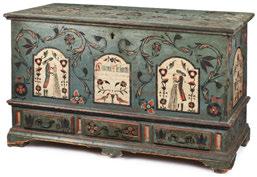
A York, Penn., collection sent to auction this Northampton County, Penn., painted dower chest made in 1782 for Katerina Eberharten. It will be staying in Pennsylvania, won by a collector for $21,250 ($3/5,000).
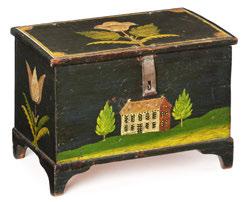
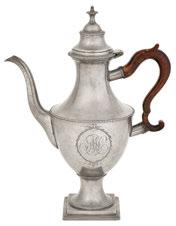
The Philadelphia Museum of Art fought hard for and won this important Philadelphia pewter coffeepot made by William Will. It was the second-highest price of the event and came from the collection of Melvyn and Bette Wolf ($50/80,000).
by Jonas Weber (Lancaster County, Penn., 1810-1876), was acquired by a New Jersey collector who paid $93,750, more than quadruple its high estimate.
Daniel Otto’s (Centre County, Penn., Eighteenth-Nineteenth Century) ink and watercolor parrot-decorated fraktur birth certificate for Wilhelm Biehrly (b 1818) that came to Pook from a Montgomery County, Penn., collection but also had provenance to Emma Thompson Logan and James and Nancy Glazier, flew to $30,000 and was the newest acquisition of a Chester County, Penn., collector.
Pook & Pook had previously sold a dated “1811” redware charger from Southeastern Pennsylvania to the Smiths in 2004. The 11-7/8-inch-diameter sgraffito example that had an eagle and was initialed “NxM,” finished at $25,000 and sold to the same Florida collector who
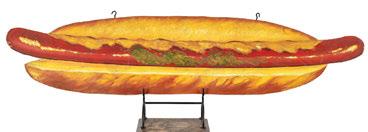
A trade buyer on the west coast paid $13,750 for this painted pine double-sided hot dog trade sign that had
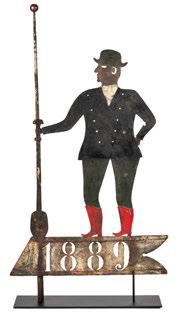
With a lengthy provenance that included folk art dealer Alan Katz, the Sotheby’s auction of Stephan and Petra Levin and a Washington, DC, collection, this painted sheet iron clam digger weathervane with old surface was not fresh to the market but that did not deter a trade buyer in Pennsylvania from paying $37,500, more than double its $10/15,000 estimate.
purchased the Schimmel eagle on the first day.
Going to its new home in Central Pennsylvania was a Northampton County, Penn., painted pine dower chest inscribed “Katerina Eberharten 1782” that depicted three front panels with figures and flowers against a blue ground.
Pook & Pook’s next Americana & International sale is scheduled for January 16-17.
Prices quoted include the buyer’s premium as reported by the auction house. For additional information, 610-269-4040 or www.pookandpook.com.
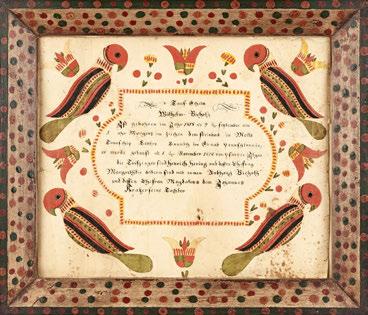
Described as “an outstanding example of the artist’s work of impressive size and parrot corners,” Daniel Otto’s ink and watercolor fraktur birth certificate for Wilhelm Biehrly, 13 by 16 inches, brought $30,000 from a Chester County, Penn., collector ($6/9,000).
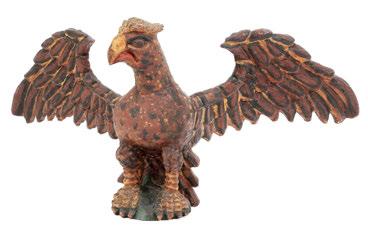
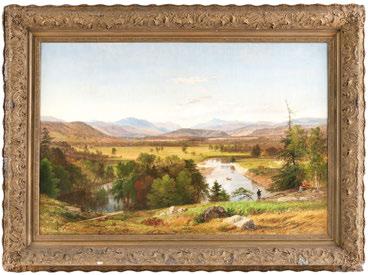
NEW YORK CITY — Steven S. Powers and Joshua Lowenfels present, “Fat Over Lean: Joel Longenecker | Chuck Webster,” which will be on view until November 23 following an opening reception from 6 to 8 pm on Thursday, October 17.
“Fat over lean” is a centuriesold painter’s proverb referring to best practices within oil painting. Joel Longenecker and Chuck Webster are enamored with the malleable qualities of oil paint. Within their work, they incidentally record the hours, days, months and sometimes years they put into a single work — Joel more with the addition of paint and Chuck with subtraction. Figuratively speaking, Joel compositions are “fat” and Chuck’s are “lean.” Joel’s accumulate paint, like sedimentary layers of the earth, while Chuck’s show erosion with erasure and cover-up. They both create a complex depth within their work — like they could be part of a larger universe or things we find under intense scrutiny.
Longenecker’s work looks like shovel-ripped sod containing layers of earth. He states that “they are constructed much like the earth’s strata, from the deepest layer (the bedrock) up to the surface (the
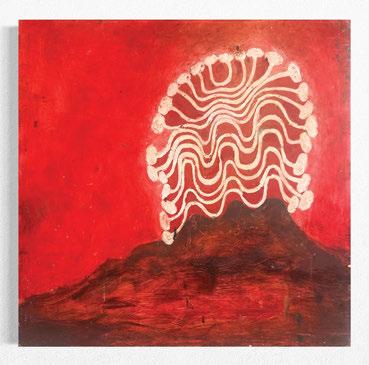
soft topsoil). Each layer consumes and buries the preceding one.” The art critic Lilly Wei wrote that Longenecker “scrapes down [semi-dried paint] so the soft inside, like wet clay, remains. This scumbled field provides resistance for his next layers as he traverses his field, repeating the process, sparring with the grit and goo, the hard and the soft”. Longenecker lives and works in New York, has been exhibiting for more than 30 years and has been reviewed and written
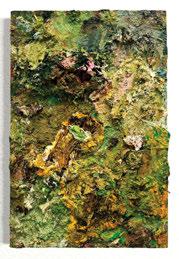
“They Dreamed of Well Filled Holes” by Joel Longenecker (b 1963), 2024, oil on Masonite mounted on panel, 30 by 20 inches.
about extensively.
Webster is also deeply engaged with the creative process through layering, glazing, sanding, adding and subtracting paint while blurring the lines between painting and drawing. Yet, this earnest approach is loosened by his sense of humor, nostalgia and pop culture awareness. This survey of paintings spanning over twenty-five years shows
abstract compositions hinting at some other world. Through his meticulous approach to detail, we see something familiar that we think we know yet can’t quite put our finger on. Art critic Roberta Smith of the New York Times described Webster’s work as “little big paintings,” stating that “they have a strange, irrepressible scale, a largeness that exceeds their size and creates a distinctive, slightly comedic sense of intimacy.”
Webster lives and works in Brooklyn, N.Y. His work is in numerous public and private collections, including the Metropolitan Museum of Art, the Whitney Museum of American Art, the Baltimore Museum of Art and the Museum of Fine Arts, Houston. Webster has been reviewed in the New York Times , Hyperallergic, The Brooklyn Rail and Art in America.
The Powers / Lowenfels Gallery is at 53 Stanton Street. It is open Thursday through Sunday, noon to 6 pm. To keep up to date on gallery features, follow Steven S. Powers (@stevenspowers) and Joshua Lowenfels (@ployaarrtt) on Instagram. To contact Steve Powers, 917-518-0809 or steve@stevenspowers.com.
FORT WORTH, TEXAS —
The Amon Carter Museum of American Art (the Carter) presents its first exhibition examining acclaimed artist
Richard Hunt’s works on paper that reflect his explorations outside of the sculptural form. Hunt, a pioneering figure in Twentieth and Twenty-






or































First Century sculpture, was best known for his distinctive, large-scale welded metal commissions, which grace public spaces across the United States. “Richard Hunt: From Paper to Metal” presents, for the first time, 25 lithographs from the Carter’s collection alongside “Natural Form” (1968), a recently uncovered sculpture newly acquired by the Carter that anchors the exhibition as a three-dimensional counterpoint to the works on paper. The exhibition examines the spatial and figurative ideas Hunt explored during his 1965 residency at the renowned Tamarind Lithography Workshop, which in turn anticipated Natural Form, the exhibition’s singular sculpture and a rare example of the artist’s midcentury sculpture. “From Paper to Metal” is on view at the Carter through March 2. Hunt is lauded as one of the most illustrious and prolific sculptors of the Twentieth and Twenty-First Century and was the first Black sculptor to receive a solo retrospective at the Museum of Modern Art (MoMA) in New York in 1971. His career stretched across seven decades and numerous locations, with Chicago at its center. Among the formative experiences that shaped his practice was his work at the University of Chicago’s zoological laboratory, a prelude to his lifelong interest in skeletal and organic forms — themes that are clearly
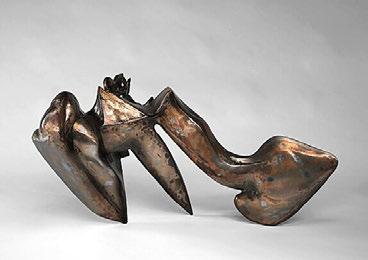
“Natural Form” by Richard Howard Hunt (1935-2023), 1968, welded steel, courtesy Terry Dintenfass Inc., ©The Richard Hunt Trust.
defined in the Tamarind lithographs on view in the Carter’s exhibition.
“It’s especially poignant that this exhibition, which has been in the works for many months, is on view in this moment after Richard Hunt’s passing,” said Andrew J. Walker, executive director of the Carter. “The exhibition provides space to reflect on the work of one of America’s most important sculptors, who is virtually unmatched in the canon of Twentieth and Twenty-First Century American sculpture, and, through our acquisition of ‘Natural Form,’ we are able to play a part in preserving and amplifying the artist’s legacy. By bringing Hunt’s lesser-known litho-
graphs into dialogue with the sculpture, we are able to engage our collection in new ways and introduce new audiences to Hunt’s multifaceted practice.”
The Amon Carter Museum of American Art is at 3501 Camp Bowie Boulevard. For information, 817-738-1933 or www. cartermuseum.org.
MYSTIC, CONN. — Mystic Seaport Museum presents “Entwined: Freedom, Sovereignty, and the Sea,” that surveys the interplay of maritime histories through Indigenous, African and African American worldviews. On view until spring 2026, the exhibit is at 75 Greenmanville Avenue. For information, 860-572-0711 or www.mysticseaport.org.
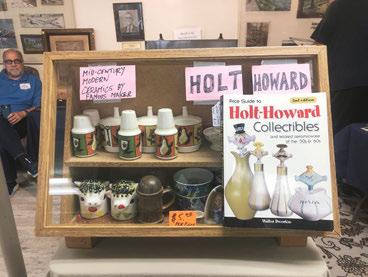
SCHOHARIE, N.Y. — You know it’s Fall in Schoharie when the leaves change, residents on Routes 30 (River Street) and 145 (Main Street) create lavish Halloween character displays on their lawns…and the semi-annual Antiques in Schoharie rolls into the Schoharie Valley Railroad Museum (SVRM) complex. One of two fundraising antiques shows held by the Schoharie Colonial Heritage Association (SCHA) in support of the 1743 Palatine House Museum and the SVRM, the 48th Annual event took place Saturday and Sunday, September 28-29. More than 60 dealers showed their treasures under tents, within three permanent structures or simply on folding tables throughout the spacious complex. The show saw both gloriously sunny and overcast weather and attracted shoppers throughout the weekend.
Antiques and The Arts Weekly spoke with show manager Ruth Anne Wilkinson, who said the beautiful fall weather was “a gift, but between the beautiful weather on Saturday and other seasonal activities taking place
in the area, the gate was lower than it usually is. Despite that, those who came bought like crazy and many dealers told me they’d had their best show ever. We even sold out of the food we’d prepared, which has never happened in the Fall before. We’re so grateful for the support the organization has received since it started.”
Most visitors began their show experience in the first floor of the Creamery Building. William D. “Postcard Bill” Johnson has been doing the show for 20 years and brought just a fraction of his inventory but still had at the show several thousand postcards, which encompassed largely New York State town views or holiday cards. Most of the cards he had were priced between $5-25 but his more expensive ones were actual photo cards, which he said can be priced well above that.
“I look for older cards in good condition, and I prefer small towns throughout New York State. Holiday cards are also popular. The really scarce cards are photo cards, but all of these are little pieces of history.”


Feeling like postcard connoisseurs following Johnson’s words of wisdom, we crossed the aisle to the booth of Patridge Hollow Antiques, which had a variety of things, including Lynn Chrin’s favorite chocolate and ice cream molds. She had been busy transacting the sale of four molds — a bear, Santa, bride and groom — to a client, so Dennis Chrin, who likes dog molds himself, summarized some of the finer points. Most were made in Europe, with ones made of tin for chocolate and those for icecream made of pewter. Santa molds — not the European versions of St Nick or Kris Kringle — made in the US are comparatively hard to find while Easter molds are the most common. Molds with a hinged bottom plate made hollow chocolate figures while solid examples require a mold filled from the bottom.
Mary Badcock, who was also set up in the Creamery, found

another use for molds she’d purchased from the Chrins years ago: candles. Her small booth was full of St Nick, Kris Kringle, lambs, roosters and rabbit candles, surrounded by evergreen branches and clear twinkle lights. She was busy tallying a several-candle sale as we perused her selection.
Gary Robinson and Carlos Seidner, from Oneonta, N.Y., were sharing a booth. Occupying
pride of place in the center of their booth was a small selection of Holt-Howard ceramics and what is left over from a collection of about 150 pieces Robinson had acquired from a private estate of a woman who had collected it for 40 years. Robinson said Holt-Howard ceramics are “probably the most in-demand Midcentury Modern ceramic” on the market today.
Bill Reid has, for the past 15
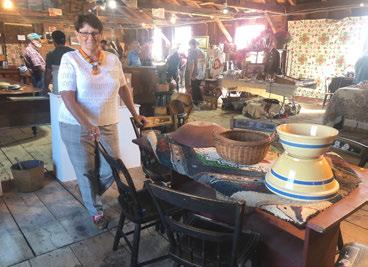
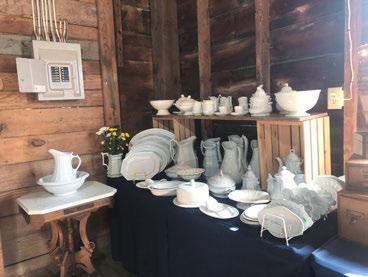

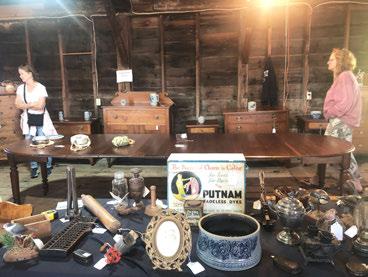

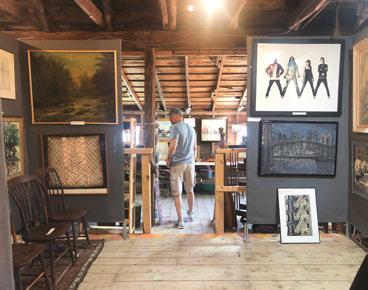

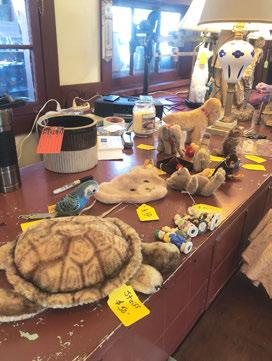
years, framed discarded press tin architectural elements and made candlesticks out of stair rail balusters. He started doing this when he was in construction and had access to discarded materials but he says he now gets them wherever he can, including Craig’slist and Facebook Marketplace. Coming to Schoharie was only his second show since Covid. Glen and Millie Wiegand are Happy Dogs Ceramics, in Cobleskill, N.Y., and they were doing the show for the first time, set up in the dealer tent in the center of the museum complex. He attended the University of Wisconsin where he received a Bachelor of Science in art. From
cat and dog images to bowls and other vessels, all are handthrown on a potter’s wheel, fired twice in a kiln and then a colorful glaze is applied.
More than 32 dealers were in the Mill Building, the largest building on the museum’s complex. Ann and Michael Vanderverdt shared the northernmost end of the building with Fred and Patty Heisler, who were joined on Saturday morning by their friend Mary Jane Breedlove. The Vanderverdts had a nice selection of early furniture, smalls and jewelry while antique clothing was a stand-out category for the Heislers, though they also had furniture; a stool was

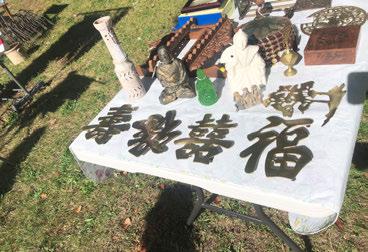
among their early sales. Passing into the main room of the Mill Building, Jim and Mara Kerr and Cavern View Antiques were on one side, opposite Mark and Karen Wheaton and Maria’s Pond Antiques. Ironstone is what the Kerrs specialize in, to which they’ve been selling in Schoharie for more than 35 years, though it was by no means the only thing they had on offer. While we were in their booth, a woman who had been a previous client of theirs, and who purchased a spinning wheel from them years prior, was sorting through antique seed packets.
Mark Wheaton, who has been doing Schoharie for 47 years, was getting a lot of attention for a farm table he’d found in the Cooperstown, N.Y., area. For anyone who missed out on Wheaton’s table and was willing to go with a slightly more formal aesthetic, his neighbor at the show — Allan Boice — had a walnut dining table with eight leaves that he’d purchased at the MadisonBouckville show. Boice, who owns Quality Refinishing out of Governor, N.Y., had several examples of his restored pieces, many of which were made from tiger maple and cherrywood.
For her day job, Cheryl Leonard VanDenburg is the curator at the Alling Quilt Museum in Palyra, N.Y. As a dealer, VanDenburg specializes in textiles, and she brought a show-stopper of a quilt if ever there was one: a Civil War era appliquéd Whig Rose quilt that she had found in a Rochester, N.Y., estate and was, she thought, a “Sunday best” example because it had survived in such remarkably good original condition. VanDenburg also had a selection of doll’s shoes that had been deaccessioned from the Strong Museum.
Richard Cuddeback found a new home for a library cabinet and oak wall box while Bob Mock and Lou Leatso unloaded some leather wingback chairs, a cabinet and a Chippendale chest of drawers.
If you came to the show looking for Modern Art there were few choices, but Bob Smith was there marking his third time at Schoharie. He brought from Montrose, Penn., several pieces to choose from. One of the things he was
to have
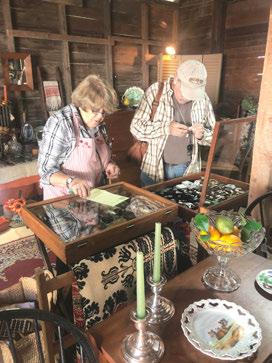
photo that had been used in an advertisement for Converse sneakers. It featured four standing figures, two of which were David Grohl and Joan Jett. According to Smith, it had once hung in the corporate office of Converse. He said he’d found it at Brimfield.
The organizers know antiquing can make even the most efficient shoppers work up an appetite and they plan accordingly. In addition to a selection of hot and cold lunch options, beverages and desserts were on hand, the latter being a time-honored tradition at the show. We spoke with Carol McMichael, who has been helping stock the show’s kitchen for more than 30 years. She said about 15 volunteers took shifts both days, and people especially liked the home-baked goods, because “less people bake these days so they appreciate the effort.”
If doing quality control of some of the many and various pie options was part of the job of covering this antiques show, it’s one we happily took on.
The dates and location of the Spring Antiques in Schoharie show — which typically takes place at the Schoharie Central School — are pending as the school will be closed for construction.
For information and updates, www.schoharieheritage.org.

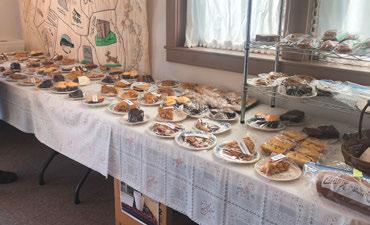

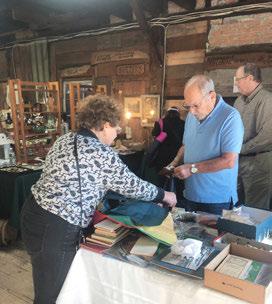
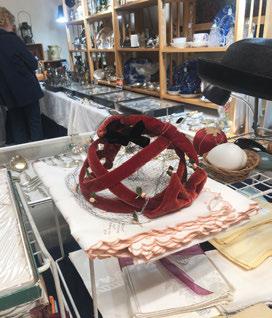
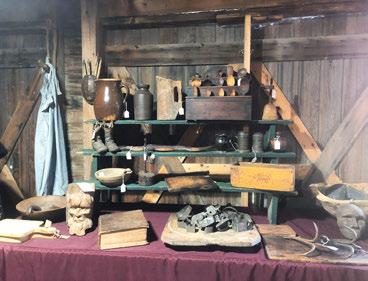

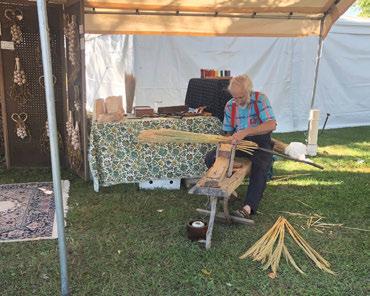

NEW YORK CITY — Marking the 400th anniversary of the founding of New York, Swann Auction Galleries conducted its New York Sale, presenting 231 lots, primarily of posters and photographs, honoring the city that never sleeps. According to Swann communications manager, Kelsie Jankowski, the sale had “a 70 percent sell-through rate by lot, totaling $457,977. Top lots were sold to collectors, dealers and institutions alike, with buyers participating in the room, through the Swann App and phones, as well as through advanced left bids.”
Nicholas D. Lowry, Swann president and the specialist for the sale, added, “Reviving the New York sale after a 23-year hiatus on the eve of New York City’s 400th birthday was a company-wide labor of love for the city in which we all reside. For our efforts, we were awarded an exhibition that was better attended than most of our other auctions and an auction that saw many satisfying results and served to validate that we are not alone in being in awe of
this magnificent metropolis. Photographs, posters, maps, books, prints and artwork all performed well and the bidding was active and exciting.”
A 1904 photograph of the Flatiron Building finished as the top lot of the day. The image, Edward Steichen’s “The Flatiron – Evening,” from Camera Work XIV, was bid to $25,000. Printed in 1906, the dark, misty green image was a three-color halftone print, double mounted to Japan tissue and the original page mount. As described in the catalog, “Upon completion in 1902 [the Flatiron Building] was one of the tallest buildings in the city and its magnificence has been beautifully recorded by Steichen in this evocative photograph in 1904. With its atmospheric yet modernist aura, the photograph captures the interplay between the tree branches in the foreground, the carioles on the rainy streets and the newly built Flatiron that we can distinguish in the background at dusk. … ‘The Flatiron – Evening’ is not only a strong testi-
mony of modern New York but also a subtle chromatic study of twilight with its undoubtedly Japanese influence.”
Martin Lewis’ “Rainy Day, Queens,” a 1931 drypoint print of pedestrians and cars traveling along the city street, was bid just above its estimate to $21,250. With full margins, this print was one edition of 70 and was signed to the lower right.
Printed in the 1980s, Berenice Abbott’s 1932 “New York at Night” went out for $18,750. The silver print image was marked with Abbott’s block-lettered signature in pencil to the bottom right as well as her “Abbot, Maine” stamp on the reverse.
“Dolores wants a Taxi, New York” by William Klein was taken for Vogue magazine in 1958. With provenance to William Klein, Paris, and two pri-
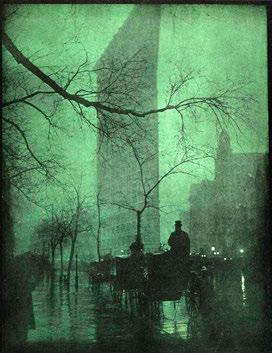
Achieving $25,000, the sale-high price, was “The Flatiron – Evening,” from Camera Work XIV by Edward Steichen (1879-1973), 1904; three-color halftone print, 1906, 12 by 8½ inches ($10/15,000).
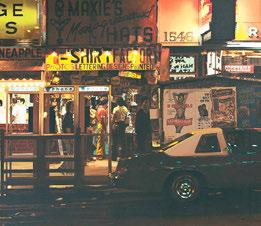
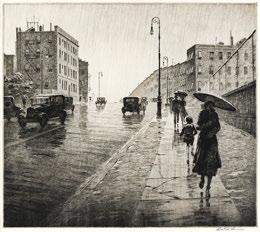
“Rainy Day, Queens” by Martin Lewis (18811962), 1931, drypoint, 10-5/8 by 11-7/8 inches, brought $21,250 ($15/20,000).

vate collections in New York, the 2021 chromogenic print, number 14 of 30, sold for $12,500. Another photograph by Klein, this one titled “Atomic Sky,” featuring the New York City skyline under moonlight, sold for $10,625. This silver print of the 1955 photo was printed later and featured Klein’s signature, title and negative date in ink on the reverse of the mount.
The highest-achieving painting in the sale was Noel Mahaffey’s “Times Square.” The oil on canvas work, done in 1980, was initialed to the lower right and sold for $11,250. Bearing a label from OK Harris, New York, the busy city piece also had provenance to a private Pennsylvania collection.
The selection of posters was led by Harley Wood’s 1952 travel poster for the Pennsylvania Railroad advertising the message “New York / Go By Train.”
The offset lithograph poster depicted a man and woman at the top of the Empire State Building, overlooking the city below. The catalog described this poster as “one of the rarest and most spectacular of the mid century New York travel posters,” and noted that “the image was also used on the cover of train timetables.” Landing within its estimate range, the
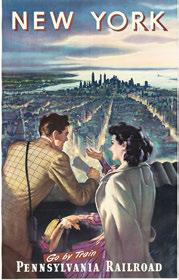
The top poster in the sale, New York / Go By Train / Pennsylvania Railroad by Harley Wood, 1952, offset lithograph paper, 25¼ by 40½ inches, went out at $10,625 ($8/12,000).
ticket was punched for $10,625. Another successful poster, achieving the same price, was “New York Central Building / At the Gateway to a Continent” by Chesley Bonestell. This circa 1929 lithograph poster was published by the Long Island City-based Latham Litho. & Ptg. Co., and featured Bonestell’s “mesmerizing and dramatic nighttime view down Park Avenue of the New York Central Building, a modern ziggurat, in all its glory,” per the auction catalog.
An archive of more than 140 photographs documenting various scenes of activity at Ellis Island from the 1890s to 1940s sold for $10,000. The collection comprised images from various photographers including Augustus F. Sherman (1866-1925), The Brown Bros. (active 1900s40s), Perry A. Glick (active 1910s-20s), Edwin Levick (1868-1929), Underwood & Underwood (active 1880s-1940s) and several unknown photographers. With two albumen prints and 140 silver prints, the archive came from the collection of Edith S. Oshin, then by descent to the consignors. Prices quoted include the buyer’s premium as reported by the auction house. For information, www.swanngalleries.com or 212-254-4710.

New York Central Building / At the Gateway to a Continent by Chesley Bonestell (1888-1986), Latham Litho and Ptg. Co., Long Island City, N.Y., circa 1929, lithograph poster, went out at $10,625 ($8/12,000).
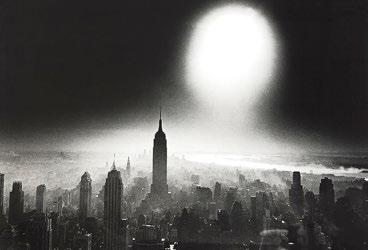
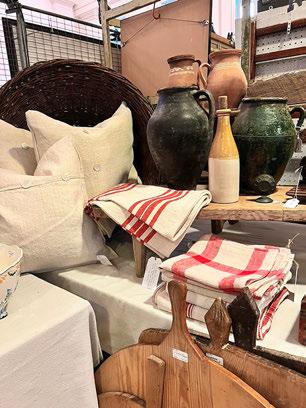


CONCORD, MASS. -- The Trinitarian Congregational Church will host its 53rd annual antiques show on Friday and Saturday, November 1-2, at the TriCon Church from 10 am to 5 pm on Friday and 10 am to 4 pm on Saturday.
The Antiques Show raises monies to support mission and
outreach efforts.
All proceeds to the church, from entry fees, dealer rents and café sales, are given away to outreach organizations that support hunger initiatives, domestic violence agencies, preschool and early education scholarships, veterans’ needs and the LGBTQ+ community.
Offering antiques, furniture, glassware, prints, jewelry, artwork and more, the show presents three floors of dealers to greet the more than 600 customers who come back year after year. The building is fully accessible.
The TriCon Café is a hit every year, offering freshly made
sandwiches and soups and a place to sit so you can make a day of shopping and lunch. The cafe also sells many homemade desserts, including pies (sliced and whole), cookies and other baked treats.
The entrance fee is $10 per person, and children are free. Look for a coupon/ad on social
SCOTTSDALE, ARIZ. — Western Spirit: Scottsdale’s Museum of the West is proud to announce the opening of its latest exhibition “People, Places, Predicaments: John Clymer’s West,” celebrating the life and work of renowned artist John Ford Clymer and honoring the legacy of art collector and Arizona philanthropist Eddie Basha. The exhibition runs through October 26, 2025.
Born in Ellensburg, Washington, Clymer (1907-1989) was an extraordinary artist whose work vividly captures the spirit of exploration and adventure of the early American West. In a career that spanned six decades, Clymer was acclaimed for his meticulous depictions of the dramas of the Nineteenth Century frontier.
Tammy Fontaine, associate curator of Western Spirit commented, “Clymer was renowned for his attention to detail and concern for authenticity. His paintings offer a fascinating glimpse into a bygone era, bringing to life the courage and resilience of those who ventured into the wilderness. His art celebrates the grandeur of the American West and honors the diverse peoples who shaped its history.”
“People, Places, Predicaments: John Clymer’s West” invites visitors to immerse themselves in the story of the West by exploring 51 of Clymer’s sweeping canvases. These works vividly portray the majestic wildlife, determined explorers, hardy trappers and proud Native Americans of the Western United States. The exhibi-
tion includes two personal studies, rare ephemera from Clymer’s career as an illustrator and 10 fine china plates featuring scenes from his iconic oil paintings.
“People, Places, Predicaments: John Clymer’s West” also highlights the artistic legacy of Eddie Basha (1937-2013), whose extensive collection of significant Western American and Native American art has been an important cultural resource. Basha began collecting art in 1971. What started as a hobby quickly became a passion, and Basha’s collection ultimately expanded to over 3000 pieces. His deep appreciation for Clymer started in 1972 when he discovered the artist in Cowboy Artists of America catalogs and began acquiring his work. He met Clymer and his wife Doris in 1974, forging a lasting friendship. A significant portion of Basha’s collection, including major works by Clymer and other artists, was donated to Western Spirit in 2023. Michael Clawson, executive
editor at Western Art Collector remarked, “During his lifetime, John Clymer found a huge amount of success in the art world, first from his Saturday Evening Post covers and later with his work about the American West and its captivating stories of trappers, traders, Native Americans and cowboys. Since his passing in 1989, his work has been rediscovered by new generations that are drawn to his masterful painting style, his dedication to historical accuracy and his complex and panoramic scenes of the West, many of them with dozens of figures and thrilling action. Not only did Clymer paint numerous masterpieces, including several that are in this exhibition, he painted timeless scenes that speak to the spirit of the American West and its enduring legacy within American art.”
Fontaine added, “Eddie Basha believed art was meant to be shared. This exhibition is a testament to his vision, bringing together Clymer’s masterpieces

with our community to inspire and educate.”
Western Spirit: Scottsdale’s Museum of the West is at 3830 North Marshall Way. For information, www.westernspirit.org or 480-686-9539.
media, some area stores and in this paper for $1 off.
The Trinitarian Congregational Church is at 54 Walden Street. For information, www. triconchurch.org, info@triconchurch.org or 978-369-4837.


Sunday, Oct. 27,

LITCHFIELD, CONN. — Litchfield Auction’s September 25 Modernism and Antiques auction featured a considerable selection of property from a renowned fashion executive’s home in Washington, Conn., along with other estates and collections from New York and New England.
The 432-lot auction received nearly 7,800 registered bidders from more than 60 countries. The sale achieved a successful 87 percent sell through rate, with the total ringing in at $468,000 and doubling the sale’s presale median estimate. All prices reported include buyer’s premium.
A remarkable pair of Eighteenth Century console tables, attributed to furniture designer and cabinet-maker Matthias Locke, were the star of the sale and brought considerable attention from buyers and collectors.
The George II carved pine and marble top tables bore a central carved ram’s head design, with satyr legs and grapevine motif
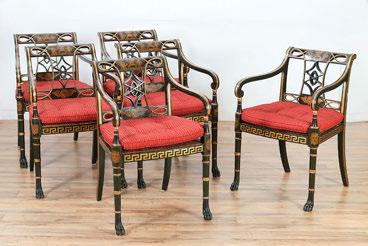
throughout. As the lot opened, the anticipation was palpable as bids came in from online platforms, together with a full bank of telephone bidders on standby with auction
staff. With nearly a dozen contributing bids, the price quickly surpassed its initial $10/20,000 estimate. Ultimately, the price advanced beyond the $60,000 mark and was taken over by two
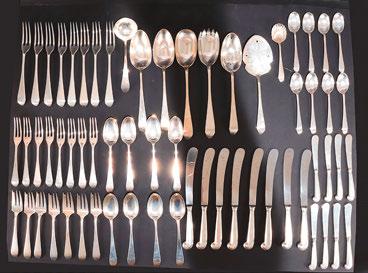
competitive phone bidders who engaged until the lot’s close. The final price was achieved by an incremental jump by the winner, a private overseas buyer, who drove the final price to $195,000.
Following suit, antique furniture and decorative arts saw strong sales with enthusiastic bidding. A set of Regency style parcel-gilt and black painted armchairs sold for $5,330 ($500/1,000); a Nineteenth Century Japanese Meiji screen brought $4,420 ($500/1,000); a Directoire brass mounted mahogany dining table $4,030 ($250/500); a pair of modest florally upholstered Victorian style club chairs saw $4,030 ($50/100); and a PE Guerin faux bois brass and glass coffee table achieved $3,770 ($400/800).
Midcentury didn’t miss the mark either. A pair of Cedric Hartman brass floor lamps brought $3,770 ($500/1,000); a Karl Springer style bleached oak parsons table $2,730 ($150/300); Christopher Spitzmiller ‘Michael’
lamps sold for $2,600 ($200/400) for the pair; a biomorphic bronze sculpture by Arturo D. Modica realized $2,080 ($500/1,000); and a pair of Norm Cherner for Plycraft Pretzel chairs at $2,080 ($500/1,000).
Decorative arts had a fine representation in the sale. Sterling silver by James Robinson saw a flatware service sell for $5,980 ($1/2,000) and a coffee and tea service at $2,210 ($750/1,000); a large white faience dinner service by Astier de Villatte went for $5,720 ($2/4,000); a Nineteenth Century English school oil painting of a barnyard scene with vultures and animals brought $2,600 ($200/400); and an outdoor Rockwood teak dining table and chairs settled in at $2,730 ($250/500).
Upcoming auctions include an October 30 art, antiques and design sale, as well as a jewelry and luxury sale which is slated for November 20. For more information, 860-567-4661 or www. litchfieldcountyauctions.com.
NEW YORK CITY — The Metropolitan Museum of Art announces the loan of 14 ancient sculptures from the Republic of Yemen. The works, dating from the First Century BCE through the Third Century CE, were voluntarily repatriated to the Republic of Yemen from the Hague family collection located in New Zealand.
The Republic of Yemen then reached out to The Met to request that the objects be held at the Museum, where they will be studied and cataloged, until Yemen wishes for their return. The loan follows the historic custodial agreement established between The Met and Yemen in 2023, by which The Met is now caring for and dis-
playing two ancient stone works repatriated from its own collection, a return initiated by the Museum after provenance research led by Met scholars established that the works rightfully belong to the Republic of Yemen.



















“The Met is honored to be entrusted with this remarkable collection of objects, and by the continued strengthening of the Museum’s relationship with the Republic of Yemen,” said Max Hollein, The Met’s Marina Kellen French director and CEO. “I am grateful to His Excellency Mohammed Al-Hadhrami, Ambassador of the Republic of Yemen, and Tim Lenderking, US Special Envoy for Yemen, for their partnership in this agreement and for the shared value of stewardship that underlies it. In addition to offering exciting opportunities for research in the context of the Museum’s collection, this loan represents The Met’s ongoing commitment to international collaboration and to the protection and preservation of artistic and cultural heritage from around the world.”
“The Government of Yemen expresses its deep appreciation to the Hague family in New Zealand for voluntarily returning 14 invaluable ancient Yemeni artifacts back to the Yemeni people from their private collection,” said Mohammed Al-Hadhrami, Ambassador of the Republic of Yemen to the United States. “While the current situation does not allow for the immediate repatriation of these artifacts to Yemen, we are thankful that they will be preserved and studied at The Metropolitan Museum of Art in New York. This is yet another example of our growing and essential collaboration to safeguard Yemen’s cultural heritage.” The 14 loan objects are stone and bronze sculptures most of which likely originate from the Bayhan district of the Shabwa Governorate in Yemen. This region includes the ancient city of Timna, capital of the Qataban kingdom, one of the major powers in ancient southwestern Arabia and a hub of the ancient international incense trade. Most of the objects are likely funerary, or votives that would
have been placed in a funerary context, and many are made of the translucent golden-yellow calcite alabaster that characterizes much funerary art of ancient southwestern Arabia. One of the loaned objects is an outstanding example of a Qatabanian funerary stele that portrays the deceased, a woman, standing and holding her arms in a common gesture usually interpreted as one of prayer or piety. Several other works are complete or partial depictions of human heads, all of which are likely to have been part of funerary stelae, busts, or statues. These works represent male and female figures in a range of styles, most of which are not currently represented in The Met’s collection. Additional objects include sculptures featuring ibex imagery — a key motif in southwestern Arabian art — along with an inscribed stele, a stone incense burner and interesting examples of bronzeworking.
The Metropolitan Museum of Art is at 1000 Fifth Avenue. For information, www.metmuseum. org or 212-535-7710.
SAVANNAH, GA. – Everard’s October 29-31 online-only auction offers collectors and interiordesign aficionados a selection of fine and decorative art from notable Southern estates and collections. Originality, aesthetics and provenance are the watchwords seen throughout the 1,254 lots. Highlights include property from the Ira and Nancy T. Koger estate, American and English furniture; paintings by Latin American artists, Boston contemporary art from the collection of Bob Herron, folk art and weathervanes from a Hamptons-based collector; and works by premier Australian artists.
Assigned an estimate of $60/80,000, a rare circa 1890 gilded-copper Native American-figure weathervane is one of the auction’s star attractions. The swellbodied standing figure is shown in a ribbed and scalloped costume with two cut sheet-copper feathers as a headdress and holds a bow and arrow. Its height is 41 inches (74 inches inclusive of stand). The weathervane entrusted to Everard is part of a Bridgehampton, N.Y., collection of vanes, trade signs and folk art that highlights the auction’s opening session.
Also estimated at $60/80,000, an atmospheric oil on canvas painting by Clark Hulings (19222011) is titled “Louisiana” and has resided with the same fami-
ly since its pre-1972 purchase from New York’s Grand Central Gallery. Hulings was born in Florida and raised in New Jersey. Over his lifetime, he resided in New York, Louisiana and throughout Europe before settling in Santa Fe, N.M., in 1972. The auction artwork, which depicts a cottage with people on the front porch and dogs and chickens in the front yard, exemplifies Huling’s ability to capture on canvas the simple pleasures of Southern rural life
Continuing the American folk theme is “Dr Buz Halo,” a paint on metal creation by Sam Doyle (1906-1985). Doyle’s paintings typically portray residents of the Sea Island community of St Helena, S.C., as well as iconic historic and religious figures, and modern American pop icons. One of his frequent subjects, a St Helena root doctor named “Dr Buz,” is depicted in the eponymous painting to be auctioned on Day 1 with an estimate of $8/12,000.
Fine art highlights also include works by Australian artists Fred Williams (1927-1982) and Sir Russell Drysdale (1912-1981). Williams’ “Loxton Landscape” interprets the artist’s understanding of the Australian outback’s moods and unique colors. The gouache on paper is estimated at $30/40,000. Another Australian art luminary is Drysdale, whose
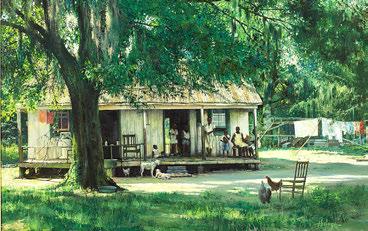
Clark Hulings (1922-2011), “Louisiana,” oil on canvas, signed lower right. Depicts cottage with family on porch, chickens and dogs in foreground. Framed size: 32 by 44 inches. Property of Earll M. Pott (San Diego, Calif.), by descent from his mother and grandparents, Robert and Caryll McConnell, who purchased it from Grand Central Galleries (NYC) pre1972 (gallery label on verso) ($60/80,000).
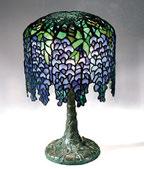

Rare gilded copper Native American weathervane, American, circa 1890. Swell-bodied figure in ribbed and scalloped costume with sheet-copper feathers as headdress holds bow and arrow. Bridgehampton, N.Y. private collection ($60/80,000).
ink-on-paper work depicting a standing Aboriginal man has an auction estimate of $4/6,000.
The auction includes six paintings of quintessential New York scenes by Johann Berthelsen (1883-1972). The largest of the works, an oil on canvas titled “5th Ave Looking South from 59th St (Nocturne),” leads the group with an estimate of $3/5,000.
A collection of Latin American paintings from the estate of Enrique Manuel Arias (Alachua, Fla.) is also featured in the auction. Among the paintings in his collection are a large-scale oil on canvas still life by self-taught artist Miguel Florido (Cuban, b 1980), “Still Life with Gourds,” which is estimated at $4/6,000; and a humorous 2004 work by Cuban artist Ruben Alpizar (b 1965) titled “Windows with Figures,” ($4/6,000).
A standout furniture lot is a large, mid-Eighteenth Century Swedish rococo giltwood mirror ($5/8,000). Other furniture highlights include an early Nineteenth Century Kentucky secretary ($2/3,000); and acirca 1810 sugar chest ($400/600).
Day 2 of the auction is notable for its variety of treasured pieces from the Ira and Nancy T. Koger estate. There are examples of Chinese ceramics, including a pair of blue and white “Aster” chargers

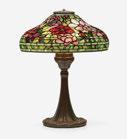
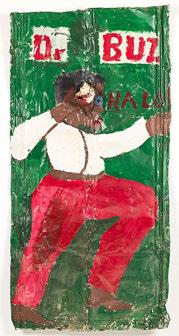
Sam Doyle (1906-1985), “Dr Buz Halo,” paint and shell on metal, 54½ by 27¼ inches. Property from a Savannah, Ga., private collection ($8/12,000).
($1,2/1,800). Also, a painting of a fish that was purchased as the work of Alfred Sisley (French, 1839-1899) comes with an unusual back story. A handwritten note, which is included with the lot, states that the painting is actually part of a larger Sisley work that was cut in two by a previous owner. The painting comes to auction with a $2/3,000 estimate.
The auction’s closing session on October 31, includes property from the collection of Bob Herron, an avid collector who has resided in Boston, Paris and Savannah. A striking image from his collection is photographer Peter Vanderwarker’s Type C print titled “Near Marfa, Texas.” A depiction of the famous “Prada Marfa” pop art installation located in remote West Texas, it carries an estimate
of $2,5/4,000. Herron’s collection is also the source of an unusual pair of bronze snake-form candlesticks by studio furniture artist Judy Kensley McKie (b 1944). They are initial-signed and dated 2009 and each is numbered 2/8 under its base. The eye-catching serpentine duo stands 12¼ inches tall and is estimated at $9/12,000.
The auctions will start at 10 am EST on all three days of the series. Bid absentee or live online via Everard, LiveAuctioneers, Bidsquare or Invaluable. The public is invited to an October 22 preview reception from 5 to 7 pm at Everard Auctions’ gallery, with additional previewing available October 23, 24 or 25, or by appointment. Everard is at 2436 Waters Avenue. For information, 912-2311376 or www.everard.com.

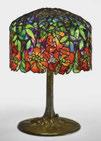

Compiled By Antiques and The Arts Weekly
Madelia Hickman Ring & Carly Timpson
BILBAO, SPAIN — Since its inception in 1908, the Bilbao Fine Arts Museum has significantly expanded its collections through donations and legacies. This method of acquisition has persisted over time, becoming a hallmark of the institution: more than 60 percent of the artworks in the museum’s artistic heritage have been bequeathed or donated by individuals, institutions and corporate entities.
In this historical lineage, Begoña María Azkue added her contribution last year, formalizing a legacy to the museum with the stipulation that it be dedicated entirely to the acquisition of artworks to enhance the collection.
The first acquisition from this legacy was the oil painting “El voto en Sainte-Anne d’Auray” (circa 1870), a significant work by French academic painter William Bouguereau, which enriched the museum’s Nineteenth Century collection. Acquired at the Ansorena auction house in Madrid in January 2023 for €165,466 (about $180,000), the painting was unveiled to the public in November of that year.
Now, the museum announces the second addition acquired at the Giquello auction held at the Hôtel Drouot in Paris in December 2023 for €54,600 (about $60,000). This piece is the “Retrato de Erik Satie,” painted in Paris by Ignacio Zuloaga around 18931894. This acquisition enhances the notable collection of 10 paintings by the Basque artist held by the museum, which includes works such as “Retrato del conde de Campo Alegre” (circa 1892), “La dama de la sombrilla” (circa 1895-97) and “Desnudo de mujer” (circa 1939).
Beyond its artistic significance, this new addition pays implicit homage to Begoña María Azkue, who had a profound passion for music.
“Retrato de Erik Satie” is a significant work capturing the early production phase of Ignacio Zuloaga, reflecting a period when artworks by the artist are scarcely
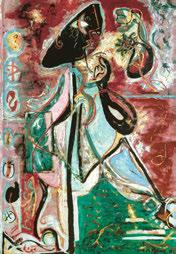
Jackson Pollock, “The Moon Woman” (1942), oil on canvas. Peggy Guggenheim Collection ©Pollock-Krasner Foundation / ADAGP, Paris 2024.

available in the market. The canvas documents a time when Zuloaga’s painting showed the influence of Eugène Carrière, transitioning from the naturalism of Impressionist palettes to a more restrained chromatic scheme and chiaroscuro lighting, aligning him with symbolism. The portrait features a bust of the young Satie in an indeterminate interior, his profile illuminated softly, adorned with the bohemian attire typical of Montmartre — a long beard, flowing hair, pince-nez glasses and a frock coat. This attire predates the green corduroy “uniform” Satie would adopt from 1895 onwards.
Zuloaga created this portrait during his early career at the age of 23 while striving to complete his self-taught education amid the modern art scene of Paris. He mingled with a bohemian collective of poets, painters and musicians, including a notable community of Basque and Catalan artists frequenting cafés and cabarets. Among his acquaintances was Pablo Uranga, with whom he shared residence on rue Cortot, near the painter Suzanne
Valadon, who had a romantic liaison with Satie in 1893. By this time, Zuloaga had likely met Satie, who played the piano at the cabaret Le Chat Noir, a hub for artists like Ramón Casas and Santiago Rusiñol.
Zuloaga’s contemporaries — Valadon, Uranga, Casas and Rusiñol — also portrayed Satie, who was already establishing himself as an exceptional talent. His influence would later extend to contemporaries such as Debussy and Ravel, reaching modern minimalists like John Cage and Steve Reich. Satie was also depicted by avant-garde artists like Cocteau, Picasso, Larionov, Goncharova, Brancusi, Man Ray and Picabia. He composed the score for René Clair’s experimental short film Entr’acte (1924), currently screened at the museum as a prelude to the exhibition “Entreacto.” His collaborations with Jean Cocteau and the celebrated Ballets Russes, led by Sergei Diaghilev, included the music for the ballet Parade (1917), featuring sets and costumes designed by Picasso.
This painting was a gift from Zuloaga to Satie, inscribed and dedicated “A mon cher ami Erik
Satie.” Satie cherished the portrait until his passing in 1925. Zuloaga (1870-1945) achieved great commercial success and garnered numerous awards and distinctions throughout his career, establishing himself as one of the most renowned artists of his time. With an early self-taught background amidst a family of celebrated goldsmiths and ceramists, he discovered the Museo del Prado in 1887, where he studied Spanish masterpieces as a copyist.
In 1888, he traveled to Rome, spending over eight months in the city to enhance his artistic knowledge. A year later, in 1890, Zuloaga settled in Paris, attending the Académie de la Palette under the guidance of Henri Gervex, with Eugène Carrière as a teacher. In Paris, he experimented with a language derived from naturalism and symbolism, forming close ties with prominent painters such as Edgar Degas, Paul Gauguin, Henri Toulouse-Lautrec and Maxime Dethomas, alongside the significant colony of Basque and Catalan artists, particularly Pablo Uranga, Francisco Durrio, Miquel Utrillo, Ramón Casas and Santiago Rusiñol.
His travels continued, and he began exhibiting at international salons, gaining fame and prestige with an iconography aligned with the vision of the Generation of ‘98, establishing him as an ambassador for Spanish painting in Europe. In 1899, he married Valentine Dethomas and maintained active engagement with influential artistic circles. His close friendships included sculptor Auguste Rodin and writers Ramón del Valle-Inclán, Miguel de Unamuno, Ramiro de Maeztu, Azorín and José Ortega y Gasset.
In 1909, Zuloaga held a successful solo exhibition at the Hispanic Society of New York, receiving numerous commissions from American high society. Before the conclusion of World War I, he completed another tour of the United States between 1916 and 1917, solidifying his status in America.
In 1919, collector and patron
Ramón de la Sota purchased Zuloaga’s renowned “Retrato de la condesa Mathieu de Noailles,” subsequently donating it to the Museo de Bellas Artes de Bilbao. His first individual exhibition in Spain was inaugurated by King Alfonso XIII in 1926 at the Palacio de Bellas Artes in Madrid, and in 1931, he was appointed president of the Patronato del Museo de Arte Moderno de Madrid.
From this point, Zuloaga’s painting underwent significant changes; no longer reliant on commissions, he dedicated more energy to portraying friends and family, as well as landscapes and still lifes. The Civil War found him at his home in Santiago Etxea in Zumaia (Gipuzkoa), devoted to his art. With the onset of World War II and shifting societal tastes, his traditionalist work fell out of favor in the art market, and he became recognized as a master of Spanish painting.
Begoña María Azkue (19442023) was born in Etxebarri in 1944 and led a culturally vibrant life, translating her personal passions into action.
Committed to the Basque language and culture, she was involved with the ikastola Urretxindorra (Bilbao), where she translated educational materials. Additionally, she actively participated in adult education classes at the University of Deusto.
Driven by her passion for culture in its broadest sense, Begoña traveled extensively, deepening her understanding of Semitic and Mediterranean cultures while attending significant musical events and international concerts. A discreet individual, Begoña Azkue joined the Community of Friends of the Museum in 2020 — a particularly delicate time during the pandemic. She reaffirmed her commitment by stipulating in her will that she wished to contribute to the enrichment of the Museo de Bellas Artes de Bilbao’s collection, representing her final act of civic and cultural philanthropy. For additional information, www.bilbaomuseoa.eus.
PARIS — Through January 19, the Musée National Picasso-Paris presents a new exhibition devoted to the American artist Jackson Pollock. The first exhibition in France since 2008, it focuses on his early works, from 1934 to 1947.
The exhibition “Jackson Pollock: The Early Years (19341947)” looks back at the early career of Jackson Pollock (1912-1956), marked by the influence of Regionalism and Mexican muralists, through to his first drippings in 1947. This body of work, rarely exhibited, bears witness to the diverse sources that nour-
ished the young artist’s research, crossing the influence of Native American arts with that of the European avant-gardes, among which Pablo Picasso figures prominently. Compared by critics to the Spanish painter and the great names of European painting, Pollock was quickly established as a true icon of American painting. In so doing, he became isolated from the complex networks of exchanges of influences that fostered his work during his New York years. The exhibition aims to present these years in detail, which were the
basis of his work, by restoring the artistic and intellectual context from which both Picasso and Pollock developed their work.
The exhibition focuses on several key moments in young Pollock’s artistic and intellectual development during these years of experimentation. By calling on key figures in his artistic career (Charles Pollock, William Baziotes, Lee Krasner, André Masson, Pablo Picasso and Janet Sobel), the exhibition highlights the intensity and singularity of his work in its various dimensions such as painting —
incorporating everyday materials — engraving and sculpture.
The exhibition features about 100 works from prestigious international institutions such as New York’s Museum of Modern Art, the Metropolitan Museum of Art, the Centre Pompidou, the Tate and the Stedelijk Museum.
The exhibition catalog, Jackson Pollock The Early Years , is available in both French and English.
Musée National Picasso-Paris is at 5 rue de Thorigny. For information, www.museepicassoparis.fr/en.
BY COLLEEN BARRY
MILAN, ITALY (AP) — An Italian family hopes to prove definitively that a painting discarded from a villa on the island of Capri more than 60 years ago is a Picasso and has been gathering scientific data to persuade Picasso’s estate administration in Paris to make the definitive call.
The rolled-up canvas of a female figure was discovered in a pile of trash that a junk dealer was hired to discard in the early 1960s, and it hung innocuously in the family living room and then restaurant in Pompei, near Naples, for years until his son decided to investigate.
“My mother called it ugly,” the junk dealer’s son, Andrea Lo Russo, said Thursday, October 3. “Here, we are used to landscapes featuring the sea.”
Lo Russo said that his first inkling that the painting may be an important work came when he saw a Picasso in a middle school textbook, but neither his teacher nor his father were persuaded. His curiosity persisted, and in his early 20s, he and his brother drove to Paris and brought the painting to the Picasso Museum.
“They looked, and they said, ‘It is not possible,’” Lo Russo recalled. He said that he declined their invitation to leave the painting for further examination, not wanting to relinquish it.
After decades of trying to determine the painting’s provenance, Lo Russo believes that a recent battery of tests carried out by the Swiss-based Arcadia Foundation finally offers proof that it’s the work of Picasso. They include lab tests that show the
paints used were consistent with Picasso’s color palette during the period in question, said Luca Marcante, a trained chemist who founded the Arcadia Foundation in 2000 to investigate the provenance of artworks. Most recently, a handwriting expert authenticated the signature on the upper-left hand corner as that of Picasso, Marcante said.
The only entity that can authenticate the painting is the Picasso Administration in Paris. It hasn’t responded to a series of inquires over the years. Marcante said that he’s preparing to share the most recent findings with them.
“You need to understand, they get dozens of inquiries every day from private people believing they have found a Picasso,’’ Marcante said.
Contacted by The Associated Press, the Picasso Administration declined to comment on the case.
Marcante put the value of the painting at 6 million euros ($6.6 million), but said that if fully authenticated, it would soar to 10-12 million euros. After years of hanging casually in the Lo Rosso family home, it’s now in a vault in Milan.
Marcante said that the painting is strikingly similar to a 1949 painting attributed to Picasso called “Tete du femme,’’ which is included in the online Picasso Project curated by the Sam Houston State University in Texas.
Marcante said that there is photographic proof Picasso visited the ruins of Pompeii in 1917, and asserts that he likely also visited nearby Capri, where he may have
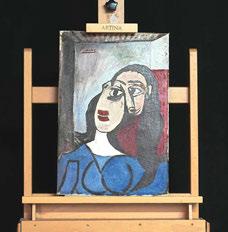
A painting is seen at a restoration laboratory in Milan, Italy, on Thursday, October 3, 2024. An Italian family hopes to prove definitively that a painting discarded from a villa on Capri more than 60 years ago is a Picasso (AP Photo / Antonio Calanni).
painted the Lo Russo-owned canvas sometime in the early 1940s, leaving it behind “forgotten in time.”
Marcante is convinced that the found painting isn’t a forgery, because of the differences between the two, including different ceilings, and a missing edge on the seat.
The painting “Tete du femme,” appears to be of Picasso’s one-time lover Dora Maar, given the dark hair and dark eyes, according to Enrique Mallen, the Picasso
scholar who runs the online project. He cast doubt on the theory that Picasso would have created two paintings that were so similar.
“From what I know of studying Picasso for 30 years, he would never do an identical copy of his own work,’’ Mallen told The Associated Press. “He was quoted as saying, ‘You can copy anyone expect yourself.’”
The only record of “Tete du femme” was in a 1967 book, where it was listed as being in a private collection in Turin. It has never turned up in other references, Mallen said.
Mallen underlined that his online database, which numbers more than 41,000 Picasso entries, assembles images of paintings, sculptures, drawings and other works attributed to the artist, but doesn’t attest to their authentication — something only the Picasso Administration can do.
Marcante called the “Tete du femme” “a ghost painting, because no one has ever seen it.”
“The only real one is ours, that we have examined in a scientific manner. We are convinced of our work, and of the results science has given us,” Marcante said. “We can touch this painting with our hands. It is real, it is authentic.”
If the painting his father discovered is confirmed to be a Picasso, Lo Russo said that the family is still trying to figure out if they would sell it, caught in a whirlwind of inquiries since news of the painting’s suspected provenance surfaced this week. “We are confused ourselves,” he said.
MADRID, SPAIN — In a significant addition to its collection, the Prado Museum in Madrid has acquired a portrait of the Count-Duke of Olivares, donated by Sir John Elliott. The portrait is linked to the workshop of Diego Velázquez, one of Spain’s most revered painters, and offers a rare opportunity to further enrich the museum’s collection with another work connected to the Sevillian master. More importantly, it enhances the iconography of one of the most influential figures of Seventeenth Century Spain.
The portrait is part of a group of six paintings derived from an original work housed at the Hermitage Museum in Saint Petersburg, Russia. Of the known copies, the newly acquired piece is considered the highest in quality, featuring a more spontaneous and vibrant brushstroke style. The painting, accepted by the Prado in October 2015 as a donation from Sir John Elliott, had been held under usufruct until this year. Sir Elliott, a former honorary trustee of the Prado’s Royal Board of Trustees, has long been recognized for his groundbreaking work on early modern Spanish history, with a particular focus on the life and influence of the Count-Duke of Olivares.
The Count-Duke of Olivares, or Gaspar de Guzmán y Pimentel, was one of the most powerful statesmen of his time, serving as the chief minister to King Philip IV of Spain. His political career, while marked by moments of brilliance, was also riddled with controversies that eventually led to his downfall. His association with the Spanish court during the reign of Philip IV is one of the key themes in Velázquez’s body of work, as the artist served as the court’s official painter. This

particular portrait, depicting the CountDuke in bust form, is a powerful reminder of the close ties between art, politics and personal ambition during Spain’s Golden Age.
The portrait is part of a larger group of works that scholars believe to be derived from the same original portrait at the Hermitage. Among the six known versions, this one stands out for both its exceptional quality and its fidelity to Velázquez’s original composition. Its painterly execution reflects the spontaneity and vigor that characterize Velázquez’s courtly portraits, even though it was most likely produced by his workshop rather than by the master himself.
During Velázquez’s time as a court painter, it was common practice to create multiple copies of royal portraits to meet the high demand for images of the monarchy and its leading figures. These paintings were distributed not only to various palaces and governmental offices within Spain but also sent to other European courts to affirm Spain’s political and
cultural influence. As the king’s favorite and one of the most powerful men in Spain, Olivares was a key figure in these artistic endeavors. His image, like that of the king, needed to be tightly controlled to maintain decorum and convey the appropriate grandeur and dignity.
Velázquez’s workshop played a crucial role in replicating these portraits, ensuring both the technical excellence and the symbolic authority of each image. While Velázquez himself may have only directly painted a few of these portraits, his supervision over the workshop ensured that each version met the court’s rigorous standards. This particular portrait of Olivares is an example of how the workshop’s output adhered to those high standards while also allowing for the flourishing of a more spontaneous and dynamic style that is often associated with the master himself.
Sir John Elliott, one of the most respected historians of early modern Spain, has long had a close connection with both the Prado Museum and the subject of this portrait, the Count-Duke of Olivares. His magnum opus, “The Count-Duke of Olivares: The Statesman in an Age of Decline,” remains a foundational text in the study of Spanish history, offering insights into Olivares’s political strategies and his ultimate failure to reverse Spain’s economic and political decline in the Seventeenth Cntury.
Elliott’s donation of this portrait is a testament to his deep appreciation of Spain’s cultural history, and his long-standing relationship with the Prado reflects his desire to ensure that Spain’s artistic heritage remains accessible to the public. His contribution of this work is also deeply
symbolic, as Olivares was the driving force behind the construction of the Salón de Reinos, part of the Buen Retiro Palace, which now forms part of the Prado Museum’s campus. The Salón de Reinos was originally conceived as a grandiose statement of Spanish power and imperial dominance, and its walls were adorned with paintings by Velázquez and other great artists of the era. By donating a portrait of the man responsible for this cultural project, Elliott helps complete a historical circle that spans both art and politics.
The addition of this portrait to the Prado’s collection is a significant milestone in the museum’s ongoing efforts to complete its holdings of works connected to Diego Velázquez. The Prado already boasts the world’s most comprehensive collection of Velázquez’s paintings, including masterpieces such as “Las Meninas” and “The Surrender of Breda.” This new acquisition complements other portraits of Olivares in the museum’s collection, providing a richer understanding of the man who wielded immense power at the Spanish court. Moreover, this portrait offers a glimpse into the working practices of Velázquez’s studio, where the demands of the court required the production of numerous highquality replicas of original works. It also highlights the challenges of controlling one’s public image in a time when art was a primary means of political communication. Through these portraits, Olivares sought to project an image of strength, authority and loyalty to the crown — qualities that were central to his political identity, even as his career was ultimately marked by his failure to maintain Spain’s dominance in Europe. For information, www.museodelprado.es.
NEW YORK CITY — This fall, the New-York Historical Society presents a special exhibition that explores the rich, complex and varied relationships between New Yorkers and their animal companions across the last three centuries. “Pets and the City,” on view through April 20, surveys how the concept of pets has evolved in tandem with the development of New York — from the role of animals among Indigenous cultures, such as the Lenape and Haudenosaunee, and the hunting
culture that accompanied settlers from Europe, to the pampered pets that are considered members of the family today. Through a broad spectrum of works of art, objects, photographs, documents and memorabilia drawn largely from New-York Historical’s Museum and Library collections, as well as film and television clips, the immersive exhibition also examines the broader social context for New York’s pet population and related topics, including pet adoption, the trafficking

“James Beekman, Jr (1758-1837)” by John Durand (active 1766-82), 1767, oil on canvas. New-York Historical Society, Gift of the Beekman Family Association. 1962.71.
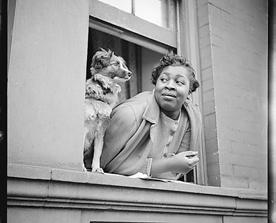
“New York, New York. A Woman and Her Dog in the Harlem Section” by Gordon Parks (1912-2006), 1943, print from a digitized image. Library of Congress, Washington, DC.
of exotic animals, animal rights laws and the role of service animals. “Pets and the City” is curated by Roberta J.M. Olson, curator of drawings emerita.
“In New York City alone, it is estimated there are more than two million animal companions who reign over human hearts, homes and pocket books,” said Olson. “Given that, it’s fascinating to explore how these creatures rose to such a place of distinction. From the origins of pets among Indigenous people to
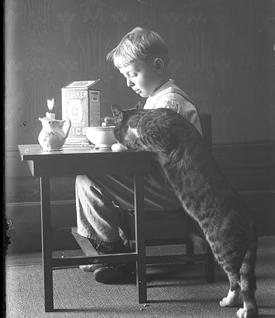
“William Gray Hassler seated at a small table eating Quaker Puffed Rice cereal, with Reddy the Cat” by William Davis Hassler (1877-1921), circa 1912, print from a digitized negative. Patricia D. Klingenstein Library, New-York Historical Society.
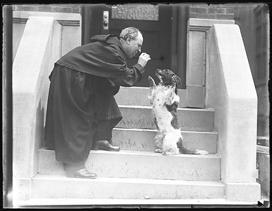
“Father Teizen and His Dog Brownie” by William Davis Hassler (1877-1921), circa 1911-21, print from a digitized negative. Patricia D. Klingenstein Library, New-York Historical Society.
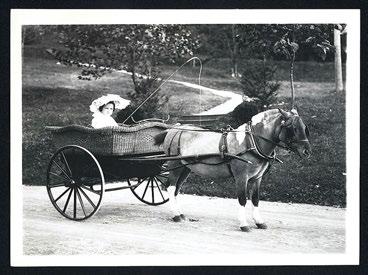
today’s doggy daycares and cat cafés, this exhibition offers a visual journey through the evolving relationship between Gotham’s people and its animals as the city and its population transformed into a diverse metropolis. City dwellers’ relationships with animals and pets illuminate humanity’s relationship with nature and are the bellwether of our shared future and the fate of our planet.”
“Pets and the City” begins with an exploration of the essential role that animals played in early American societies, both among Indigenous peoples and settlers.
For many Native people, animals are considered kindred spirits and integral parts of a spiritual and moral unity, where the natural world is a sacred web of relationships; hunting was not merely a means of sustenance but a ritualized act that honoured the deep connection between humans and animals. Exhibited documents from 1788 reveal Mohawk individuals signing their names with drawings of their clan animals, such as turtles and foxes, ref lecting their reverence for animals as clan symbols passed down through women in matrilineal societies.
The exhibition also explores the different roles pets have played in everything from commerce to competition. In the late Nineteenth Century to early Twentieth Century, commercial trade cards aimed at women advertised a business on one side, and on the other featured beguiling images of cats, birds and their
human counterparts. Children’s games and manufactured toys soon focused on pets, reflecting their status as surrogate companions in an industrialized society; an assortment of these popular games are on display. At the same time, the city saw the advent of many of the first pet shows; the Westminster Kennel Club Dog Show (1877) holds the record for the second oldest continuously held sporting event. Never to be overlooked, felines were celebrated at the first national cat shows, one in 1881, recorded in a rare postcard in New-York Historical’s collection, and the more widely known one held at Madison Square Garden in 1895, where the winner of Best Long-haired Cat was Cosey the Maine coon.
The history of working animals is also explored with historic photos and contemporary gear for Seeing Eye dogs and identification badges for bomb-sniffing dogs. Horses, a main mode of transportation in earlier centuries, are also featured in paintings, photographs and drawings. At the end of the Nineteenth Century, there were almost 200,000 horses in Manhattan and Brooklyn alone, most as the power for public transportation, but also as pets used by scores of riding clubs, polo teams, fox hunters and even cowboys.
The New-York Historical Society Museum & Library is at 170 Central Park West. For further information, 212-873-3400 or www.nyhistory.org.

“Trade Card: Manhattan Bird Store, New York City” by Meyer, Merkel & Ottmann Lithography (1869-1901), chromolithograph. Patricia D. Klingenstein Library,

Joseph H. Davis (active 1832-1837), James (1777-1852) and Sarah (Clark) Tuttle (circa 1779-1840), 1836, gouache, watercolor, graphite and black ink with selective glazing on paper. New-York Historical Society, purchased from Elie Nadelman. 1937.1715.
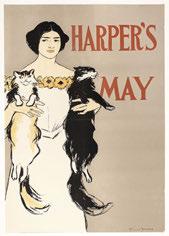

PELHAM, N.H. — Legare
Auctions has a diverse, timed, online estate auction scheduled on Auction Ninja that starts to close on Thursday, October 24 at 7 pm.
“This sale features some really interesting items from several estates,” said Leo Legare.
“The eclectic lots range from an Eighteenth Century St Etienne flintlock musket to a Twentieth Century Sega 10 cent slot machine in working condition with the key. There are some nice period pieces, including two spice chests, Windsor chairs, a Queen Anne brass kettle stand, a curly maple Chippendale five-drawer chest with carved pinwheel drop and an Eighteenth Century blunderbuss with original flintlock and ram rod.
“With such an eclectic sale, there are highlights in several
categories. Among the coin lots, there are Morgan silver dollars, Peace dollars, several lots of half dollars and silver coins, along with proof sets. There is a nice variety of sterling silver, estate rugs, artwork and a Civil War Calvary sword.
“When it comes to interesting, unusual, and fun items,” Legare continued, “the tin S&H Green Stamp sign is memorable. There is a large, colorful lot of Murano glass that looks like hard candy and a Twentieth Century Ruppert Knickerbocker electric wall clock in working condition that is certainly fun. As with any sale that comes from estates, there is something for everyone, and a few surprises, such as an Indigenous American bow and beaded vests, a Space Shuttle banner and an early Teddy bear.”
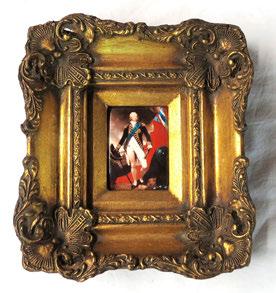
There will be a preview by appointment only, on Monday, October 22 and Tuesday, Octo-

Small enamel painting of George IV in a gold leaf frame.
ber 23 between 9 am and 4 pm. Legare Auctions is at 1306 Mammoth Road. For informa-
LOS ANGELES — The Academy Museum of Motion Pictures announces the details of its two marquee Fall 2024 exhibitions, “Color in Motion: Chromatic Explorations of Cinema” and “Cyberpunk: Envisioning Possible Futures Through Cinema.”
“Color in Motion” investigates the role of color in film, from the technological advancements that made its use possible, to the ways filmmakers use color as a storytelling tool, to its psychological impact on audiences. On view through July 13, this exhibition highlights the role color has played since the earliest days of film history — both as a tool for technological experimentation and artistic expression.
The exhibition features technologies from Technicolor and Eastman Color, objects such as the legendary ruby slippers designed by Gilbert Adrian from The Wizard of Oz (1939), the green dress designed by Edith Head and worn by Kim Novak in Vertigo (1958), a Wonka chocolate bar from Willy Wonka and the Chocolate Factory (1971), a blue ensemble worn by Jaime Foxx as Django in Django Unchained (2012), many animations and films and a recreation of the stargate corridor from Stanley Kubrick’s 2001: A Space Odyssey (1968), which will transport visitors into a colorverse.
Jessica Niebel, senior exhibitions curator, said, “‘Color in Motion’ will offer visitors both dynamic learning opportuni-

ties and emotional connection through an engagement of the senses. Exploring color through the lenses of technology, artistry and experimentation, the exhibition is as entertaining as it is informational.”
“Cyberpunk,” on view through April 12, 2026, examines the global impact and lasting influence of the science fiction subgenre cyberpunk on film culture. The Academy Museum’s presentation explores this genre through an international and multigenerational lens, featuring more than 25 films, including Blade Runner (1982), Tron (1982), Videodrome (1983), Terminator 2: Judgment Day (1991), The Matrix (1999), Sleep Dealer (2008) and Alita: Battle Angel (2019), as well as Afrofuturist
films, including Pumzi (2009) from Kenya, Neptune Frost (2021) from Rwanda and Indigenous futurist films, such as Night Raiders (2021) from Canada.
“With the rapid advancement of new technologies, including artificial intelligence, now feels like an especially relevant moment to present an exhibition on cyberpunk cinema,” said vice president of curatorial affairs Doris Berger. “I’m particularly excited that our exhibition presents classic cyberpunk movies alongside more recent futurist films from around the world.”
“Color in Motion” and “Cyberpunk” are part of PST ART: Art & Science Collide, an initiative presented by Getty featuring more than 70 cultural
institutions across Southern California, offering thematically linked exhibitions and programs in a five-month-long exploration of the intersections of art and science. Both exhibitions will have companion publications and bespoke merchandise available at the Academy Museum Store.
Coinciding with the opening of “Color in Motion,” the Academy Museum will present a selection of films in a limited screening series entitled The Wonder of Technicolor, kicking off with a new 35mm print of Alfred Hitchcock’s Vertigo (1958) from the Academy Film Archive on Sunday, October 6. The series will run through November 23. In January 2025, the museum will present a screening series to complement “Cyberpunk,” featuring
tion, 603-595-9625, 603-3257270 or email to llegareauctions@gmail.com.
films by David Cronenberg, the Wachowskis and more. The Academy Museum of Motion Pictures is at 6067 Wilshire Boulevard. For information, www.academymuseum.org or 323-930-3000.
Admis. $8 at the Boxboro Regency Hotel 242 Adams Place, Boxborough, MA. October 20 • 10am to 2pm www.gurleyantiqueshows.com
Round top, square leg chair table in dry red paint and scrub top. FOR SALE 1890’s Kennebunkport, Maine 63 Glass Slides (people, boats & water) 914-523-8066
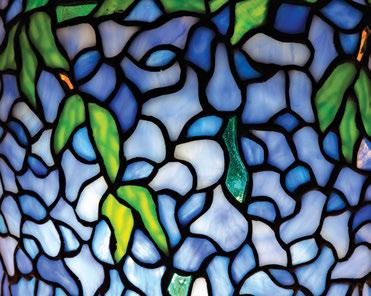
Quality services since 1971 Period & Contemporary Leaded Lamps S traightening, gold plating, patination, wiring, etc Specializing in Tiffany Studios shades, bases, frames & desk pieces. Porcelain, Pottery & Painting Restoration & Repair. Bronze Restoration & Repair 718-798-0193 or 914-391-7188 2419 Eastchester Rd, Bronx, NY ljzinzi@optimum.net • www.Larryzinzi.com
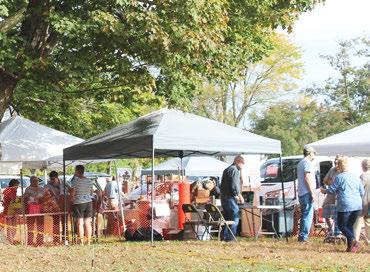

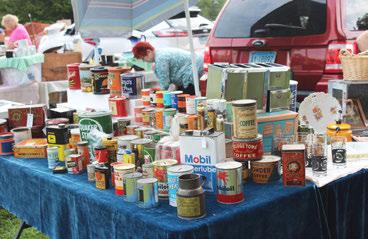
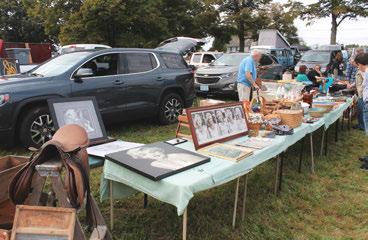
LEBANON, CONN. — The weather was perfect for shopping as the sun finished rising in the Connecticut sky on the morning of Saturday, September 28, the day of the 57th Annual Antique Show in Lebanon. Dealers were putting the finishing touches on their booths, spread throughout the Lebanon Green, as the nearby church’s bell struck 9 am, the start time for the single day of local antiquing organized by the Lebanon Historical Society. Featuring nearly 60 dealers, free parking and coffee, donuts, grilled hot dogs and burgers, homemade chowders, sandwiches and slices of pie, it was sure to be a good day for any who attended.
And a good day it was! Grace Sayles, public relations manager for the Lebanon Historical Society Museum — affectionately known as “Gracie” to all — shared with Antiques and The Arts Weekly after the show that, “We had a great day. All the dealers we spoke with had a good day; some even had a record day selling. One comment we always hear is, ‘We love coming to this show every year. Everyone is so friendly, and we are treated so well.’
Everyone always enjoys the food and especially the chowders and pie. Lebanon is a beautiful place with lots of history centered around the Lebanon Green. Great weather and lots of smiling faces.”
The first booth we stopped at belonged to sisters April Holinko and Ellie Nass. Selling under separate business names, the two each offered items from their late father’s collection, along with their own findings.
“He used to set up at this show for many years; he did a lot of shows,” shared Holinko, who owns April’s Attic, based out of By the Pond, a 35-vendor shop in Columbia, Conn. “I’m continuing the tradition with my sister.” Holinko’s side of the booth contained a mix of many items, including antique oil and gasoline cans, cast iron banks and a few binders-worth of trade cards from the turn of the century, priced anywhere from $3 to $100 apiece.
“This is in our blood, to do this. It’s our life, even if we’re not selling it somewhere,” shared Ellie Nass, Ellie’s Little Place, Mansfield, Conn., the second half of the sisterly duo. She offered an eclectic mix of jewelry, antique buttons, vintage stuffed animals, vintage Christmas decorations, Americana and doll clothing.
Antique Persian and Turkish carpets lined almost every nook and cranny of the booth of Thomas Degnan, Ashford, Conn., who explained that he sourced his rugs from other antique dealers, out of homes and at various auctions. “I try to deal in quality and age,” he said. His favorite rug stood out from the rest; a Turkish Usha
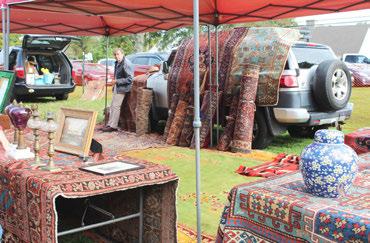
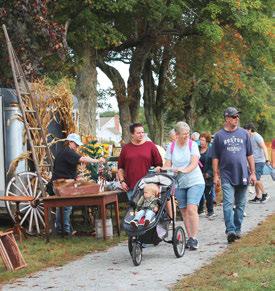
rug from the Nineteenth Century, which was mostly green in color. While most of his booth was oriented towards the carpets, Degnan did not want us to forget his other offerings: Asian and Middle Eastern porcelain — such as a bowl originally from Morocco — and a “nice collection of World War II models, probably from the 70s.” The models were mostly ships and U-boats originating from both Axis and Allied nations.
It was Pat and Joe Cosgrove’s first time at the Lebanon show; the brothers were selling things from their parents’ collection. Their morning thus far had been filled with their very first sales, Pat enthusiastically shared. Pat, based in Ashford, Conn., was offering his parents’ Pennsylvania stoneware. “To me, they’re functional even in a modern environment,” he added, explaining that potential buyers could repurpose the stoneware into something like a flower vase. His brother, Joe, based in Columbia, Conn., had a particular fascination with Coca-Cola advertisement, and offered signs, clocks, coolers, thermometers and other antique products from the soda company; he was selling a large sign when we approached the duo’s booth. The owner of Staple View Antiques, Windsor, Conn., who chose not to publicize her name, used to work on a horse farm but now just does antiques shows. She and her family run the business together and she brought an eclectic mix of things to Lebanon, including live blueberry plants, antique books, lots of smalls, linens, vintage purses, wooden trunks, vintage Christmas ornaments, antique kitchen items and decorative plates, among others. When asked what her favorite thing was to collect, the owner shared it was difficult to choose, especially as she is older and selling her collections. However, when pressed, admitted she liked wooden articles, including kitchen items and wooden boxes.
Another eclectic stop was at the booth of John and Francine Gintoff, who go by the name 20th Century Objex. The East Hampton, Conn., couple had something for everyone; mod-


Cobblestone Farm Antiques, Storrs, Conn., offered all things military and country, among others.

Posing for a picture, this corn was smiling ear-to-ear as it advertised the Lebanon Farmers’ Market, which takes place every Saturday from 9 am to 12 pm at the Town Hall Green, through the end of October.
ern and traditional paintings, smalls, vintage dolls, silver and other jewelry, vintage bags from Coach and other high-end brands, vintage clothes, Steiff animals — we spotted bears, dogs and lambs — and a vast array of Disney and Star Wars items. Looking for a fun Halloween gift? One of the standout offerings from the Gintoff’s Disney collection was a number of still-in-the-box vintage The Nightmare Before Christmas dolls, including Jack Skellington. “We like to focus on Midcentury art and jewelry and art pottery,” Francine said, gesturing to a small Midcentury Modern table from the 1960s that exemplified the couples’ passion perfectly.
Traveling all the way from Narragansett, R.I., was Jeff Pratt, whose specialty is country antiques, cast iron, unusual smalls and books. “You name it, I sell it; whatever I can get,” he said with a smile. Going along with that theme, Pratt brought vintage milk bottles, antique books, a selection of wooden picnic baskets, a model firetruck, cast iron cookware, an English-style horse saddle and a collection of portraits and photographs of Marilyn Monroe, among other offerings. “I used to do shows all over New England, but this is the only show I do now,” Pratt said.
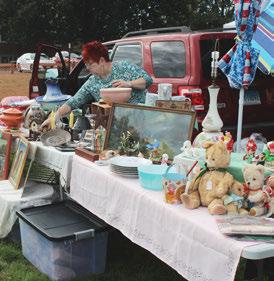
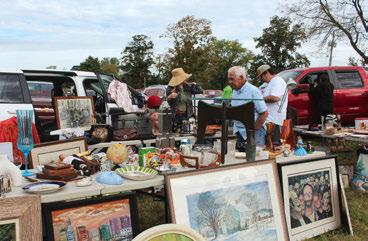
“Eclectic” was the word used by John and Francine Gintoff, 20th Century Objex, East Hampton, Conn., when asked to describe their booth. However, their focus is on all things Midcentury, like the small glass top table from the 1960s on display above the paintings in the righthand side of this picture.

Enthusiastic attendees began to line up more than 30 minutes before the show’s 9 am start time; this picture was taken a few minutes before they were let inside.
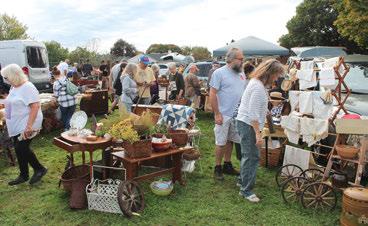
The booth of Staple View Antiques, Windsor, Conn., was very popular with attendees; their eclectic mix of items seemed to draw a crowd.
What has kept him coming back? “I love the way it’s run; there’s a lot of country at this show, good food, well-advertised and the people that run it are outstanding.”
Cobblestone Farm does a few shows a year and mostly specializes in all things country, photography — specifically early photography and photo cases — and country signage and advertisement, which they had already sold that morning; they were also happy to share that they were dedicated readers of Antiques and The Arts Weekly. Also offered at the booth was a plethora of militariana, including antique officers’ hats and uniforms, swords and guns, among other items. An 1872 officer’s sword was being looked over by an attendee as we approached the booth; its rarity came from the fact that the officer’s name was etched into it, usually these types of blades did not contain names.
Len and Deb Messina, American Antiques and Collectibles, LLC, Middletown, Conn., were
“having a great day” selling their collection of Connecticut glass bottles, which they had separated into different categories across the length of their large display table. Categories included a whole table of large Connecticut glass, standard fruit jars, medicine bottles and whiskey bottles. Of the whiskey bottles, Len mused, “they’re always popular; sometimes it’s the shape, sometimes the color. It’s just a lot of fun, it takes up room in any space.” Both Len and Deb were very happy with their audience at this show, explaining, “The people in this area have an appreciation for glass, not just old things in general; they definitely have an interest in glass. We’re always happy to be in Lebanon, we love the small town atmosphere, combined with the rich history.”
The 57th Annual Antique Show in Lebanon acts as a fundraiser for the Lebanon Historical Society. The date for next year’s show has not yet been announced. For information, 860-642-6579 or www.historyoflebanon.org.
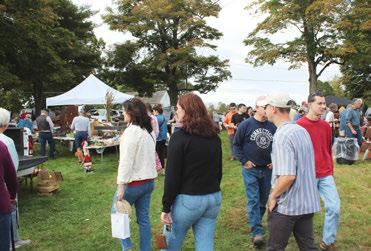
between
ees all throughout the morning, everyone looking for that “something” to take home with them.
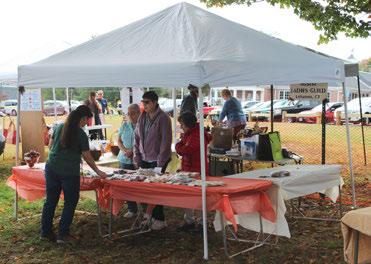
Have a sweet tooth? The Ladies Guild of Lebanon, Conn., had a booth right by the entrance where they were selling various baked goodies.
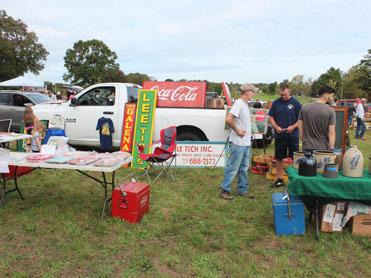
time dealers
a
for the day.

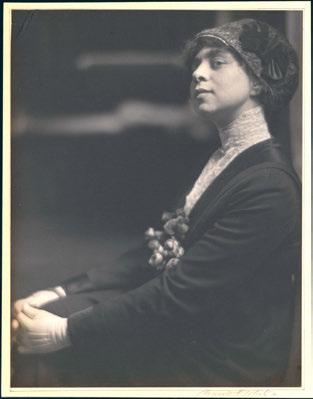
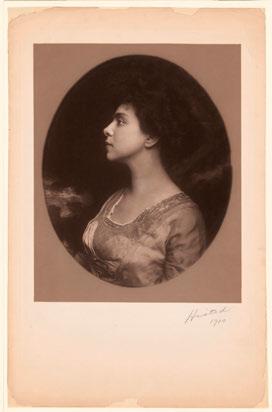
Harvard Class Album, photographs by George Kendall Warren (1834-1884), 1870, Cambridge, Mass. The Morgan Library & Museum, purchased on the Horace W. Goldsmith Fund for Americana, 2021; ARC 3270.
B y J ames D. B alestrieri
NEW YORK CITY — I had occasion to work on a major exhibition of Edward Curtis’s photographs from his life’s work, The North American Indian years ago and one of the things I learned quite quickly was that if Curtis hadn’t made it past Belle da Costa Greene, J.P. Morgan’s librar ian, archivist and first director of the Morgan Library, the financier might never have heard of Curtis, much less funded the Seattle “Shadow-Catch er’s” obsessive dream to photograph and describe all of the major Indig enous peoples of the United States and Canada in what would ultimately become an invaluable series of beautiful volumes of images and ethnographic text.
Renowned medievalist, fierce collector, innovative librarian and scholar, staunch advocate of modernism, activist, socialite, celebrated beauty: “Belle da Costa Greene: A Librarian’s Legacy,” the new exhibition on view at The Morgan Library and Museum, reveals Morgan’s cultural gatekeeper as a fascinating and utterly unique figure, a manyfaceted woman who insisted on forging and reforging her own iden tity — a high-wire act at a time when “one drop of blood,” as the Supreme Court’s Plessy versus Ferguson decision decreed, determined race, when Jim Crow was in full force, when “separate but equal” was a dominant fiction of the day.
A look at the objects on the pages of this essay shows the wide range, beauty and rari ty of the objects she would acquire on behalf of the Morgan Library.
Greene’s own story, however, continues to intrigue. She was born Belle Marion Greener in 1879 into a prominent Black family in Washington, DC. Her father was the first Black Harvard graduate. When her parents separated in 1894, her mother changed the family name to Greene. Belle and her siblings were light-skinned and the family made a decision to pass as white. By 1903, Belle and her brother had added “da Costa” as a middle name and had begun to tell people their ancestry was Portuguese, thus accounting for their darker complexions.
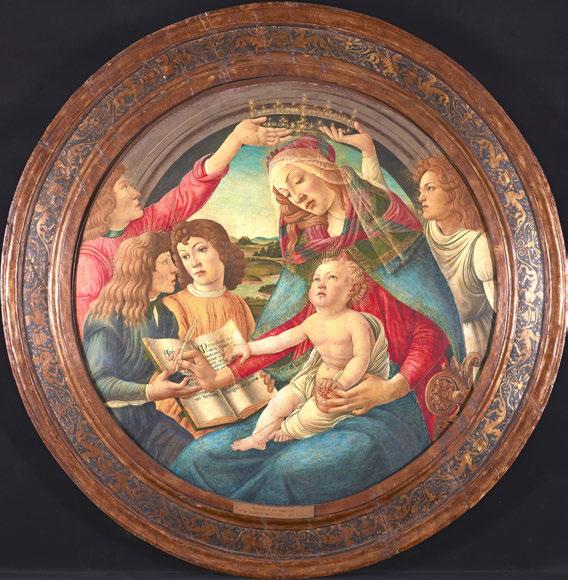
Books, especially rare books and manuscripts, coursed through Greene’s blood from an early age, and she showed an aptitude for languages, as described in the exhibition’s catalog: Her father collected “rare books and documents related to African American history,” had “knowledge of classical European languages” and had worked in the University of South Caroli-
“Madonna of the Magnificat” after Sandro Botticelli (1444/45-1510), Florence, Italy, circa 1490, oil on panel. The Morgan Library & Museum, purchased by Pierpont Morgan, 1911; AZ014.
na’s library. By the age of 13, Greene recalled, she had wanted to become a librarian. Despite all the roles she played, “librarian” was what she called herself whenever she was asked.
As for education, Greene studied at the Northfield Seminary for Young Ladies, Amherst College’s fiveweek Summer School of Library Economy, worked at the Teacher’s College in New York, then, probably, at the New York Public Library before finishing her training in the Princeton University Library, a place that would have rejected her out of hand had they learned of the truth of her racial background. At these various institutions, Greene improved her French and Latin, absorbed the latest in library science and began to explore “paleography, textual criticism, historical bibliography,” and other languages. At Princeton, she met Junius Spencer Morgan, an associate librarian, the nephew of J.P. Morgan and son of Jack Morgan, who would assume responsibility for the library after J.P.’s passing. Junius introduced Greene to his uncle and Greene was on her way. It would not be long before Morgan’s rather haphazard assortment of exceptional objects would become her dream, a dream of transforming the collection into a library, one that would ultimately be “pre-eminent.” It would not be long before Morgan would rarely purchase a book, manuscript, or work of art without Greene’s approval, while Greene would often acquire objects without consulting with J.P. or, later, Jack.
Some of Greene’s finest acquisitions are the gorgeous Eleventh Century Gospels of Judith of Flanders , the unmatched 1485 Caxton printing of Mallory’s Le morte d’Arthur and the fantastic 1490 Botticelli roundel, “Madonna of the Magnificat,”

with its fish-eye illusion in which the figures seem to project from the frame, defying any distance between subject and viewer. In others, such as the autograph manuscripts for Balzac’s Eugénie Grandet and Dickens’s Our Mutual Friend , you see Greene’s preference, mirroring ours, for the early drafts of masterpieces, the ones that expose the thought processes of the authors, showing their corrections and hesitations, their scrawls, scribbles, doodles and crossings-out. In this, she was ahead of her time, when fair copies and first editions would have been seen as more important. Greene’s own collection was eclectic and, it would seem, highly personal. For example, despite her medievalist bent, as evidenced in the fine Albrecht Dürer engraving “Melencolia I,” she became
“Melencolia I” by Albrecht Dürer (1471-1528), 1514, engraving. The Morgan Library & Museum, gift of the Estate of Belle da Costa Greene, 1950; 1950.33.

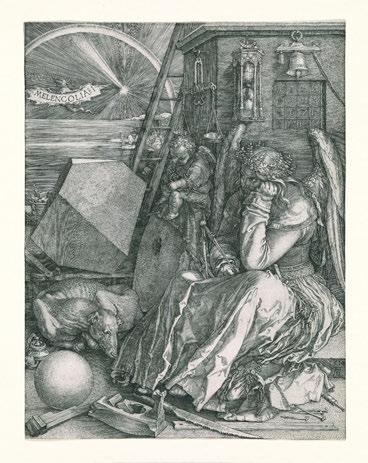



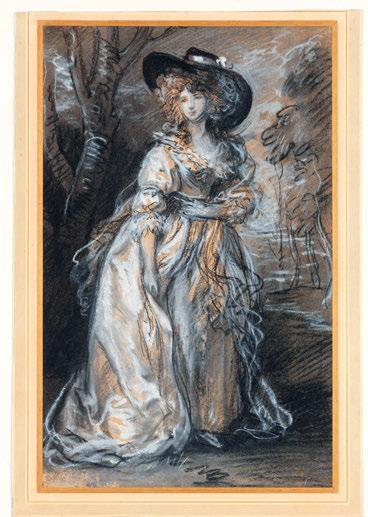
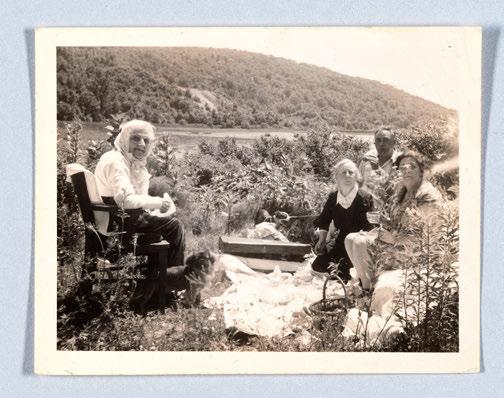
“Genevieve Van Vliet Greene, Belle da Costa Greene’s mother, on an outing in the Hudson River Valley near Bear Mountain (N.Y.)” by Gertrude Tuxen, circa 1939, gelatin silver print. The Morgan Library & Museum; ARC 3297.1.
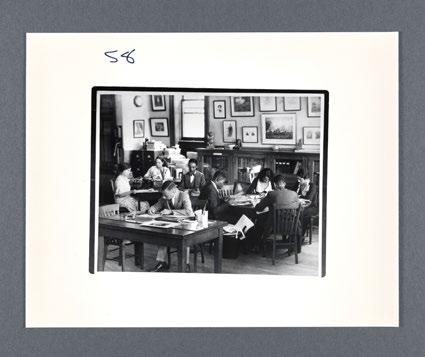
View of researchers using the Schomburg Collection when it was the 135th Street Branch Library Division of Negro Literature, History and Prints, with Catherine A. Latimer, reference librarian of the collection, in left background, 1938, reproduction of photographic print. The New York Public Library, Schomburg Center for Research in Black Culture, Photographs and Prints Division.
close friends with Alfred Stieglitz and the circle of modernists who frequented his gallery, 291. As a result, modernist Abraham Walkowitz gave her two drawings, one of which, titled “Human Abstract” and done circa 1913, the year of the famous Armory Show, may well be what the show’s catalog describes as an “abstract depiction of [dancer Isadora Duncan’s] movement.” Duncan’s modern dance, fashioned after classical ideas, attracted Greene greatly, as did the entire modernist project (apart from Gertrude Stein, whom she seems to have disliked). In “Human Abstract,” the body is a swirl of parts in motion, coming apart or perhaps on verge of coming together in a new way. One can superimpose Greene’s ever-shifting identity onto the work; one wonders if this ‘literal metaphor’ might not be what attracted her to it or, perhaps, what made him offer it to her as a gift. Greene had a modern take on celebrity. When photographers and artists lined up to make portraits of her, she carefully orchestrated her image. She was stylish and radiated confidence. As Deborah Willis writes in her catalogue essay, “Her photographs did much more than record her presence in Morgan’s life; they claimed her notability, her sexuality and blurred the lines of her racial passing. Greene’s portraits typified her ideals, and she knew how to use portraiture to establish an identity outside of the respectability lens of the New Negro woman.” Julia S. Charles-Linen’s essay deepens our understanding of Greene’s success at “passing” in her own essay, stating, “Greene disrupts the notion of legal race as always
legible on the body, by highlighting the ways in which Greene’s strategic racial performances, along with her then-burgeoning reputation in acquiring rare artifacts, made room for her ascension into the often covert world of art and polite society in New York….” In her 1910 portrait — a profile, as are many of the extant images of her, showing, perhaps, only one side, one facet of her identity while leaving the other in mystery — Greene is classical, Grecian, almost numismatic in her beautiful regality and suggestion of great value and
worth. Just a year later, the 1911 portrait shows her whitegloved hands holding her knee while white lace elongates her throat and her furred and feathered hat, a Greene trademark, is pushed back off her forehead. Her cocked head, half-smile and eye on some distant prize hints at a plan, a secret plan, a plan that excludes us, at least for now. The mystery Greene cultivated captivated. Not only New York but, as Charles-Linen writes, the “often covert world of art…” In a way, as the two photographs in this essay suggest, Greene’s ever-shift-
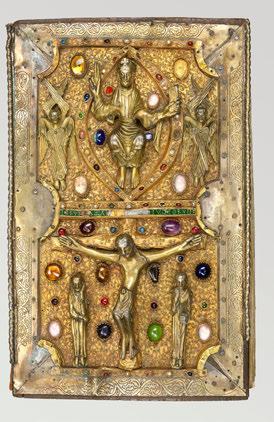
Gospels of Judith of Flanders , in Latin, England, 1051-64. The Morgan Library & Museum, purchased by J. P. Morgan, Jr, 1926; MS. M.708.
ing identity — her bold bargaining and bidding among dealers and collectors, her meticulous cataloguing, her unerring eye for quality, whether in in dressing herself, choosing her friends, or in assessing cultural objects — made her that rarest of objects, an object that refuses to be objectified, a living “Grecian urn” that everyone will reach out for but no one will ever quite reach. Even in her private life, she remained elusive, never marrying, though she had a long and largely long-distance relationship with Renaissance art scholar

Eugénie Grandet by Honoré de Balzac (1799-1850), 1833, autograph manuscript and annotated printer’s proofs. The Morgan Library & Museum, purchased, 1925; MA 1036.
Bernard Berenson, the most important art critic, advisor and tastemaker of the era. Born Jewish, Berenson converted to Episcopalianism; his “passing” perhaps added to his sympathy for and with Greene, who revealed her origins to him. Overt racism eventually made its way into Greene’s life in devastating fashion when her nephew Bobbie — whom she had made her ward, taken in and educated — committed suicide when his fiancée learned the truth of his ancestry and rejected him. It’s impossible to know the exact why of it, but before her death in 1950, Greene burned most of her personal papers, taking her many secrets to the grave and preserving something of the mystery that made her who she was during her life.
In the end, “Belle da Costa Greene: A Librarian’s Legacy” goes well beyond the fact of the Morgan Library, her key role in its development and its ongoing place among the world’s great cultural institutions. Greene herself left a legacy — she herself is that legacy — one that goes beyond her many accomplishments in the arts and beyond her successful “passing.” Her legacy is her daring at a time when it was perilous to dare, when her daring, had it been exposed, would have been seen as shameful and would have resulted in her dismissal — if not jail or death — a time when the real shame was the nation’s shame.
“Belle da Costa Greene: A Librarian’s Legacy” is on view at the Morgan Library and Museum from October 25 through May 4.
The Morgan Library & Museum is at 225 Madison Avenue. For information, 212-685-0008 or www.themorgan.org.
NEW YORK CITY — ‘Edges of Ailey’ at the Whitney Museum of American Art, is the first large-scale museum exhibition to celebrate the life, dances, influences, adjacencies and enduring legacy of visionary artist and choreographer Alvin Ailey (19311989). This dynamic showcase brings together visual art, live performance, music, a range of archival materials and a multi-screen video installation drawn from recordings of Alvin Ailey American Dance Theater (AAADT) repertory to explore the full range of Ailey’s personal and creative life. Presented in three parts, “Edges of Ailey” consists of an immersive exhibition in the museum’s 18,000 square-foot fifth-floor galleries, an ambitious suite of performances in the museum’s third-floor Theater and an accompanying scholarly catalog.
The exhibition centers on the man himself, capturing the full range of Ailey’s passions, curiosities and creativity revealed in his archives, across his dances and within a continuum of other artists spanning nearly two centuries. These elements form a historical account, provide a constellatory survey and unfold as a tribute to the legendary artist’s life, career and far-reaching impact on the histories of dance, Black creativity and American culture.
“Edges of Ailey” affirms the artist’s place as one of the most culturally and historically significant artistic figures in the United States and the world.
“Following six years of dreaming, planning and researching, the extravaganza that is ‘Edges of Ailey’ finally enters the world,” said Adrienne Edwards, Engell Speyer Family senior curator and associate director of curatorial programs. “Throughout this process, we have had the gift of Mr Ailey’s guidance, available to us in his notebooks, interviews, dances and by the way he did things, to which we have kept very close and which has shaped every aspect of this show. Until now, there have been many exhibitions in art museums about dance but none about Ailey, a true icon and unquestionably deserving subject. Along the way, every time I told someone that I was working on this project, they would share their own Ailey experience. So many of us have a story about Ailey, the dance company. Such is the extent of his importance and reach. Now audiences will have the chance to know his story. It is no small task to hold someone’s legacy of this cultural magnitude in your hands. We have made something that aims to have the same imagination, sparkle, generosity, rigor and daring as did he.”
“Edges of Ailey” was developed through extensive archival research. From the sweeping holdings of performance
footage, recorded interviews, notebooks, letters, choreographic notes and drawings, to other ephemera gathered from nearly 10 sources, the archives forge a vital throughline in the gallery. Visitors also encounter intimate displays of never-before-seen selections from Ailey’s personal archive, providing a foundation for understanding everything from his daily routine and artistic thinking to the demands of touring and his grappling with being gay. Ailey’s short stories and poems are shown publicly and reproduced in the catalogue for the first time. Selections from the Alvin Ailey Archival Papers — courtesy of the Allan Gray Family Foundation and held at the Black Archives of Mid America in Kansas City, Mo., — and the Alvin Ailey Dance Foundation Archives Collection held at the Library of Congress are of singular importance, specially digitized and exhibited for this show’s occasion. A dynamic montage of Ailey’s life and dances will play on loop across an 18-channel video installation, created by filmmakers Josh Begley and Kya Lou, with Edwards. This film is composed of newly digitized performance documentation, dances made for the camera, animated archival images, televised broadcasts and contextual footage of cultural, social, political and social events of the time.
The ways Ailey appears in the show through archives form a surround, circling the galleries, which are presented in red: walls, an archipelago of elevated platforms, customized systems of display and curtains. This staging of deep crimson reflects Ailey’s formative “blood memories” as well as the color of theater curtains and seating of the proscenium theaters in which Ailey’s dances are typically performed and the pews and carpets of many Southern Black churches.
Ailey’s presence, through the video surround and his encased personal effects, envelops and thus contextualizes the selection of artworks by over 80 artists that speak to the parallel, pertinent and often inseparable concerns of Black creativity in the United States, spanning before the Civil War up to the present.
Ailey remarked: “I wanted to paint. I made watercolors. I wanted to sculpt. I wrote poetry. I wanted to write the great American novel,” and described his dances as “movements full of images.” Following keen interest in the visual arts, the artworks on view include painting, sculpture, prints, drawings, video, collage and photography made before, during and after Ailey’s lifetime, with many directly connected to the choreographer while others amplify the most persistent subjects of his life and dances.
The exhibition is arranged thematically into sections that span an expanded Black
southern imaginary that enfolds histories of the American South with those of the Caribbean, Brazil and West Africa; the enduring practices of Black spirituality; the profound conditions and effects of Black migration; the resilience for and necessity of an intersectional Black liberation; the prominence of Black women in Ailey’s life; and the robust histories and experiments of Black music; along with the myriad representations of Blackness in dance and meditations on dance after Ailey. Featured artists among Ailey include JeanMichel Basquiat, Romare Bearden, Kevin Beasley, Elizabeth Catlett, Thornton Dial, Ellen Gallagher, Rashid Johnson, Jacob Lawrence, Ralph Lemon, Glenn Ligon, James Little, Loïs Mailou Jones, Archibald Motley Jr, Mary Lovelace O’Neal, Faith Ringgold, Lorna Simpson, Alma Thomas, Kara Walker, Carrie Mae Weems and Kandis Williams. Also, a recent acquisition of Eldren Bailey and new works by Karon Davis, Jennifer Packer, Mickalene Thomas and Lynette Yiadom-Boakye will be presented for the first time in honor of this landmark exhibition. Together, they form an assembly of voices and visions that share Ailey’s interests and motifs — following his own desire to create a repertory of various choreographers — and when taken together reveal a richer understanding of their interrelation. Throughout the presentation of “Edges of Ailey,” a robust live performance program in the museum’s third-floor theater will accompany the ingallery component. The performance series is inspired, motivated and organized to reflect Ailey’s commitment to building a platform for Black modern dancers and choreographers. The performances feature all facets of the AILEY organization in residency at the Whitney for one week each month, for a total of five weeks. This gives visitors the opportunity to experience the full scope of Ailey’s world and legacy, including performances of classic and contemporary works by the two repertory companies — Alvin Ailey American Dance Theater and Ailey II — as well as showcases by students from The Ailey School, workshops and education programs from Ailey Arts In Education and classes from Ailey Extension. During the weeks AILEY is not in residence at the museum, a series of dance commissions by leading choreographers and their collaborators is presented, including Trajal Harrell, Bill T. Jones, Ralph Lemon with interdisciplinary artist Kevin Beasley, Sarah Michelson, Okwui Okpokwasili with Peter Born, Will Rawls, Matthew Rushing, Yusha-Marie Sorzano and Jawole Willa Jo Zollar. The accompanying catalog is the first publication devoted to Alvin Ailey in over 20 years.
Edited by Adrienne Edwards, the 400-page catalog expands scholarship on Ailey’s life and choreography, featuring essays by Edwards, Horace D. Ballard, Harmony Bench and Kate Elswit, Aimee Meredith Cox, Thomas F. DeFrantz, Malik Gaines, Jasmine Johnson, Joshua Lubin-Levy, Uri McMillan, Ariel Osterweis and J Wortham and conversations with Kyle Abraham, Claire Bishop, Masazumi Chaya, Aimee Meredith Cox, Brenda Dixon-Gottschild, Jennifer Homans, Judith Jamison, Sylvia Waters, Jamila Wignot and Jawole Willa Jo Zollar, with an extensive chronology by CJ Salapare. The book also includes an accounting of the entirety of Ailey’s choreography and reproduces selections from his personal notebooks as well as examples of his creative writing.
“‘Edges of Ailey’ is one of — if not the — most ambitious and complex exhibitions undertaken in the Whitney’s history,” said Scott Rothkopf, the Alice Pratt Brown Director of the Whitney. “Now is Ailey’s time and our time as an art museum to recognize his immense creative force not simply as one of the Twentieth Century’s greatest American choreographers, nor as its greatest Black choreographer, but as one of the greatest artists working in any medium anywhere in the world. This exhibition situates Ailey — and those he drew on and inspired — smack in the middle of the avant-garde, right where they belong. In so doing, it pressures and even redefines the trajectory of art history by
making it contend with stories and forms it had once ignored. Ailey, quite simply, forged a capacious new mode for ‘expressing the Black experience,’ as he put it and to share this legacy with our visitors is an honor.”
The Whitney Museum of American Art is at 99 Gansevoort Street. For information www.whitney.org or 212570-3600.






he Baltimore Museum of Art (BMA) announced the appointment of Cecilia Wichmann as curator and department head of contemporary art. Wichmann joined the BMA in 2017 as an assistant curator of contemporary art and was promoted to associate curator in 2019. She has organized or coorganized many important exhibitions, including most recently the “Joyce J. Scott: Walk a Mile in My Dreams” retrospective, for which she also served as co-editor of the eponymous catalog distributed by Yale University Press.

Marcy Carsey, chair of the Hammer Museum at UCLA’s board of directors, announced the appointment of Zoë Ryan as the next director of the museum. This appointment follows the 2023 announcement of longtime director Ann Philbin’s retirement, following 25 years of leading the museum. Philbin will step down in November; Ryan will take over on January 1, 2025. Ryan comes to the Hammer Museum from the Institute of Contemporary Art (ICA) at the University of Pennsylvania, where she has been the Daniel W. Dietrich, II director since 2020.
CKANSAS CITY, MO. — The Nelson-Atkins Museum of Art on October 1 launched a global open call to find an outstanding architect-led team for a world-class expansion that will transform the museum with a dynamic, open and inviting design. The goal of the expansion is to attract new audiences and design a center that speaks to community, creating a museum for all.
The Nelson-Atkins Museum of Art cares for a superlative collection of more than 42,000 art objects. It is best known for its extensive Asian art, European and American paintings, photography, modern sculpture, Native American, African and Egyptian galleries. It is surrounded by a 22-acre sculpture park.
Offering free admission, the museum is nationally and internationally acclaimed and serves a broad region within a 300-mile radius.
The original Beaux Arts building is a traditional museum in neoclassical revival style, while a second, the much-admired and innovative Bloch Building, was a luminous addition by US architect Steven Holl in 2007 following an invited design competition.
Now the museum is embarking on a third evolution in response to the increasing needs of its community, growing and increasingly diverse attendance and desire to serve future generations. The capital campaign to fund this initiative will be

the single biggest investment in the arts in Kansas City in recent years and will contribute to the city’s future dynamism and vitality.
The project will integrate the campus, the Donald J. Hall Sculpture Park and the two existing buildings into a cohesive new experience.
The design competition is being organized by architect search specialists Malcolm Reading Consultants. The competition is open to all local, regional, national and international firms.
Full details of the competition and how to enter are available on the dedicated website at www.competitions.malcolmreading.com/nelsonatkins
The competition program specifies a new addition (or ensemble of additions) of approximately 61,000 square feet and a part-renovation of the original Nelson-Atkins building, as well as activation and amplification of the outdoor campus — all
framed within a thoughtful sustainability strategy.
Highlights of the new addition(s) will include a primary entrance and welcome foyer, a comprehensive photography center, new featured exhibition galleries, learning and engagement spaces for hands-on art activities, a black box-style theater for digital art and immersive programming and a restaurant for indoor/outdoor dining and events.
The estimated construction budget is $160-170 million. The project will be funded entirely by private donations. The museum receives no public tax dollars for operations or capital projects. The comprehensive capital campaign will start in 2025.
The competition will feature a public exhibition of the finalists’ concept designs in spring 2025. The NelsonAtkins will invite the community to provide feedback at that time. For information, 816-751-1321 or www.nelson-atkins.org.

hristie’s announced it has been granted a commercial license for the Kingdom of Saudi Arabia, and has appointed Nour Kelani as managing director for the kingdom. Based in Riyadh, Nour will lead Christie’s client services for the fine art and luxury secondary business to build on long-established clientele in the kingdom and engage with the next generation of collectors. She will work alongside Christie’s experts across the Middle East and globally, while prioritizing representation of art histories and cultures of the region. Nour previously oversaw operations at Ayyam Gallery in Jeddah, Saudi Arabia, representing contemporary artists from across the Middle East.

The Center for Curatorial Studies and the Human Rights Project at Bard College named architect and architectural historian Valentina Rozas-Krause as the 2024-25 Keith Haring chair in art and activism, marking a decade since the fellowship’s conception. Engaging with topics ranging from colonialism to memorialization, Rozas-Krause is a professor of design and architecture at Universidad Adolfo Ibáñez in Chile whose research focuses on how the built environment intersects with cultural practices across the Americas and Europe. Established as an annual award in 2014, the Keith Haring chair offers prominent scholars, activists and artists the opportunity to teach and conduct research on Bard’s campus. In this role, Rozas-Krause will focus on developing her forthcoming publication, Memorials and the Cult of Apology, which examines the role memorials play in processes of reparation following political conflict.
BROOKLYN, N.Y. — The Brooklyn Museum marks the official start of its 200th anniversary celebration with exhibitions and programming that honor the institution’s trailblazing history and chart a bold path for the future. Launching with exhibitions, a major educational initiative, refreshed dining and a full weekend of events, the bicentennial celebration will continue well into 2025.
The anniversary celebration begins with two special exhibitions: “Toward Joy: New Frameworks for American Art,” a transformative reinstallation of the American art galleries that will reorient the ways the museum exhibits — and audiences rediscover — this collection, and “The Brooklyn Artists Exhibition,” a major group exhibition of more than 200 artists reflecting the range of creativity in the borough. In November, the museum will open “Solid Gold,” a sweeping exhibition that will explore the majesty of gold through 6,000 years of artwork, fashion and design. In 2025, the ongoing bicentennial lineup includes “Breaking the Mold: Brooklyn Museum at 200.” Featuring three chapters that boast both longtime favorites and brand-new gifts, this exhibition explores the collection’s rich history and future evolution.
An additional highlight is the debut of Museum on Wheels, a mobile museum housed in an Airstream trailer, designed to bring arts and cultural programming to audiences of all ages across Brooklyn. Wrapped with a bright and bold design by local artist Christopher Myers, Museum on Wheels will make stops this fall in Sunset Park and Bay Ridge, and officially launch in spring 2025.
The museum’s history can be traced back to 1824, when a group of
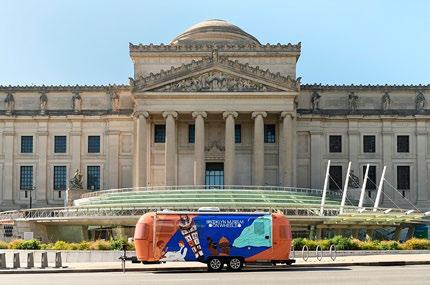
civic-minded Brooklynites formally incorporated the borough’s first public circulating library, the Brooklyn Apprentices’ Library Association. The goal was to inspire, educate and build connections among Brooklyn’s growing immigrant populations. That library ultimately evolved into the Brooklyn Museum we know today, which has always stood as a champion for creative innovation, inclusion, diversity and social good. As the museum celebrates this enduring commitment, it doubles down on the founders’ vision of a cultural institution that would serve the city and nation.
With more than 40,000 objects in its encyclopedic collection, spanning 6,000 years of human history, the museum continues to broaden the narratives of art, uplift a multitude of voices and center creative expression within important dialogues of the day. Over the years, it has achieved many pioneering mile-
stones: hosting the first US exhibitions dedicated to African and international modern art in the 1920s, establishing one of the first formal education departments and conservation labs in the 1930s, contributing to the Monuments Men’s efforts during World War II, opening one of the first community galleries in 1968, launching the innovative Center for Feminist Art in 2007 and creating its beloved First Saturdays series, which has set the standard for free, community-centered museum programming for more than 25 years. Today, the museum continues to be a global cultural destination, revealing the profound ways in which art can be a force for growth, healing and joy.
The full anniversary year program can be found on the museum’s website at brooklynmuseum.org/ about/200.
The Brooklyn Museum is at 200 Eastern Parkway.

WOODSTOCK VALLEY, CONN. — Norman Heckler Jr presented a select group of 31 choice examples of glass bottles in his firm’s online sale that ran from September 19-25. Among the celebrated classics and new discoveries were early American glass, fine tableware, historical flasks and bottles. The top lot in the sale was a “Lacour’s Bitters” figural bottle, “Sarsapariphere,” 1860-70, which realized $28,080. It presented a modified lighthouse form, cylindrical with sunken side panels. Its color was bright grass
green with a hint of lime, and it featured an applied triple collared mouth and smooth base. At 9 inches tall, it was, per catalog note, “clean and bright, handsome color, excellent condition.” A rare figural bottle thought to have been manufactured in San Francisco, Calif., “It went to a West Coast collector,” said Heckler. “This type of bottle is favored more by the West Coast collectors. It’s a so-called ‘Western’ bottle. All the ones that we’ve sold tend to go out to the West Coast.”
More highlights from this sale will be featured in a follow-on review.
FLUSHING, QUEENS, N.Y. — The Bowne House, which was built circa 1661 and is the oldest extent structure in Queens and one of the oldest in New York City, is the recipient of funding from the New York State Council on the Arts/Greater Hudson Heritage Network (NYSCA/GHHN) for the professional assessment of 18 early American samplers in the museum’s collection. The Textile Conservation Workshop, Inc., of South Salem, N.Y., performed the detailed, on-site assessment which included an evaluation of general textile storage conditions at Bowne House.
Bowne House was one of 93 organizations from 38 counties in New York State to share more than $65,000 in textile assessment funding. Commenting on the recent award to Bowne House, Rosemary S. Vietor, vice-president of the museum’s board of trustees said, “Bowne House is grateful for NYSCA/GHHN funding enabling a part of our collection of rare American samplers to be assessed professionally for future conservation. The museum staff professionally caretakes an extraordinary collection of textiles, furniture, fine and decorative arts, and English and American ceramics owned and used by members of the Bowne family for more than 300 years. NYSCA/GHHN funding is critical to the maintenance of this large and important collection.”
Every Thurs goldengavel.com
Golden Gavel 68
Every Tues Coventry, CT Weston’s.................64
Thru 22, Oct centralmassauctions.com
Thru 23, Oct centralmassauctions.com
Central Mass Auctions 62
Central Mass Auctions 60
Thru 24, Oct auctionninja.com Leo Legare 68 5-15, Oct auctionninja.com
Edward Beattie 66
10-29, Oct..........everard.com..........Everard Auctions&Appraisals 58
12, Oct thoscornellauctions.com Thos. Cornell Galleries 2 14-16, Oct michaans.com Michaan’s 65
16, Oct kodner.com Kodner 68
16, Oct eldreds.com Eldred’s 68
16-25, Oct blackartauction.com
17, Oct bodnarsauction.com
Black Art Auction 56
Bodnar’s Auction 68
17, Oct girardbid.com Girard Auction 48
17, Oct sloansandkenyon.com Sloan & Kenyon 63
17, Oct swanngalleries.com Swann 49
17-19, Oct morphyauctions.com..................Morphy Auctions 53
18, Oct douglasauctioneers.com Douglas Auctioneers 6C
18, Oct Jewett City, CT Leone’s Auction Gallery 2
18, Oct Lebanon, PA Martin Auctioneers, Inc 61
18, Oct michaans.com Michaan’s 65
18, Oct South Glastonbury, CT CT River Book Auction 58
18-19, Oct clars.com.......................................Clars 47
19, Oct andrewsandandrews.com Andrews & Andrews 56
19, Oct bakkerproject.com....................Bakker Auctions 66
19, Oct blackwoodauction.com Blackwood/March 64
19, Oct New Windsor, NY Mid Hudson 52 19, Oct rolandauctions.com....................Roland Auctions 2
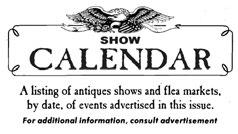
11-14, Oct Woodbury, CT 33 18-19, Oct Greenwich, CT 33 19, Oct Westmoreland, NH 7
19, Oct rolandauctions.com....................Roland Auctions 7 19, Oct rolandauctions.com....................Roland Auctions 65 19-20, Oct kaminskiauctions.com Kaminski 54-55 20, Oct blanchardsauctionservice.com..............Blanchard’s 64 20, Oct collectivehudson.com Collective Hudson 66 20, Oct crnauctions.com CRN Auctions 67 20, Oct hartzellsauction.com Hartzell’s Auction 64 20, Oct nyshowplace.com Showplace 8C 21, Oct.....hudsonvalleyauctioneers.com....Hudson Valley Auctioneers 63 22, Oct auctionninja.com SJD Auctions 68 22, Oct coyles.com Coyle’s 57 22, Oct woodburyauctions.com Schwenke Auctioneers 2 22-23, Oct stenellaauctions.com Stenella Auction 66 23, Oct doyle.com Doyle 5C 23, Oct hindmanauctions.com...............Freeman’s Hindman 52 23, Oct southbayauctions.com South Bay Auctions 60 23, Oct thebenefitshop.org Benefit Shop 67 23-25, Oct nyeandcompany.com Nye and Co. 48 24, Oct doyle.com Doyle 5C 24, Oct hindmanauctions.com...............Freeman’s Hindman 52 24, Oct stairgalleries.com Stair Galleries 59 25, Oct hindmanauctions.com...............Freeman’s Hindman 52 27, Oct tremontauctions.com Tremont Auctions 3C 27, Oct tremontauctions.com Tremont Auctions 66 28, Oct liveauctioneers.com MCS Estate Buyers 66 28-29, Oct materialculture.com Material Culture 2C 30, Oct.............everard.com.............Everard Auctions&Appraisals ..58 30, Oct litchfiledcountyauctions.com Litchfield County Auctions 2 30, Oct pookandpook.com Pook & Pook 4C 31, Oct..............everard.com..............Everard Auctions&Appraisals 58 31, Oct liveauctioneers.com MCS Estate Buyers 66 31, Oct swanngalleries.com Swann 49 1, Nov Jewett City, CT Leone’s Auction Gallery 2 12, Nov materialculture.com Material Culture 2C 12, Nov swanngalleries.com Swann 49 13, Nov litchfieldcountyauctions.com Litchfield County Auctions 2 13, Nov newenglandauctions.com New England Auctions 50 13-14, Nov aandoauctions.com Ahlers & Ogletree 7C 14, Nov newenglandauctions.com New England Auctions 51 17, Nov butterscotchauction.com Butterscotch Auction........2 18, Nov materialculture.com Material Culture 2C 20, Nov materialculture.com Material Culture 2C 8, Dec tremontauctions.com Tremont Auctions 66 2025, Feb litchfieldcountyauctions.com Litchfield County Auctions 2
19-20, Oct Higganum, CT 9 20, Oct Milford, NH 3 2-3, Nov Chantilly, VA 25 3, Nov Milford, NH 3 7-10, Nov Atlanta, GA 5 8-10, Nov Boston 17 16, Nov Westmoreland, NH 7 17, Nov Milford, NH 3 30,Nov-1,Dec........Columbus, OH 5 2025 9-12, Jan Atlanta, GA 9 25-26, Jan Columbus, OH 9 13, May..................Brimfield, MA 2 8, July Brimfield, MA 2 2, Sept Brimfield, MA 2
9 12-13, Oct Greenwich, CT 13 12-14, Oct Walpole, NH 19 13, Oct Wayne, NJ 17
Courtesy legaCy Com
Jan Brooks, smart, funny, talented and complex, died of lung cancer on September 12. Her multitude of friends will savor her memory and miss her generous spirit, sharp wit, big laugh, curiosity and energy.
Born in Quanah, Texas, Jan grew up in Denton, Texas, where her family ran Brooks Dairy. Beginning in 1968, with an interest in music and then metalwork, Brooks attended several colleges and universities. Studying blacksmithing, Brooks earned a BA in 1972 and an MFA in 1974.
From 1974 to 1977, Brooks taught metalsmithing at SIU Carbondale before moving to North Carolina, where she worked as an assistant professor of Creative Arts and gallery
director at UNC Charlotte.
Throughout the 1970s and ‘80s, Jan exhibited her work in more than 200 shows, including the 1982 exhibition “Towards a New Iron Age” at the Victoria and Albert Museum in London. Her work is in both public and private collections. Brooks focused on commissions and public art projects and became involved in the nonprofit sector. She served on many boards, panels, and juries. She was vice president of the American Craft Council in the late 1980s and received an NEA grant in 1990.
In the early 1990s, she did graduate work at Duke University, researching the post-World War III development of the studio craft movement in American universities.
In 1995, Brooks moved to
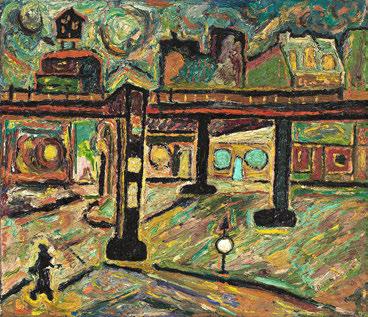
NEW YORK CITY — The top lot in Swann Auction Galleries’ October 3 auction of African American art was an untitled (Greenwich Village Street, New York) work by Beauford Delaney (1901-1979), which realized $629,000, including buyer’s premium, against a $250/350,000 presale estimate. The richly impastoed depiction of the Village is a scarce and significant example of Delaney’s New York period, according to the catalog notes, which states, “His depiction of a street corner and the El train line is particularly infused color through a densely layered impasto.”
The painting was oil on linen canvas, dated circa 1945-46 and measured 18 by 21½ inches. It was indistinctly signed and dated in oil, lower right recto,
Santa Fe, N.M., and married longtime friend Lane Coulter in 2000. The couple ran Coulter Brooks Art & Antiques, specializing in Southwestern arts. She also worked in organized philanthropy and the nonprofit sector, serving as executive director of Northern NM Grantmakers for six years. She had far-ranging interests and was passionate and active about local and national politics and public policy.
She was a dedicated guitar player with a soulful, disarming voice. She loved music, food, art, and animals and was partial to
Scottish Terriers. She is survived by her husband, Lane Coulter; his daughter, Amelia; grandson, Felix; her brother, Rob Brooks; his wife, Mary; Rob’s children, Dean, Joanna and Matt; and their families.
A memorial will be held on October 15 at 2 PM at the Meem Auditorium on Museum Hill. Address cards to Lane Coulter, The Montecito, 450 Rodeo Road, Santa Fe, N.M., 87505. In lieu of flowers, donations can be made to the New Mexico School for the Arts, New Energy Economy, or Street Homeless Animal Project.
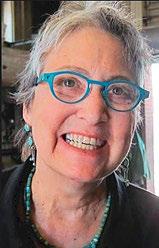
(Pittsfield, Mass.)
(Boston)
(Freehold, N.Y.)
(Peterborough, N.H.)
(Hudson, N.Y.)
(Whipple, Ohio) Midcentury Glass, Ohio Paintings & Textiles
and inscribed “181 Greene St” (twice)” and “NY” on the stretcher bars, verso. Provenance indicated that the painting had been acquired directly from the artist to Professor Kenneth Lash (1918-1985) and descended in his family. Lash was a poet, essayist, university professor and chair of art and humanities departments. Before his service in the US Navy, Lash lived in New York in the early 1940s, where he frequented many jazz clubs and after-hours sessions at trumpeter Frankie Newton’s Greenwich Village loft, blocks away from Beauford Delaney’s studio. Lash was part of a support network of friends and patrons who assisted Delaney both before and after his trip to Paris. Watch for a later sale review in an upcoming issue.
The teaser in the October 11, 2024, issue for the millinery trade sign that was sold at Hudson Valley Auctioneers on September 23 misstated the sold price. The trade sign, double-sided, Nineteenth Century, star-shaped with painted wood gilt letters, “Millinery And Fancy Goods,” 34 by 34 inches, sold for $40,000, including buyer’s premium, not $42,000.
A teaser in the October 4, 2024, issue describing an oil on canvas painting by Julie Hart Beers (1835-1913), “River Landscape With Cows,” that was the top lot in Carlsen Gallery’s September 22 auction, misstated the painting’s measurements. They were 6½ by 20 inches not 66½ by 20 inches. We regret these errors.
GOFFSTOWN, N.H. — A US Braided Hair half cent, 1843, not seen by the numismatic community for the past 90 years, took $110,000 at Jones & Horan’s online auction of horology, jewelry and coins, which featured a live close on October 10. The coin came fresh from the estate of noted early American copper collector William Foster Lardner (1873-1934). Catalog notes described it as “an absolutely mind-blowing coin, with a shockingly bold and vibrant red color and luster that in its intensity we believe may be wholly unique among the entire surviving population of US half cents.” According to a PCGS population report, a total of only five proof half cents across all dates have been rated as red cameo; accordingly, that makes this example numerically the single finest graded red cameo of its date and it is numerically tied with a single 1842 example as the finest graded red cameos of the entire half cent series. A later review of this sale will discuss additional highlights.
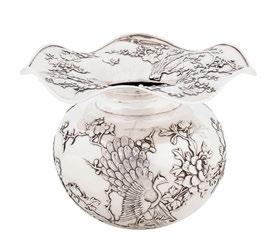
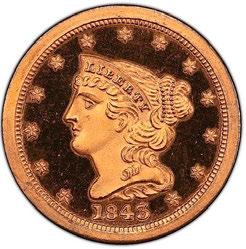
LONDON — Chiswick Auctions presented 125 lots from a 20-year collection of Chinese export silver on October 9. A notable highlight from the sale was an early Twentieth Century spittoon or cuspidor bowl, marked for Tai Chang Long and retailed by Wang Hing. Made in Canton, circa 1920, the globular bowl had a flared rim, all detailed with flowering plants, insects and peacocks. At 5½ inches high by 7 inches in diameter, the “spitting bowl” was bid past its £1,5/2,500 estimate to achieve £4,284 ($5,601), including the buyer’s premium. Further results from the sale will be in a future issue.
COPAKE, N.Y. — Annual traditions were back in swing at Copake Auction on October 12, when the firm conducted its 32nd Annual Bicycle Auction, which offered 522 lots of antique and vintage bicycles, accessories, collectibles, memorabilia and more. One of the notable highlights of the sale was the collection of Wayne and Kim Batten, which comprised 121 lots, all of which sold. From the Batten collection, a Crypto Geared ordinary high-wheel bicycle led the sale. It raced to an $11,563 finish, with premium, completely beating out its $1,5/2,000 estimate. The barn-fresh condition bicycle had a 44-inch front wheel and retained its original logo. Additional highlights from this sale will be featured in an upcoming issue.

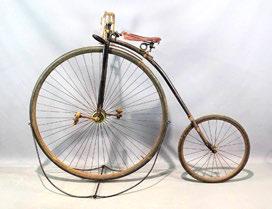
LAMBERTVILLE, N.J. —
All but one of the 322 lots Travis Landry presented in the inaugural auction for Landry Pop Auctions on October 8 found new homes and the sale of comics, trading card games and video games achieved $660,870. Claiming top-lot status at $84,000, including buyer’s premium, was a 1941 copy of Captain America, which was in a graded 8.0 condition and had been owned by author Jack Kirby. One of just 16 in that condition and only seven known to be in better condition, it provided collectors a rare opportunity to acquire a highly ranked Golden Age comic. After the sale, Landry confirmed it sold to a buyer in Oklahoma. A future issue will share more highlights from this sale.

NEW YORK CITY — Swann Auction Galleries’ October 10 sale of Rare & Important Travel Posters featured 198 lots celebrating travel by land, sea and air. Leading the sale was Leslie Ragan’s 1939 poster advertising the New York Central System’s 16-hour New Twentieth Century Limited trip between New York and Chicago. Published by Latham Litho. Co., of Long Island City, N.Y., the Art Deco-style poster measured 40¼ by 26 inches and topped off at $23,750, including buyer’s premium ($12/18,000). More highlights from the auction will be in an upcoming issue.

BRANFORD, CONN. — For more than 60 years, a passion for Pennsylvania and New England Americana drove Thomas F. and Tess L. Schutte to form a stellar collection that Fred Giampietro and New England Auctions presented in a two-day sale, October 10-11. All but four of the 761 lots gaveled down successfully, highlighted by a Saville family record, made in Lexington, Mass., circa 1805. With provenance to the late dealer, Joan R. Brownstein and surviving in excellent original condition, it achieved one of the highest prices of the event on the first day, realizing $27,500, including buyer’s premium. Watch for an upcoming auction review, which will appear in an upcoming issue.
DALLAS — The original touring Iron Throne, molded from the original screenused throne, was the ultimate showstopper when it sold for $1,490,000 to lead Heritage Auction’s Game of Throne: The Auction to $21,115,718 thanks to more than 4,500 bidders worldwide — most of whom were first-time bidders at Heritage and all of whom helped make this the most successful auction of costumes, props and more from a single film or TV show.
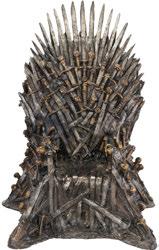
During its brief stays at Heritage’s New York City and Dallas galleries, the Iron Throne incited a bidding war in the October 12 sale that resulted in a 6-minute-long back-andforth between bidders, culminating in the seven-figure price. When it sold, the auction room erupted with applause. For information, www. ha.com or 214-528-3500.
GLENDALE, CALIF. — Forest Lawn Museum presents “Memory and Motion: The Paintings of Hratchya Hayents,” an abstract art exhibition that highlights the triumph of the human spirit and addresses themes of nationality, equality and unity. Featuring more than 20 new and recent works by Armenian-American artist Hratchya Hayents, this is the artist’s first solo exhibition. “Memory and Motion” is on view in Forest Lawn Museum’s front gallery space through January 12.
Born in Cyprus and raised in Soviet Armenia, Hayents was trained in both sculpture and painting at the Academy of Fine Arts before immigrating to the United States in 1980. Upon his arrival in America, he began exploring the world of Abstract Expressionism, which flourished in the United States during much of the Cold War. Serving as a vibrant means
of self-expression, the style has given Hayents freedom with which to examine political and personal experiences.
The paintings in “Memory and Motion” are reminiscent of landscapes, battles, emotions, dancing figures, birds and more. Hayents’s paintings capture the physical interpretation of these concepts through a harmonious blend of action and meditation. They allow the viewer to tap into their subconscious as they absorb the imagery and vast fields of color in each artwork. Through bright colors and swift movements, viewers can imagine the physical action of creating this work. Additionally, Hayents’s background in sculpture is apparent in many of his pieces. He frequently builds up layers of paint on the canvas, before cutting into them with his brush and revealing the various strata of pigment.
Of his own work and inspiration
Hayents stated, “My guiding impulse is the belief that love and peace are the primary drivers of the human spirit, and that colors — like tears — have no nationality.” Hayents — a nine-year employee of Forest Lawn — radiates positivity and kindness. “Hayents’s personality shines as brightly as his artwork, and both are a reminder of how optimism can bring hope to tumultuous experiences,” said exhibition curator and director of Forest Lawn Museum James Fishburne, PhD. “He is constantly exploring new themes and experimenting with different techniques. His art grows and evolves with every painting. We are delighted to showcase his depiction of the Armenian-American experience for the community.”
The Forest Lawn Museum is at 1712 South Glendale Avenue. For information, 323-340-4782 or www.forestlawn.com/museum.

LOUISVILLE, KY. — The Speed Art Museum presents
“Current Speed: Kathia St Hilaire,” the first solo exhibition in the Midwest dedicated to artist Kathia St Hilaire. St Hilaire combines printmaking, painting, collage and weaving to create multifaceted works that illuminate the complex histories of the South Florida Afro-Caribbean communities in which she was raised. This exhibition is the latest installment in the Speed’s “Current Speed” series, which is aimed at introducing the Kentuckiana community to new and emerging artists, as well as celebrated mid-career artists previously underrecognized in the region. Previous “Current Speed” exhibitions have explored the works of Sky Hopinka, Leslie Martinez and Angel Otero. Featuring a new commission alongside other recent works exploring ideas of social mobility, cultural identity and colonial legacies,
“Current Speed: Kathia St Hilaire” is on view through February 9.

“Caco: Benoît Batraville” by Kathia St Hilaire, 2023, reduction linocut in oil-based ink on canvas with skin-lightening cream packaging, steel, aluminum, banknotes, banana stickers, paper, and tires. Courtesy of the artist and Perrotin. Photo by Guillaume Ziccarelli.
Born to Haitian immigrant parents and raised in the Caribbean and African American neighborhoods of South Florida, Kathia St Hilaire (b
1995) was trained as a printmaker and utilizes a printing technique where she creates designs on sheets of linoleum,
carves and weaves together multiple panels and then paints surreal scenes that oscillate between fact and fiction. Her works interweave histories of the past with stories of the present, drawing inspiration from Haitian and Latin American mythology, as well as the Haitian Vodun flags from her childhood, which tell the country’s history and honor ancestral spirits. Using nontraditional materials like banana leaves, stickers, banknotes and protest pamphlets in her collage process, many of St Hilaire’s works in this presentation highlight the lingering impacts of the “Banana Wars,” a series of conflicts consisting of police actions, American military occupations and imperial interventions across Latin America from 1898 to 1934. Returning for her first solo exhibition at the museum, St Hilaire has created a new work in collaboration with curator Tyler Blackwell specifically for the Speed, inspired by her visits to Louisville as well as research conducted on the museum’s col-
CLINTON, MASS. — The Icon Museum and Study Center (IM+SC) presents “Printing Icons: Modern Process, Medieval Image,” an exploration of the revolutionary impact of print technology on the production and distribution of Orthodox icons. From the Seventeenth to the Twentieth Century, printing transformed the way people interacted with and experienced sacred images. The exhibition, led by the museum’s new curator, Justin Willson, showcases works from the Balkans, Eastern Europe and Russia that illuminate how Western techniques transformed icon painting. “Printing Icons: Modern Process, Medieval Image” runs through March 30.
Greeks and Slavs used a variety of techniques to print icons, including tracing, wood-
block, engraving, lithography and tintype, each with its own unique style. Many master printers embraced one or more of these methods, while others rejected icon printing of any kind as disrespectful of spiritual imagery. As production costs decreased, printed icons proliferated, spilling out of the church and beyond the monastery walls into the streets and households. Icons seemed ubiquitous and allpowerful, yet this very success unnerved some religious leaders. In their eyes, printing profaned and cheapened the icon, making it indistinguishable from an ordinary image.
According to Simon Morsink, executive director at the Icon Museum and Study Center, the exhibition’s focus on this rarely explored part of icon history is “an opportunity to see how painters and printers
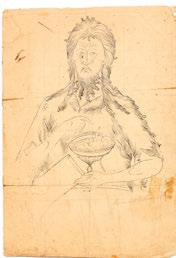
“John the Baptist” by I.N. Merzlekov, 1880s/90s, perevod (transfer) with added penwork and inscription, sheet 10-63/64 by 8-31/32 inches (Columbus, Ohio, Hilandar Research Library).
of the era influenced each other. It is an invitation and a challenge to visitors to consider the nature of the sacred image — its production and reproduction — from a new point of view.”
“Printing Icons: Modern Process, Medieval Image” investigates how painters produced prints of old icons, blending Byzantine models with classical and Baroque elements from European workshops.
Orthodox icon painting workshops collaborated with printers in Vienna, Lviv and Kyiv, where Baroque stylistic forms gained prominence, complementing the austerity of Byzantine imagery with a vision of the world from Western European eyes.
The Icon Museum and Study Center is at 203 Union Street. For information, www.iconmuseum.org or 978-598-5000.
lections. Following the exhibition, the commissioned work will enter the museum’s permanent collection.
The Speed Art Museum is at 2035 South Third Street. For information, 502-634-2700 or www.speedmuseum.org.
or too

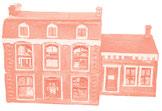

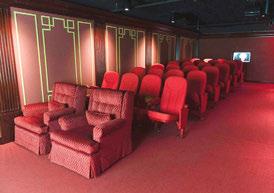
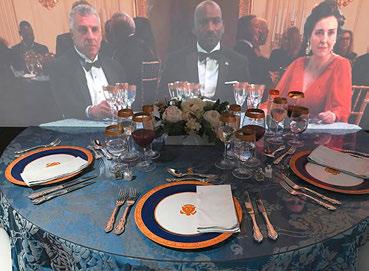
by daRlene SupeRville
WASHINGTON, DC (AP) — Washington is getting a new tourist stop that offers visitors the next best thing to being in the Oval Office: an identical replica of President Joe Biden ‘s office, right down to his desk, the armchairs in front of the fireplace and the weathered family Bible resting on a side table.
And when Biden’s successor takes office next year, the fullscale replica Oval Office at “The People’s House: A White House Experience “ will be redecorated to look exactly like the new president’s office, said Stewart McLaurin, president of the White House Historical Association, which is opening the doors of its technology-driven education center to the public on Monday, September 20.
A separate space in the center called the “Immersive Theater” uses technology to transform into some of the more notable rooms in the White House every five minutes.
“A terrific thing about this Oval Office, unlike the current Oval Office, is if you’re visiting us you can come and you can sit in this chair and be the president of the United States,” McLaurin said, talking about the desk chair as he led The Associated Press on a tour of the center before Monday’s opening.
Few people ever set foot in the Oval Office. It is not on the White House public tour route.
But at “The People’s House,” not only will visitors get to see what one of the most famous offices in the world looks like, they can experience it, too.
“You can take a call from Mr Putin or anybody you’d like to receive a call from, have your photo taken there,” McLaurin said. “You can sit on the sofas or in the president’s chair as you’ve visualized him sitting there and you see him on the news talking with a visitor or a head of state. You can do the same thing right there in front of the fireplace.”
The wallpaper, draperies, rug, furniture, paintings and

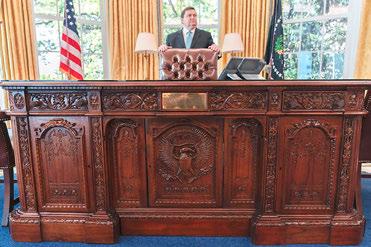
other artwork are exact replicas of the furnishings as they are currently in the Oval Office. The plan is to change the decor with each future president.
“It is exactly like President Biden’s, exactly,” McLaurin said. “Even the family Bible with the weathered elements are duplicated.”
Except for the “digital column” in the center of the room that shows visitors how the
physical office has evolved throughout the presidency. It also turns into a mirror so visitors can see themselves standing in the Oval Office.
Technology is also used to transform the “Immersive Theater” every five minutes into each of the five rooms on the White House State Floor: the East Room, the Red, Blue and Green Rooms, and the State Dining Room. Images on the walls in each room were chosen
by the association’s historians. Visitors can touch the walls to unlock information about the art, furniture or other history that happened there.
“We want people to feel they are in that room of the White House,” McLaurin said.
Leaving the theater, visitors will walk to the replica Oval Office along a stone path resembling the White House colonnade with a view of art made to represent the Rose Garden.
Another exhibit shows how presidents use the White House for work, family and social functions. Visitors can attend Cabinet meetings and vote on a course of action for the president, sit at a table set as it would be for a state dinner to learn how presidents use these glitzy events to conduct diplomacy, or settle into a seat in the family movie theater.
In a separate gallery, the head groundskeeper, florist, lead military aide and chief usher are among White House staff members featured on video explaining what they do.
After entering the education center, visitors will come upon a large model of the south side of the White House, listen to an audio greeting from first lady Jill Biden and watch an orientation film narrated by Martin Sheen, who played a president on television’s The West Wing
The back side of the model looks like a dollhouse, exposing cutaways of the ground, state and residence floor rooms. Visitors can tap electronic kiosks to learn more about the rooms.
The education center covers three floors of an office building at 1700 Pennsylvania Ave., one block from the White House. Technology is used throughout to help teach the history of the executive man-
sion, the presidents and the families who have lived there, and the staff whose work keeps it functioning in its multiples roles as a workplace, a residence and a museum.
McLaurin said the center was designed to be an enhancement to the White House public tour, not a replacement. But with White House tour tickets hard to get, he expects “the vast majority of the people who have the opportunity to visit here will not have the privilege to visit the White House itself.”
Jill Biden visited twice during construction and has planned an event on the White House lawn on Saturday to celebrate next week’s opening.
“This new immersive education center will take visitors on an incredible journey using technology and innovation to bring White House history to life,” said the first lady, a community college professor.
“Especially as an educator, I’m so excited to see it opening to the public.”
Admission is free, but visitors must request timed tickets. The association is planning for 800 visitors every day, with most staying a little over an hour.
The association raised $60 million for construction and initial operating costs, and is working to build a $50 million endowment to sustain operations, McLaurin said.
The White House Historical Association was created in 1961 by first lady Jacqueline Kennedy to help preserve the museum quality of the interior of the White House and educate the public. It is a nonprofit, nonpartisan organization that receives no government funding. It raises money mostly through private donations and merchandise sales, including an annual Christmas ornament.

Craig Andrews, Birdhouse Brokerage, is a 20-year veteran, selling barnwood birdhouses and collectibles for the home and garden with his wife Christa. He said he sells about 3,000 of the birdhouses per year, all of which he makes in his Upstate New York workshop out of recycled barn boards.

Better known as the “ATM Man,” John Arturi of New Milford also specializes in “yard art,” zany figures crafted from scraps of metal and wood and painted in eye-catching colors. Snoopy is the hot dog among the group, made in Laredo, Texas. Arturi, a retired IBM executive, is a Sunday regular as many of the other vendors rely on his ATM machine.
NEW MILFORD, CONN. —
Now in its 48th season, The Elephant’s Trunk Flea Market, just off Route 7, got under way on a soggy Sunday, September 29. It is a scene of second-hand splendor every Sunday from about late April to mid-December, open 8 am to 2 pm, in all kinds of weather, excepting monsoonal rains and snow. Roy Young presides over it all, unable to say just how many vendors fill spots on the fields as it varies from week to week. He has always had an affection for the camaraderie of visitors and vendors that surface there every Sunday.
“We’re here usually up until the week before Christmas,” he said, standing at the vendor gate as regulars from his “community” pass by, offering greetings of “Hey, Roy” and “Good morning, Roy.” With nearly 50 years under its belt, the flea market’s denizens are sometimes chil-
dren of the market’s pioneer dealers from 40 years ago.
The market has evolved from an early invitation from Roy and Ginny Young to set up and sell their merchandise at 490 Danbury Road. Over the nearly five decades, the number of vendors has steadily risen from a handful to several hundred that show up every Sunday to offer everything from vintage clothing, antiques and collectibles to what may euphemistically be characterized as yard sale fare. There’s a gauntlet of food trucks — fried chicken, pizza, hot dogs, lemonade, donuts and breakfast food to fuel shoppers and dealers — plus a group of enterprising musicians with their tip jar, playing a mix of bluegrass tunes and American folk standards who call themselves, The Trunk Band.
The Elephant’s Trunk began
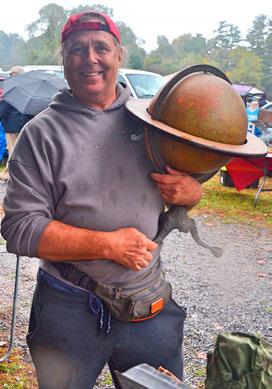
From
a
by
with a “build it and they will come” motto, having arisen from an early attempt by the Youngs to attract people to their clothing store by having local folks conduct tag sales on their front lawn. That business waxed as the clothing store’s business waned and soon the field in back of the Youngs’ farmhouse accepted the growing number of vendors. The Elephant’s Trunk officially opened in 1976. There’s a rubric for entry. The retail crowd is allowed in at 8 am for $3 per person. Early buyers, usually other dealers and pickers, are allowed to shop the field beginning at 5:30 am for $20; another round of early
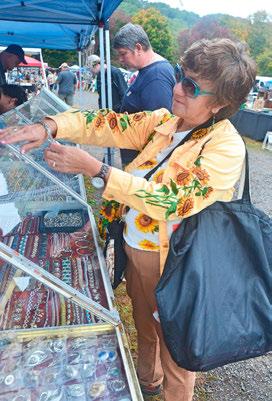
buying begins at 7 am for $10 per person, and admission stops promptly at 2 pm when dealers begin packing up for a 3 pm departure.
On this particular Sunday, the threat of rain persisted throughout the market’s early hours. By 9 am, what began as a humid mist turned into palpable raindrops and vendors who were not blessed with popup canopies began covering up their merchandise with tarps. At least one dealer with a dark sense of humor and a table full

No worries about discovering a long-lost video game favorite. It’s a sure thing that Ismet Trochet of
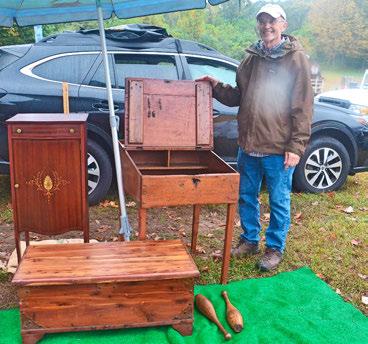
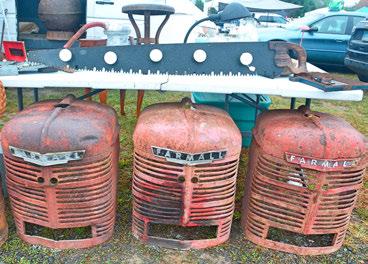
“So what do you do with old Farmall tractor cowlings?” Jim O’Connell of Ballston Spa, N.Y., was asked. “Well, I see them as a pair on either side of a driveway entrance with lighting,” he replied. The big bucksaw was repurposed into a coat hanging rack with old doorknobs instead of hooks (“Kinder on clothing,” said O’Connell). It’s a fair drive from his home near Saratoga to New Milford, so this was just his fourth appearance here this season.

All this and music too! The Trunk Band serenades shoppers with bluegrass tunes and American folk standards near the entrance of the show. Pictured are, from left, Joe Proc (percussion), Frank Infurchia (vocals/acoustic guitar) and Richard Hawthorn (upright bass).
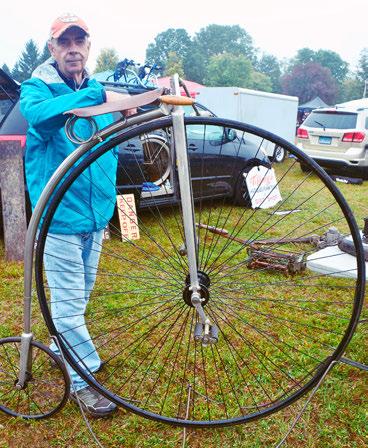
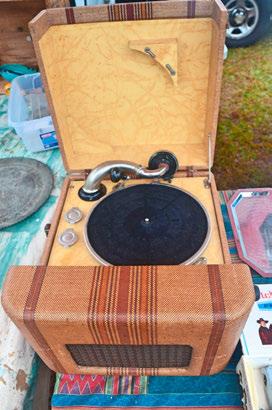
Available from a dealer from New Fairfield, Conn., was this late 1940s record player, which he believed was probably sold by a suitcase company, perhaps Swiss. Interestingly, the machine had no discreet volume control, the size of the needle determining how loudly it played. The two receptacles to the left of the turntable held needles.
of old tools and mechanical parts, justified leaving the tools uncovered because they were already rusted. Umbrellas among the shopping crowd popped open and the market continued.
Under the cover of a large red market umbrella, Craig Andrews of the Birdhouse Brokerage offered barnwood birdhouses for the home and garden, with his wife Christa. A 20-year veteran, he said he sells about 3,000 birdhouses per year, all of which he makes in his home workshop out of recycled barn boards. One of his sources for barnwood is in Goshen, N.Y., while he also gets rough cut pieces from Staatsburgh, N.Y.
His workshop is in the foothills of the Catskill Mountains of Upstate New York, and the birdhouses, in a variety of forms, are handcrafted reclaimed barnwood, rescued from aging barns found in the New York’s scenic Hudson Valley. “Using reclaimed wood,” Andrews said, “ensures that each birdhouse has its own oneof-a-kind personality. Some

customers find them so charming that instead of putting them outside, they use them indoors as décor accents.”
With just a month to go before Halloween, several vendors were featuring spooky decorations, plastic and wooden pumpkins, scary figures and the like. One dealer, however, had a table full of Christmas décor — ornaments, miniature trees, wreaths and more. Alish Starkie of Tom’s Garage, Newington, Conn., explained, “I’m all sold out of Halloween.”
From New Milford, Bill Missonelli, the owner of the Mohawk Barrel Co., was covering both bases with handmade trees and pumpkins crafted from vines. His main offering is a wide variety of barrels, some 400 to pick from.
Like Brimfield, the market runs mostly on cash, although purchasing platforms like Venmo and PayPal are beginning to make headway. Because of this, John Arturi of New Milford rarely misses a Sunday. He is better known the “ATM Man,” with the one machine on the field that other dealers rely
on to grease the wheels of commerce. Arturi also specializes in “yard art” — zany figures crafted from scraps of metal and wood and painted in eyecatching colors. Both veteran dealers and tyros coexist here, some setting up for the first time, others recalling the 1970s when as teenagers they wouldn’t miss a Sunday, exploring the Trunk for great finds. One such vendor was Todd Shamock, still sporting the youthful backwards baseball cap. From Meriden, Conn., the second-generation “Trunker,” said he started here as a young kid in 1980. His box truck was laden with some great pieces, including a pair of barrister bookcases that had already sold by mid-morning.
There was not a lot of furniture. One of the few brown furniture dealers on the field was Jim Bradshaw of Greenwich, Conn. He was showing a writing desk with interesting carved graffiti on the underside of the writing surface, a blanket chest with cedar lining and a sheet music file cabinet with
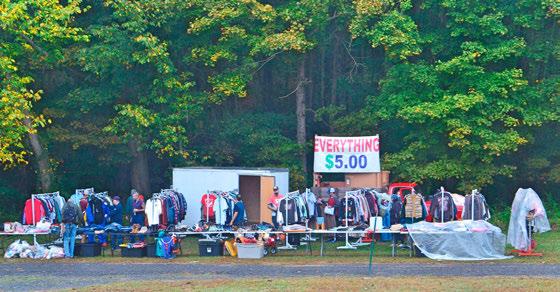
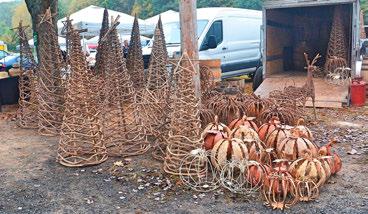
You can’t miss Bill Missonelli’s stand of farmhouse décor. The New Milford owner of the Mohawk Barrel Co., stresses that all of his wares are handmade and local.
New Britain, Conn., dealer Mike Carson specializes in musical gear, including this pro guitar player’s chair, which he was offering for $35. Also available was an accordion, trombone, guitar and banjo.
inlay on the door.
It was only his 12th time showing at the Trunk, said New Milford vendor David Lewis, who added that his collection comprises “pieces that attract my eye.” In addition to the choice examples he showed on top of vintage luggage, he was offering milk glass and Depression glass that glowed under UV light.
Available from an anonymous dealer from New Fairfield, Conn., was a late 1940s record player, which the dealer believed was probably sold by a suitcase company — perhaps Swiss. Interestingly, the machine had no discreet volume control, the size of the needle determining how loudly it played.

Passing by Jim O’Connell’s space, a lineup of three roughlooking old Farmall tractor cowlings caught one’s eye. The Ballston Spa, N.Y., dealer, when asked what somebody might do with them, replied “Well, I see them as a pair on either side of a driveway entrance with lighting.” He also showed a big bucksaw that had been repurposed into a coatrack with old

Right in step with Costco and other big box stores, Alish Starkie of Newington, Conn., knows Christmas is right around the corner and folks are craving holiday décor. “I’m all sold out of Halloween,” she quipped.
doorknobs instead of hooks.
“Kinder on clothing,” he said. A shopper, Jim Tholen of Goshen, N.Y., stopped by and purchased a pair of rusty tilling discs.
Tom Sidlean of Fairfield, Conn., said he specializes in antique and vintage bicycles. He was offering an antique high wheel bike he had acquired at a Pennsylvania show. In his van he had a 1953 Schwinn Phantom.
A relatively new addition to the weekly event is Trunk Band, which sets up near the entrance and serenades shoppers with bluegrass tunes and American folk standards. Personnel change from week to
PORT WASHINGTON, N.Y. — Collectors First Auction Group announced the merger of two of the most esteemed brands in the sports card and memorabilia industry: Lelands and Clean Sweep Auctions. This strategic union aims to provide collectors with an innovative and optimized, one-stop solution that maximizes the value of every item hobby collector’s wish to sell. Collectors First Auction Group will offer four distinct types of auctions, each regularly scheduled throughout the year and targeted to varying levels of collectible interests and pricing. With a total of 12 regularly scheduled auction events per year, collectors can expect a tailored approach that ensures the best outcomes for each piece in their collections.
“At Collectors First Auction Group, we believe that every piece in your collection deserves the right platform to shine,” said Steve Verkman, chief executive officer (CEO) of Collectors First Auction Group.
“Our goal is to help collectors unbundle their collections, maximizing value through tailored auction solutions that bring their items to the right audience at the right time.”
The merger combines the sports collectible knowledge and experience of Lelands and Clean Sweep, two of the most established and highly successful brands in the hobby. Lelands, known as the “Original Sports Auction House,” brings a 40-year legacy of delivering premium sports auction experiences and valuable collecting advice. Clean Sweep has built a loyal and committed client base over 30 years through its dedication to a client-first approach.
Steve Verkman, president of Clean Sweep and a long-time hobby veteran, will assume the role of CEO for Collectors First Auction Group, overseeing both the Lelands and Clean Sweep brands. Michael Heffner, president of Lelands, will act as special advisor to the CEO during the transition period,
ensuring smooth and uninterrupted operations while continuing to provide his 40 years of expertise and guidance as needed.
Lelands and Clean Sweep will combine their expertise and resources but will continue to operate as they have for decades, with no significant changes planned for either brand’s auction operations or marketing. All sports collectible experts and auction support personnel from both brands will continue to provide auction and client services.
“This merger represents an exciting opportunity to enhance the services both brands provide to our valued clients,” said Heffner. “By joining forces, Lelands and Clean Sweep Auctions will be able to offer even greater value and more tailored auction solutions, while maintaining the same trusted operations and marketing strategies that have served our clients so well for decades. Rest assured, our commitment to delivering exceptional auction experiences remains unchanged.”
Clean Sweep’s current auction, closing on October 9, is one of their most interesting and diverse to date. Key lots include Old Judge cards of Mike “King” Kelly and Harry Wright, a 1913 Voskamp’s Coffee Pittsburgh Pirates Honus Wagner, an E102 Ty Cobb (PSA 2 mk), T206 Ty Cobb (green background, PSA 1.5), T206 Cobb (bat on shoulder, PSA 4) and a Cy Young Portrait (PSA 5). The auction also offers a wide range of vintage baseball cards, autographs and programs. In addition, high-grade and premium basketball, football and boxing cards, tickets and autographs are featured, including a rare 1984 Star 101 Michael Jordan true rookie card. A special section highlights a historic collection of presidential autographs, with signatures from nearly every president, from Washington to Carter. View the auction at www. cleansweepauctions.com.
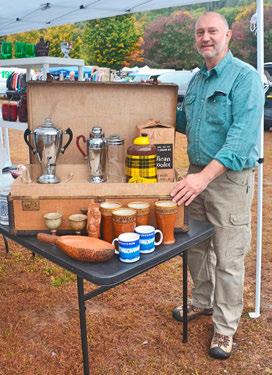
Only his 12th time showing at the Trunk,
vendor David Lewis said he is attracted to “pieces that attract my eye.” In addition to the choice examples he showed on vintage luggage, he was offering milk glass and Depression glass that glowed under UV light.
week but the core members are Joe Proc on percussion, Frank Infurchia on acoustic guitar and vocalist, along with Richard Hawthorn playing the upright bass. No pets are allowed at the market, but it welcomes “Treasure Hunters, Antiques Collectors, Farmers, Foodies, Upcyclers, Deal Seekers and Entrepreneurs of all kinds,” according to its website.
There are farmers on the field who bring fresh produce as late as early November. On this Sunday, Brown Dog Farm, organic growers from Gaylordsville, Conn., had tables burgeoning with heirloom tomatoes, garlic, greens and vegetables.
The Elephant’s Trunk Flea Market is at 490 Danbury Road. For information, 860355-1448 or www.etflea.com.
Antiques, primitive furn, LR, DR, collectible adv. Tins & tinware, cobalt bottles, art (prints), bric-a-brac & HH
RAIN OR SHINE ALL MUST GO! Fri., Sat., & Sun., Oct. 18-19-20, 9-1
Great holiday shopping -Church St.-Crown to 100 York Cor. Crown University Tower #14-0 parking in 2 lots or use meters. Sale by Tina H. Swirsky

“Spring,” made by Daniel Cottier for Daniel Cottier & Company, circa 1873-85, leaded and stained glass. Metropolitan Museum of Art, New York, 2007.43; Gift of the Estate of Virginia Guard Brooks and the Guard family, 2007.
ONLINE — Around 1870, the Glasgow-born designer and entrepreneur Daniel Cottier (1838-91) founded the decorating and art-dealing firm Cottier & Co., in London. For more than four decades, the company was a leading global producer of stained glass in the Aesthetic style for religious, public and residential buildings. Its spectacularly colorful achievements will be the subject of a Zoom evening talk on November 12 for the Art Glass Forum | New York by Max Donnelly, curator of furniture and woodwork 1800-1915 at the Victoria and Albert Museum, London.
Cottier’s London studio took on assignments in Britain, Ireland and France, while its New York branch served clients around the US and Canada, and it operated partnerships in Australia. Donnelly will explore Cottier & Co.’s prestigious commissions including Boston’s Trinity Church, Harvard’s Memorial Hall and Pittsburgh’s Clayton mansion, owned by Henry Clay Frick. Donnelly will also discuss unusual projects, such as a window presented to Queen Victoria (who disliked it so much that it had to be remade), and extraordinary church memorial windows made for the eighth Earl of Northesk, which Vincent van Gogh described in a letter to his brother Theo.
V&A Curator Max Donnelly is the co-editor with Petra tenDoesschate Chu of the prizewinning monograph Daniel
Cottier: Designer, Decorator, Dealer (Paul Mellon Centre, 2021). Among his V&A publications are contributions to The Story of Scottish Design (2018) and the book Christopher Dresser: Design Pioneer (2021). The Art Glass Forum, a nonprofit founded in 2000, supports scholarship about glass, from ancient shards to contemporary experiments. The November 12 online event, 6:30 to 7:30 pm, is free of charge to AGF members (all dues and contributions are tax-deductible). AGF members automatically receive the lecture link within 24 hours of the event; no registration or RSVPs are necessary. Non-members can purchase tickets for $10 through Eventbrite (Zoom link will be included in Eventbrite registration confirmation email). For details: www.artglassforumny.org and artglassforumny@ gmail.com.
Rhode Island Post Card Club
NORTH KINGSTOWN, R.I. —
The Rhode Island Post Card Club’s Annual post card exhibit and sale will be held from 9 am to 3 pm, on Sunday, October 27, at the Washington Masonic Lodge located at 1515 Ten Rod Road in North Kingstown. The show features 14 dealers from throughout New England, who will offer vintage holiday and picture post cards as well as books, photographs, historic documents and other ephemera for sale. Whether you are interested in views of your hometown as it looked in the last century or old-time post cards featuring Halloween greetings, Santa Claus, amusement parks or some other topic, this is the place to find them. Admission is $4 at the door. The hall can be

H. Clappsaddle,
found by following Route 102 north from Route 4 or Route 102 south from Route 95. This section of Ten Rod Road is also the merged section of R.I. Routes 2 and 102. For information, find the Rhode Island Post Card Club’s page on Facebook.
The Stretch Glass Society ONLINE — Stretch Glass with Optic Patterns will be the topic of the The Stretch Glass
Society’s November 14 Stretch Out Discussion (8 pm EST). If optic patterns are to be viewed through a piece of glass, what does that mean exactly? Is it tactile? Come share your glass with patterns you know or think are optic. You’re also welcome to share new finds or pieces you’d like help identifying. A photo album picturing stretch glass with both optic and non-optic patterns will be posted on our website www.stretchglasssociety.org a week or so prior to the meeting. Readers are welcome to join us to learn about optic patterns and share any stretch glass they’d like to learn more about. Further information is available by email, info@stretchglasssociety.org.
Connecticut Ceramics Circle
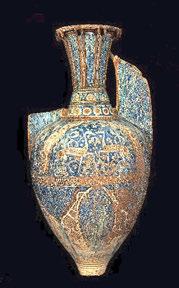
Alhambra vase decorated with gazelles, Spain, Fourteenth Century. Earthenware with pigment and glaze, 52¾ inches high. Museo Archeological de la Alhambra, Granada, Spain. R290. Photos and credits courtesy of Denise Patry Leidy, PhD.
ONLINE — On Monday, November 11, from 2 to 3 pm, the Connecticut Ceramics Circle presents “Back and Forth; Clay and Glass; China and West Asia, Sixth – Twelfth Century,” a lecture by Denise Patry Leidy, PhD, the Ruth and Bruce Dayton curator of Asian Art, Yale University Art Gallery, New Haven.
Multiple factors contributed to the astonishing vitality that characterized the Chinese ceramics industry from the Sixth to the Twelfth Century. These include heightened interchanges between the south and the north, the longstanding Chinese tradition of cross-craft exchanges in shapes and patterns, and the introduction of new forms and designs. The latter was spurred by the expanding trade in prestige goods, particularly metal and glass from West and Central Asia, which reached China both overland on the fabled Silk Roads and by sea. Archaeological discoveries combined with scientific examination of works of art have shown that a type of porcelain,
with kaolin in the body and vitrified glazes, was first produced in China in the second half of the Sixth Century, often in the shape of small cups that echo imported West and Central Asian glass forms. The development of high-fired white bodies spurred technical innovations throughout north China as well as in ceramic-producing centers in Iraq and Iran. These ultimately led to the invention of both tin-glazing and luster, technologies that underlay European majolica.
Leidy currently serves as the Ruth and Bruce Dayton curator of Asian Art at the Yale University Art Gallery in New Haven, Conn. Prior to joining Yale, Leidy served as the Brooke Russell Astor curator of Chinese Art (emerita) at the Metropolitan Museum of Art in New York, in curatorial positions at The Asia Society in New York, and at the Museum of Fine Arts, Boston. She is endlessly fascinated by the development and movement of technologies, ideas and images within and between Asian cultures, and between these centers and those in Africa, Europe and the Americas. In addition to curating exhibitions, Leidy has published and lectured widely exploring topics in Buddhist art, Chinese and other Asian ceramics, and East Asian lacquer. Her publications include Buddhist Art: Its History and Meaning; Mother-ofPearl: A Tradition in Asian Lacquer; Wisdom Embodied: Chinese Buddhist and Daoist Sculpture in the Metropolitan Museum of Art; How to Read Chinese Ceramics; and the recently released Celadon on the Seas: Chinese CeramicsNinth - Fourteenth Century The lecture will be held remotely on Zoom and will be open free of charge, but guests must register in advance to receive a link. Register at: www. cceramicsc.org.
International Perfume Bottle Association
ONLINE — The International Perfume Bottle Association is seeking new members. Join us today and explore an educationoriented community with more than 500 worldwide collectors, a virtual museum including more than 10,000 vanity items, an online library with more than 150 magazines. Visit www.perfumebottles.org and subscribe to our YouTube channel.
Greenwich Decorative Arts Society
GREENWICH, CONN. — On Monday, November 4, at The Bruce Museum (1 Museum Drive), from 1 to 3 pm, the Greenwich Decorative Arts Society presents “An American Renaissance, Beaux-Arts Architecture in New York City,” a lecture by Phillip James Dodd. Born and raised in the United Kingdom, Dodd is an alumnus of the Prince of Wales’ Institute of Architecture in London. He moved to the US more than 20 years ago and, in 2015, after

An American Renaissance, Beaux-Arts Architecture in New York City by Phillip James Dodd. The Images Publishing Group, 2021.
training with some of the most recognized classical architecture firms in the country, founded his eponymous design firm Phillip James Dodd: Bespoke Residential Design LLC. His designs can be found in New York, Greenwich, Conn., Palm Beach, Fla., and as far as away as Bangalore, India. In 2022, he was the recipient of the Elizabeth L. and John H. Schuler Architectural Award for the design of a new Spanish Mediterranean oceanfront estate in Palm Beach. Dodd has a master’s degree in architecture from the University of Notre Dame, and an undergraduate degree in architecture from the Manchester School of Architecture. He is a Fellow Emeritus of The Institute of Classical Architecture & Art and serves as a commissioner on The Town of Greenwich Historic District Commission. In 2013, he was elected by his peers as an Honorary Fellow of the INTBAU College of Traditional Practitioners, an invited international body for practitioners in traditional architecture, under the auspices of the former Prince of Wales. With a rich academic and practice-based background, Phillip is recognized as an international authority on classical and traditional architecture. He has lectured extensively throughout the United States on the subject of classical, vernacular, and Beaux-Arts architecture. In 2023, Dodd was invited to present the John G. Winslow Lecture for the Historical Society of Newport County, which was hosted from inside the great hall of The Breakers. In addition to his design work, Dodd is also the author of several best-selling books: The Art of Classical Details: Theory, Design & Craftsmanship (2013); An Ideal Collaboration (2015); The Classical American House (2017); and An American Renaissance: BeauxArts Architecture in New York City (2021). His most recent volume on the architecture of the Gilded Age includes a foreword by Julian Fellowes (the acclaimed creator of Downton Abbey and the HBO series The Gilded Age), and has been featured in Architectural Digest, The Associated Press, The New
Criterion, Washington Post and World of Interiors
Guests are welcome but space is limited. Admission for nonmembers of the Greenwich Decorative Arts Society is $30 and can be paid online. For reservations and information, greenwichdecorativearts@gmail.com or www. greenwichdecorativearts.com.
Victorian Society New York NEW YORK CITY — From the opulent mansions of Fifth Avenue to the original interiors of Brooklyn’s brownstones, HBO’s The Gilded Age has brought to life a New York City lost to the demands of progress, changing tastes, and the march of time. Join us for a special evening with Bob Shaw, the show’s Emmy-
winning production designer, to learn how he balances historical accuracy against creative license, the penchants of a modern audience, and the realities on the ground to resurrect Gilded Age New York City.
On Tuesday, November 12 at 7 pm, Victorian Society New York presents “Keeping It Real: How Bob Shaw, Production Designer of The Gilded Age, Resurrects Nineteenth Century New York.”
The talk will take place in the Veterans Room and Library of the Park Avenue Armory (643 Park Avenue). Designed by Louis Comfort Tiffany and Stanford White and completed in 1881, these historic interiors are among the few remaining American Aesthetic Movement
spaces and the only fully extant interiors created by Tiffany’s cooperative design firm, Associated Artists. Reception to follow. Shaw’s work as a production designer includes Martin’s Scorsese’s film The Irishman, for which he was nominated for an Academy Award for Best Production Design, and the television shows The Sopranos, Mad Men and Boardwalk Empire, for which he received Emmy nominations, winning for the latter two.
All proceeds benefit the preservation efforts of the New York Metropolitan Chapter of the Victorian Society in America. General admission is $70, for VSNY members it is $50. For information, www.vixcony.org.
EDITED BY CARLY TIMPSON

SAN FRANCISCO — The Museum of the African Diaspora (MoAD) is pleased to announce “Liberatory Living: Protective Interiors & Radical Black Joy,” a group exhibition of innovative furnishings, wall treatments, lighting and more by contemporary African diasporic designers, on view through March 2. International artists, ceramicists and furniture-makers across all three floors of the museum will present domestic technologies, products and environments that center safety, belonging and the preservation of the Black radical tradition. “Liberatory Living” will also show how Black Joy has historically emerged from these interior spaces, celebrating the revolution of design alongside the design of revolution.
“This special exhibition is the first of its kind at MoAD, highlighting luminaries from the field of design while critically centering how Black domestic and home interiors serve as sites of care and rest,” said Monetta White, executive director. “As we do with our contemporary art exhibitions, it’s our hope that engaging with decor and ornament demonstrates the multiple ways we uphold and bring visibility to different creative practices of the African diaspora.”
Organized by Key Jo Lee, chief of curatorial affairs and public programs, “Liberatory Living” will unite the late feminist theorist Bell Hooks’ concept of “homeplace” with scholar Elizabeth Alexander’s notion of the “Black interior.” Both ideas sustain a sense of belonging and incubation of Black liberatory thought, serving as the throughline for the exhibition. Eye-catching and inventive design objects, furnishings, fine art and more by Malene Barnett, Michael Bennett, Sheila Bridges, dach&zephir, Andile Dyalvane, Sandra Githinji Studio, Angela Hennessey, King Houndekpinkou, Kapwani Kiwanga, Chuma Maweni, Nandipha Mntambo, Zanele Muholi, Zizipho Poswa, Cheryl Riley, Norman Teague and Lina Iris Viktor will give form to these urgent concepts from Hooks and Alexander.

“Working across disparate mediums, geographies and philosophies, the designers and artists in ‘Liberatory Living’ respond to the enduring need to construct a space of one’s own,” said Key Jo Lee, chief of curatorial affairs and public programs.
“Their practices insist upon safekeeping and harnessing joy against diasporic histories of uprootedness, dwelling within the restorative power of inhabiting beauty.”
The first floor of the museum will include “Love Quest” (2022) by multidisciplinary artist Nandipha Mntambo, a concave, basin-like chair constructed from leather and timber. The work cradles its sitter — almost like a second skin — within ruffled, textured leather folds. A sculptural floor lamp by Sandra Githinji Studio nearby also makes reference to corporeality and pre-colonial values. The textural, wooden body of the lamp references African hairstyles, with the light source symbolizing communing with the divine realm. Along the corridor, framed archival pigment prints from Kapwani Kiwanga’s “Greenbook” series center a history of move-
ment for African Americans. The works on paper are reproductions of annual state-by-state listings published in a guidebook from 1936 to 1966, detailing safe places to lodge and dine for African-American motorists traveling throughout the country. In the second floor’s Dignity Health Gallery, designer and social practice artist Norman Teague will exhibit his large scale “cabinet of curiosities,” which recalls their function as a precursor to modern museums; behind this will be a special wallpaper by Zanele Muholi, which wields black-and-white self-portraiture to radically depict Black existence. Near one of Teague’s playful, kinetic “Sinmi Stool” pieces will be a four-foot tall bronze sculpture by Zizipho Poswa titled “Mam’uNoSekshin” (2023), which represents nature’s bounty and life-affirming role. Designer Sheila Bridges will exhibit wallpaper using her renowned “Harlem Toile du Jouy” and “Zwarte Piet” patterns, which reexamine and sharply recast the Toile du Jouy pattern from Eighteenth Century France and the folkloric Dutch holiday imagery of Sinterklaas and his servant, respectively. Sculptural furniture by designer Michael Bennett and ceramics by Franco-Beninese artist King Houndekpinkou imbue traditional forms with newly imagined sacred qualities. Bennett’s “Pews” (2023) seating brings together five rounded, abstract shapes inspired by African diasporic gatherings, while King’s glazed stoneware vessels reference altars of the Voodoo tradition in Benin. In a similar approach, multidisciplinary artist and textile designer Malene Barnett will debut new ceramic tiles, vessels and wallpaper in the Bates Gallery. Inspired by her grandmother’s and mother’s love of ornament, she uses vintage and various forms of clay to create unique wall tiles and pots that venerate craft as a devotional practice and pay tribute to kinship.
The third floor will feature ceramic furniture by Chuma Maweni from his “Imbizo Ibanjiwe” series, where sophisticated
finishes, patterns and shapes celebrate communal gathering. Advancing methods from traditional Nguni pottery, Maweni will exhibit a hand-crafted dining table and chairs symbolizing a modern-day “imbizo,” a forum or meeting called by a traditional Xhosa or Zulu leader. Also guided by his spiritual connection to Xhosa legacy and culture is Andile Dyalvane, whose earthenware works bond with both the land and his ancestry. Further embracing the interplay between the natural world and the indoors, French design duo dach&zephir will present brass lighting sources inspired by tropical plant leaves found along the rivers in the Guadeloupe islands in the Caribbean. A deep
consideration of organic forms also influences “Paw Paw’s” dining chair from Bennett, which uses African Sapele wood and augmented proportions to challenge rigid domestic norms found throughout Western furniture design. In a separate gallery, inventive furniture by Cheryl Riley and intricate mixed-media works by Lina Iris Viktor and Angela Hennessy will use everyday domestic materials like silk, wire, or fabric to illuminate forgotten histories, often excavating tradition to envision futures based upon care and place-making.
Museum of the African Diaspora is at 685 Mission Street. For information, www.moadsf.org or 415-358-7200.

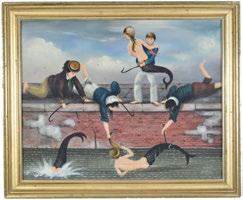
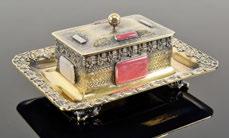
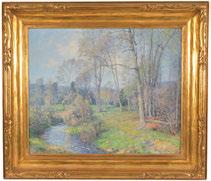

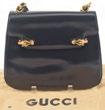

Previews: Wednesday 23rd - Saturday 26th 10am-3pm & Sunday 27th 8-10am or in advance by appointment.
Join us for this fine art and antiques sale of 625 lots, beginning with 250 lots of jewelry and fine silver, followed by the antiques and fine arts portion of the auction that includes over 200 works of fine art, period furniture and clocks, ephemera, art pottery and estate carpets. Catalog online, bid at our website, in person at the gallery, or at liveauctioneers nvaluable i

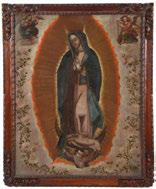
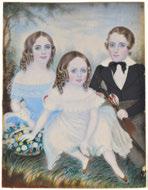


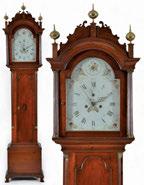
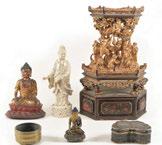


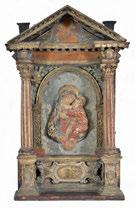
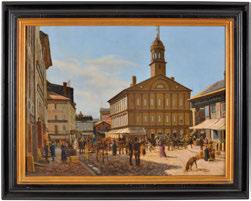




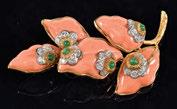
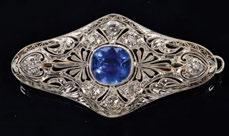
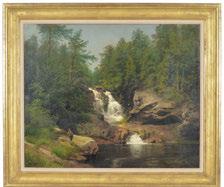
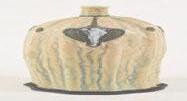
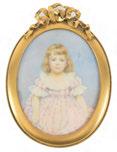
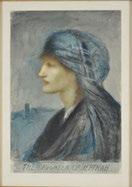
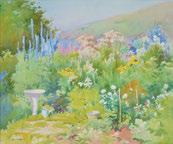
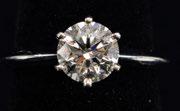
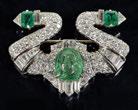
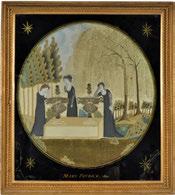





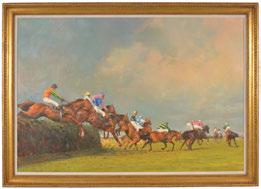
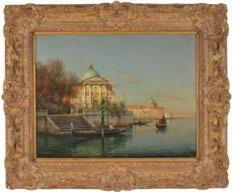


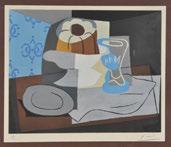
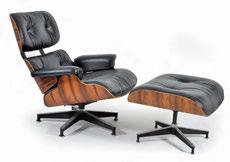
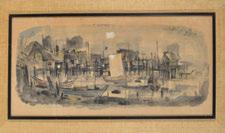



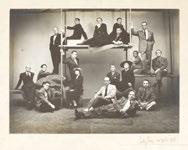

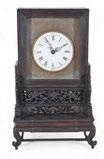


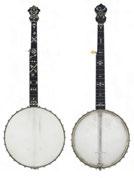
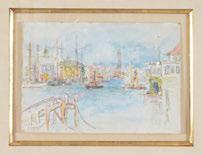
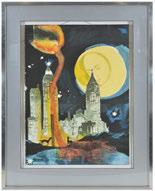
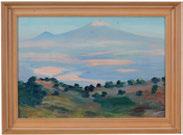
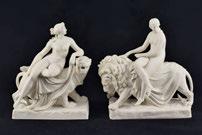


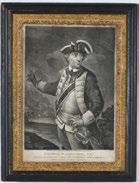

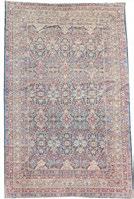



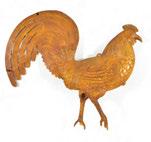
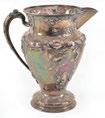
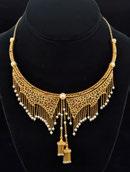









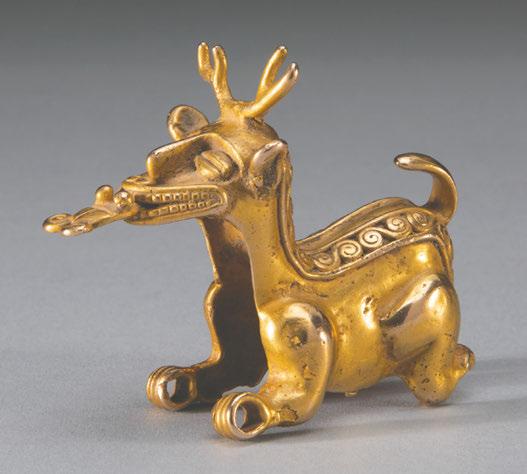

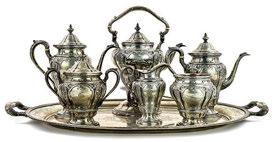
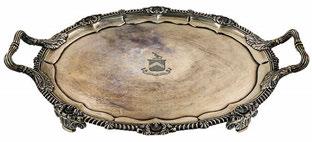
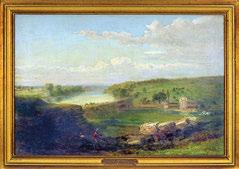

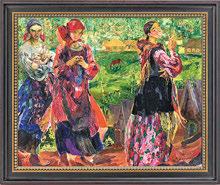
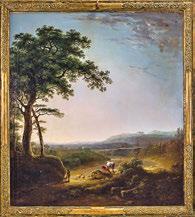







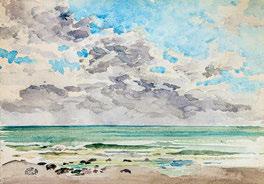
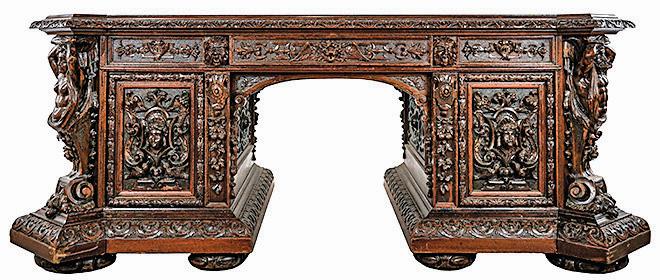
Merrill’s Auctions is excited to present Continental furniture & art from Dr.& Mrs. George G Hart of Lake Placid NY, Fine silver from a Westchester co. NY estate, jewelry, watches and Masonic regalia from a Burlington VT estate.
Silver includes three very scarce Gorham Martele Art Nouveau vases; Several fine tea services by Tiffany, Mappin and Webb, Dominick and Haff; A pair of Gorham lion’s paw candelabra; 18th c London Salvers, Flatware and more. Vintage watches and jewelry include a Masonic ring with a 3 CT round cut solitaire diamond.
Also of note are a group of Leica II & III cameras from an advanced Connecticut collector; An Ansco “Spy” camera; Zeiss Ikon cameras and more.
A group of fine bronzes including E A Lansere (RU 1848-1886) A shepherdess with calves; Isadore Bonheur (FR 1827-1901) a rearing Bull; Aristide de Ranieri (IT 1880-1914) a girl with cat; Adolph Alexander Weinman (1870 - 1952) “Rising Day”.
There are paintings including an important watercolor seashore landscape “The Sea Grey & Silver” by James McNeil Whistler, descending directly in the Whistler family and documented in the Whistler catalog resume; an outstanding pair of Columbia River scenes by James Everett Stuart (AM 1851-1941); Ralph Albert Blakelock (AM 1847-1920) Landscape; A pair of Russel Smith (AM 1812-1896) scenes of Valley Forge and the Saco River; A pair


of Romantic scenes on silk by Charles Edward Conder (EN 1868-1909); early 20th c Russian painting of 3 women and a baby by Philip Andreevich Maliavin (1869-1940).
Of local interest is an enormous archive of Bread and Puppet theater ephemera including show posters, pamphlets and books dating back 40 years, Early woodblock prints by Sabra Field and Mary Azarian and more.
BID ONLINE, IN PERSON, BY ABSENTEE BID, OR PHONE BID, AND SIGN UP FOR EMAIL NOTIFICATIONS ON OUR WEBSITE: WWW.MERRILLSAUCTION.COM TERMS: Major credit cards, wire transfer, cash, or approved check. All Items Sold As Is with No Implied or Expressed Warranty.
Specializing In Estate & Antique Auctions – Three Generations Selling Since 1931 Mailing Address: PO Box 558, Williston, VT 05495
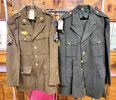

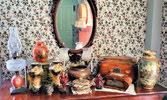

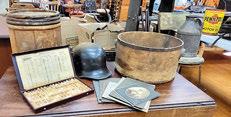







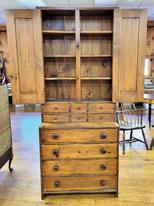


Antiques, Custom Furniture,Vintage Bicycles, Military, Art, Books, & Much More at The Langdell Homestead Barn
697 Isaac Frye Highway Wilton, NH
(Isaac Frye Highway is North off Route 101 opposite Brookside Gas Station)
Saturday November 2nd 10am
We’ll be closing out the 2024 auction season with a Fun Filled Old-Fashioned Country Auction featuring antiques, custom furnishings and collectibles from multiple southern New Hampshire estates. Included among the interesting items up for sale will be a Shaker tall step-back cupboard with drawers & one board sides (83”H x 34”W x 17”D); a 3 over 4 drawer maple chest on frame; English card table: bird’s eye maple inlaid D-shape card table; enormous pair of Renaissance cast iron figural andirons (51”H x 42”D); a collection of 20 road signs; 5 vintage bicycles including Elgin, Rollfast, J.C. Higgins, and Columbia; decorated blanket box; flax wheel; “Fire House” Windsor arm chairs; other candle stands and side tables; 22” dia. cast iron caldron; Griswold and other cast iron items; Army uniforms; machinist tools; ammunition; wooden measures; back packing baskets; snowshoes; many smalls & much more! Come join us for another fun-filled auction!
For additional information, please see our ad and photos at AuctionZip.com ID# 26648
Previews: Friday Nov. 1st 10am–4pm & Day of the Sale 8–10am
Earlier previews by appointment
TERMS: Cash or Good & Sufficient Check day of sale All

A lifetime Collection of 18th Century American Antiques. Featuring over 100 pieces ofEarly Opaque& Air Twist Stemware. Over 40 pieces of New England Redware. A fine collection of 18c American CoinSilver, Homespun Textiles, Oil Paintings and Watercolors from several known Maine artists,18th & 19th century formal & country furniture, Carved Decoys, an entirelibrary of antiques referencebooks, &AppropriateAccessories.
Online Auction Starts Monday, October 28th at 5pm https://gurley-antiques-gallery.liveauctioneers.com
For More Information Call(207)229-04032 In Person Preview Friday October 25th and Saturday October 26th from 9am to 4pm 944 Cape Road. Limington, Maine. Or call for an Appointment (207) 229-0403 Please feel free to call us for further description and additional photos
TERMS: All Items Sold AS IS WHERE IS. 20% Buyers Premium. Cash & Check Accepted. Credit Cards will be charged 23% Buyers Premium. Items must be picked up on location at 944 Cape Road. Limington, Maine. Pickup Days will be Tuesday October 29th through Saturday November 2nd from 9am to 2pm. Failure to pick up items within this time frame will result in forfeiture of sale. Shipping is available for smaller items. The buyer is responsible for all shipping costs, including materials, and insurance. We reserve the right to use a third-party shipper for fragile items. We urge buyers to research the cost of shipping before bidding. There will be no refunds. Auctioneer Joshua Gurley ME Lic#AR1358
















12 Providence St, Millbury, MA 01527
Office: 508-865-1009
Mobile: 508-581-7645
Email: BCA12@aol.com Auction license #AU100084

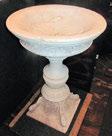



ONLINE-ONLY AUCTION: Absentee Bid Now or Bid Live Starting at 12 Noon Nov. 2 Preview 24/7 on liveauctioneers.com.
Search Courtney auctions or scan this code. In-house preview open by appointment only. Please call or email for an appointment.

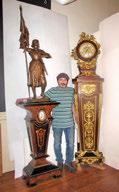












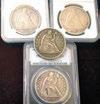

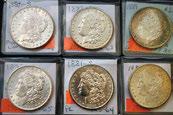
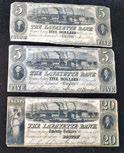













Canada Book Auctions is pleased to announce an upcoming sale of Books, Posters, Autographs, works of Art and Collectibles. Material from the Beat generation, pop art, music, hippies and drugs/pharmacopia collectibles.
Many rst edition and signed books and ephemera. Jack KEROUAC, William BURROUGHS, Charles BUKOWSKI, Allen GINSBERG, Timothy LEARY, Ken KESEY, Hunter S .THOMPSON, Abbie HOFFMAN, Leroi JONES, BLACK PANTHER, Robert CRUMB and other comic art.
1960s music, hippie culture, rare Toronto scene YORKVILLE and ROCHDALE COLLEGE. Also including a collection of original psychedelic music posters from California featuring: rst issue: THE GRATEFUL DEAD Skeletons and Roses, Avalon Ballroom, 1966.
Pop Art including Andy WARHOL, Robert RAUSCHENBERG, Roy LICHTENSTEIN, Claes OLDENBERG, Peter MAX, etc.
Images, top row: Lennon, John. Original pastel sketch. Self-portrait with Yoko Ono. e Beatles. Magical Mystery Tour Booklet, signed by all four Beatles, with drawings. Garcia, Jerry. Signed photo, framed with original drawing.
Art & Prints ✴ Ephemera ✴ Horses & Husbandry ✴ Photography ✴ Fine Books




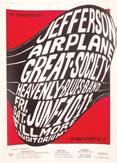
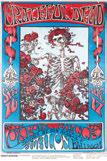
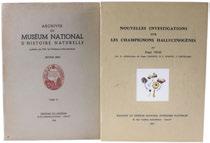
Please contact our office for consignment information.


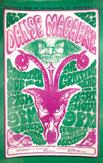

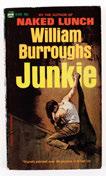
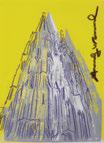


Upcoming Auction from SJ Auctioneers
Silverware, Toys, Decor, Glass, Art
Online Auction October 27, 2024 • 6pm edt Pre-bidding is available now at LiveAuctioneers.com www.liveauctioneers.com/catalog/344350_estate-silverware-toys-decor-glass-art

















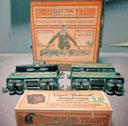





SJ Auctioneers is honored to provide its finest selections of jewelry, silverware, trains, toys and collectibles from artists designers and silversmiths like: Cartier Tiffany, & Co. Dominick & Haff, Jose Hess, Emile Delaire, Gorham Movito, Reed & Barton, Watson, Wallace, William B Kerr, Sackermann Hessenberg & Co, Italian Vetreria Murano, Arte, American Flyer, Lionel, Nintendo, Tootsie Toy, Buddy L, Matchbox Lesney
Have a similar item to sell? email sjauctioneers@gmail.com • 646-450-7553 Buyer premium 28%. • We accept all major credit cards & wire transfers.

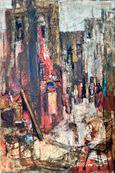
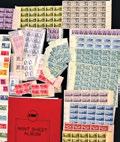








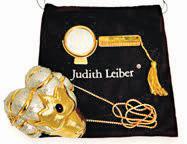




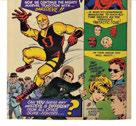


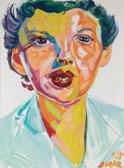

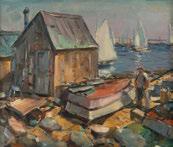
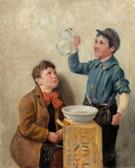
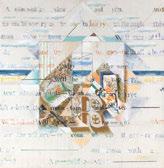


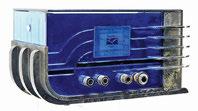
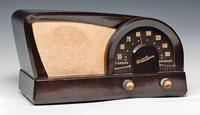
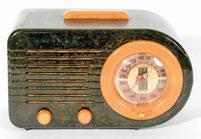


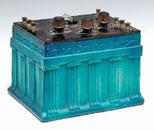
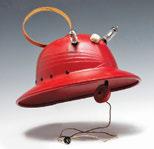





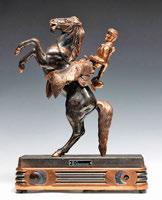



















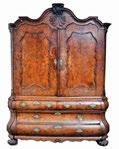








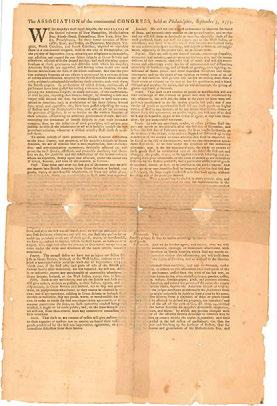



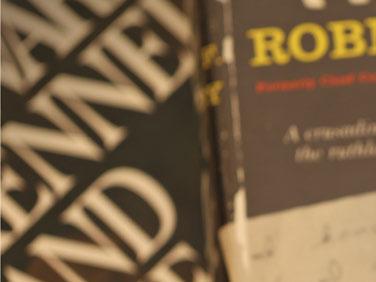

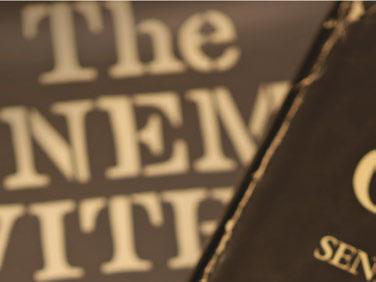






A few highlights include: Chair table in red paint, various Windsor chairs, curly maple desk, curly maple 4 and 5 drawer chests, paint decorated blanket box, Q.A. tilt top stand, banister back chairs, tapered leg stand, 6 drawer chest on C&B feet, cross stretcher Pembroke table, arrow back bench, 18th Century flintlock blunderbuss, flintlock musket, signal cannon, C.W. sword, coins include Morgan and Peace silver dollars, sterling silver flatware and smalls, Japanese headrest, paintings, plaster relief signed Robert Kraus Boston, nautical paintings and related items, iron garden fence, bronze dogs, slot machine, neon sign, early smalls, WWI and II military lots, Indigenous American bow and beaded vests, early Teddy bear, glass and China, pocket watch, Space shuttle banner, signed B.B. King poster, copper cookware, medals, badges, insignia, Stanley planes, 20th Century Sulky weathervane, miniature carved bird, political pen wipes, military portrait Caaman Newberry (friend of John Kennedy), early silk needlework, Howard-Miller Shaker style grandfather clock. Be aware: timed bidding is extended for last minute competing bidders.



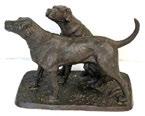


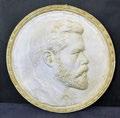
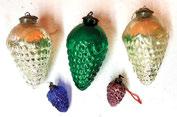




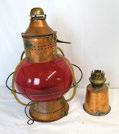





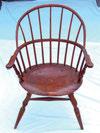

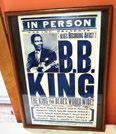
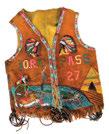






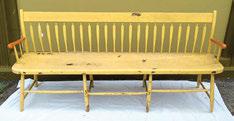
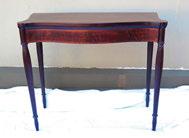

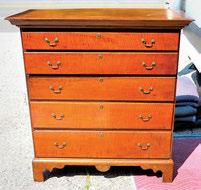
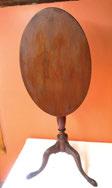
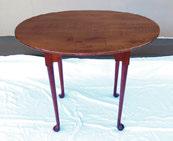




Alfred Thompson Bricher, Frederick Carl Frieseke, Edward Henry Potthast, Dale Nichols, Thomas Worthington Whittredge, Willard Leroy Metcalf, John F. Francis, Richard Hayley Lever, Peder Mork Monsted, Felix Ziem, Frederic Sackrider Remington, David Johnson, Francis Augustus Silva, Wolf Kahn, Jasper Francis Cropsey, Jane Peterson, Levi Wells Prentice, Colin Campbell Cooper, Sanford Robinson Gifford, Frederick Mulhaupt, Guy Carleton Wiggins, Blanche Lazzell, Birge Harrison, Francis Coates Jones, William Mason Brown, Walter Launt Palmer, Albert Bierstadt, Larry Rivers, William Harnett, Edmund Greacen, John George Brown, Pauline Lennards Palmer, Tom Yost, Henry Augustus Ferguson, John Carlton Atherton, Selden Connor Gile, William Aiken Walker, Charles Courtney Curran and more ...


